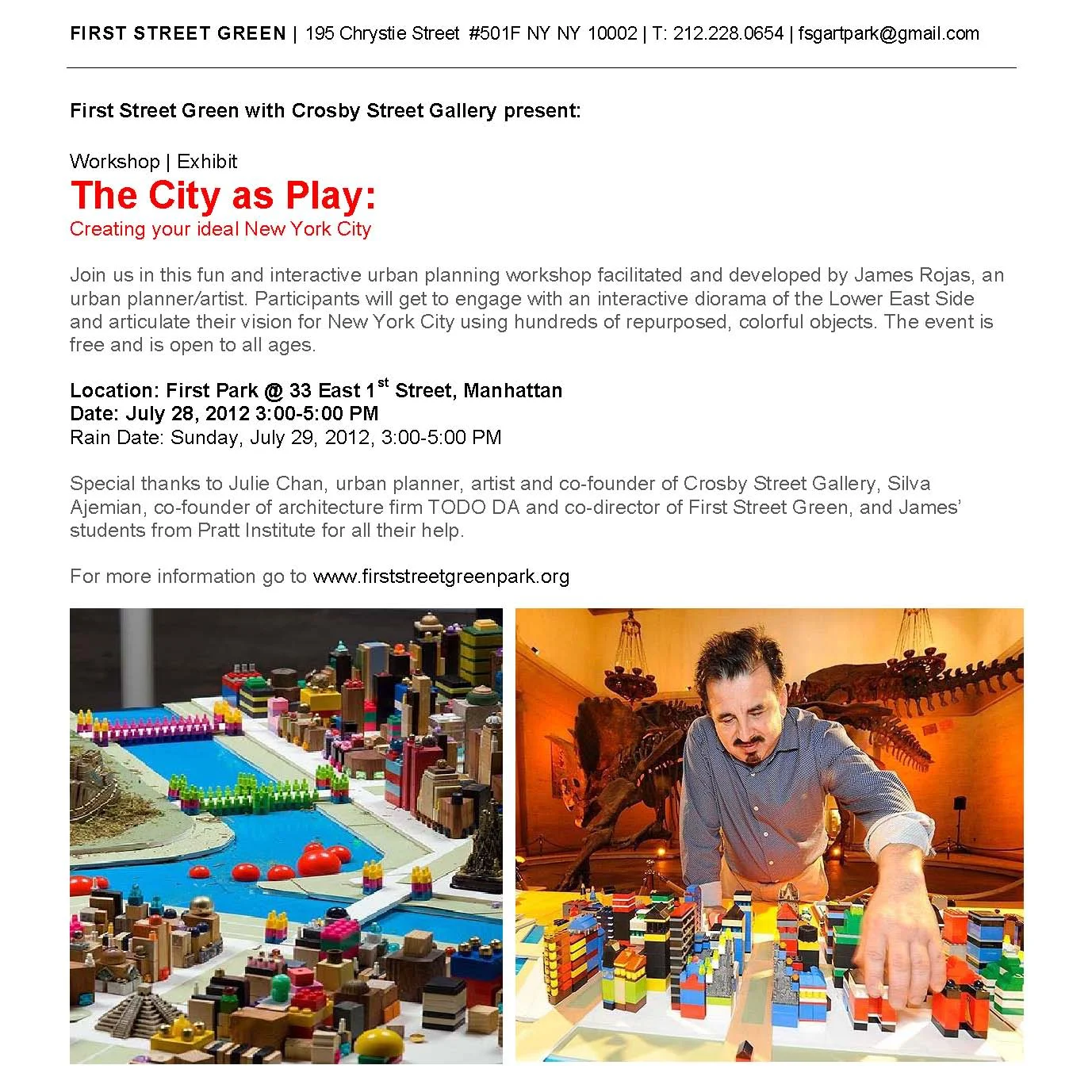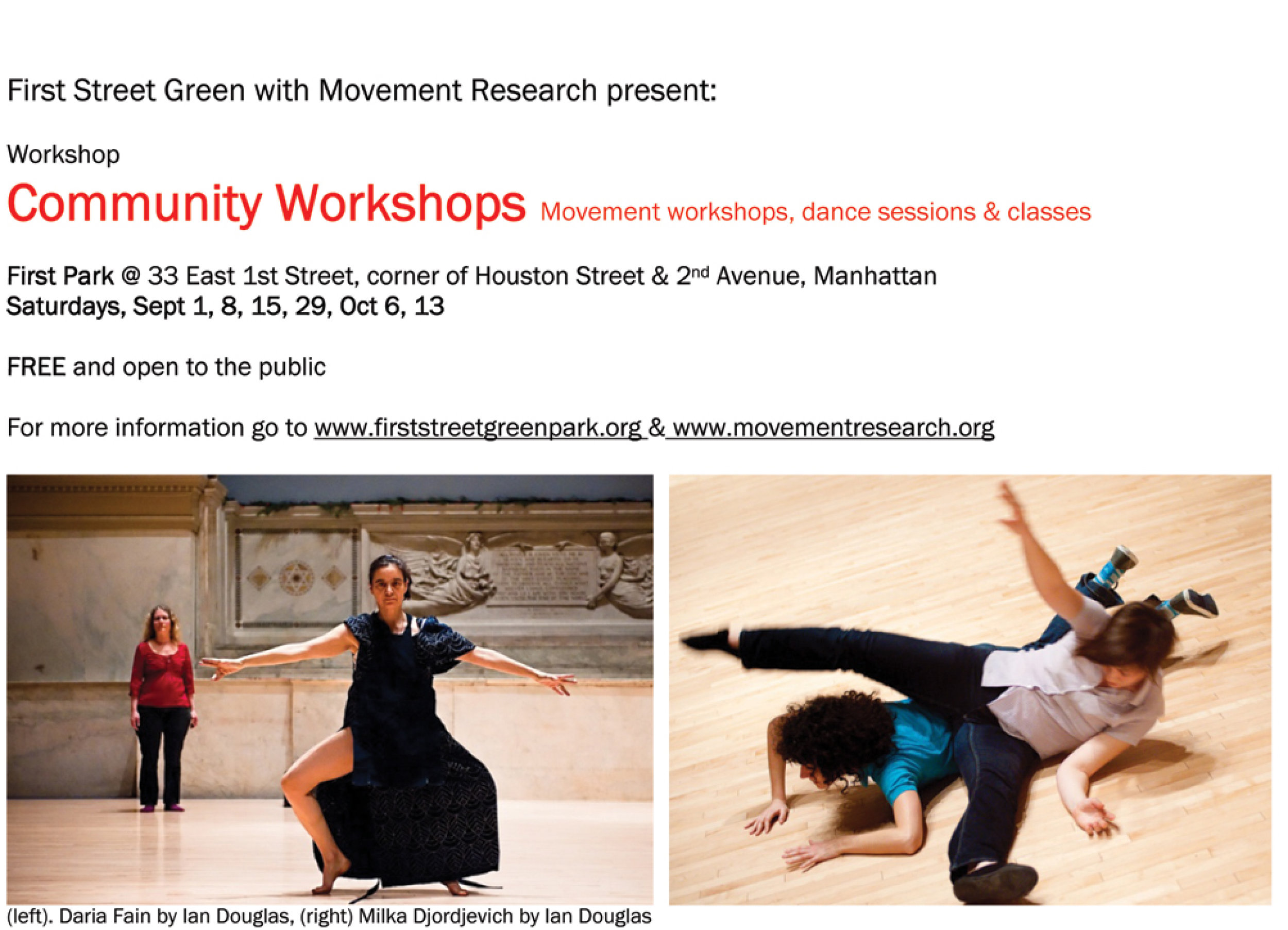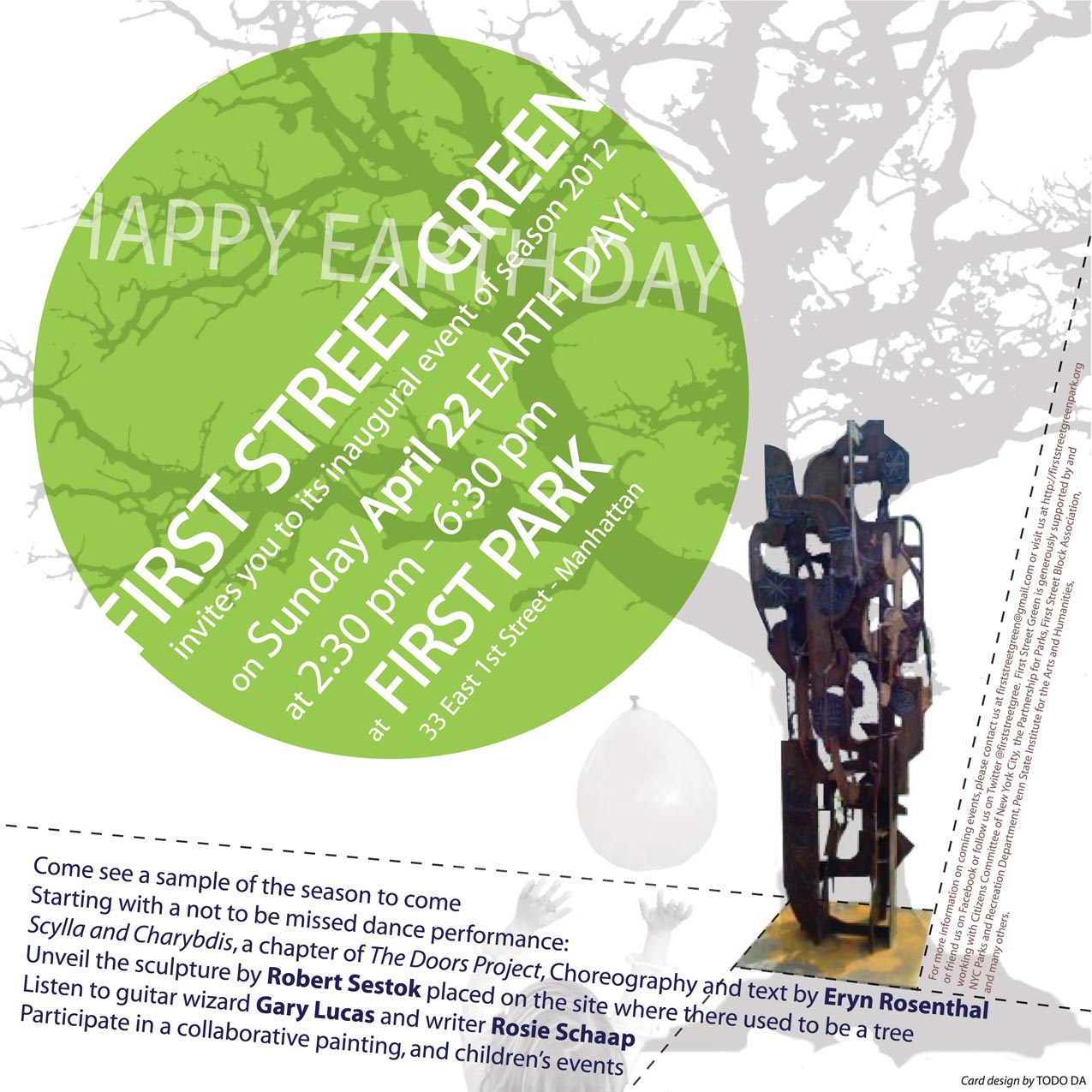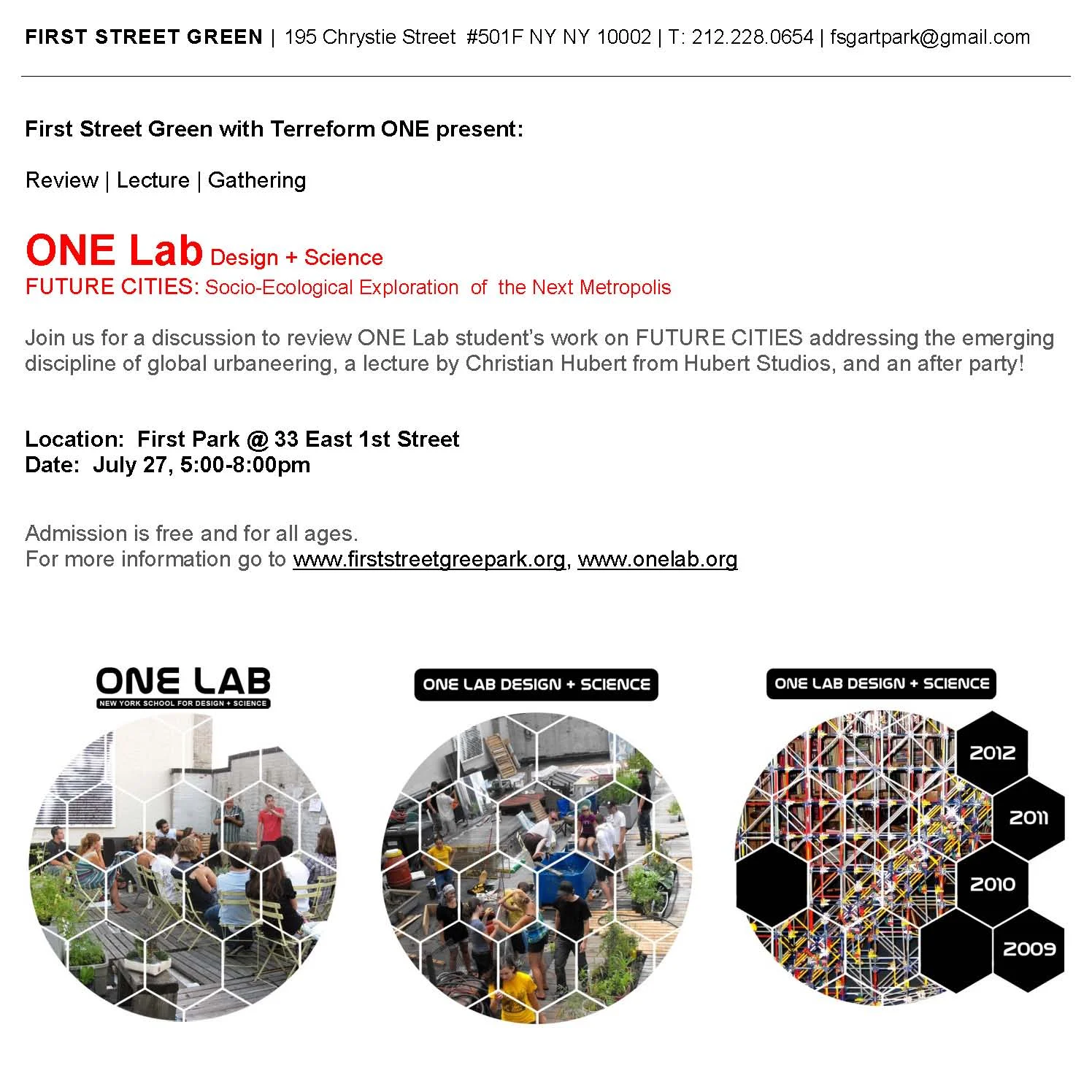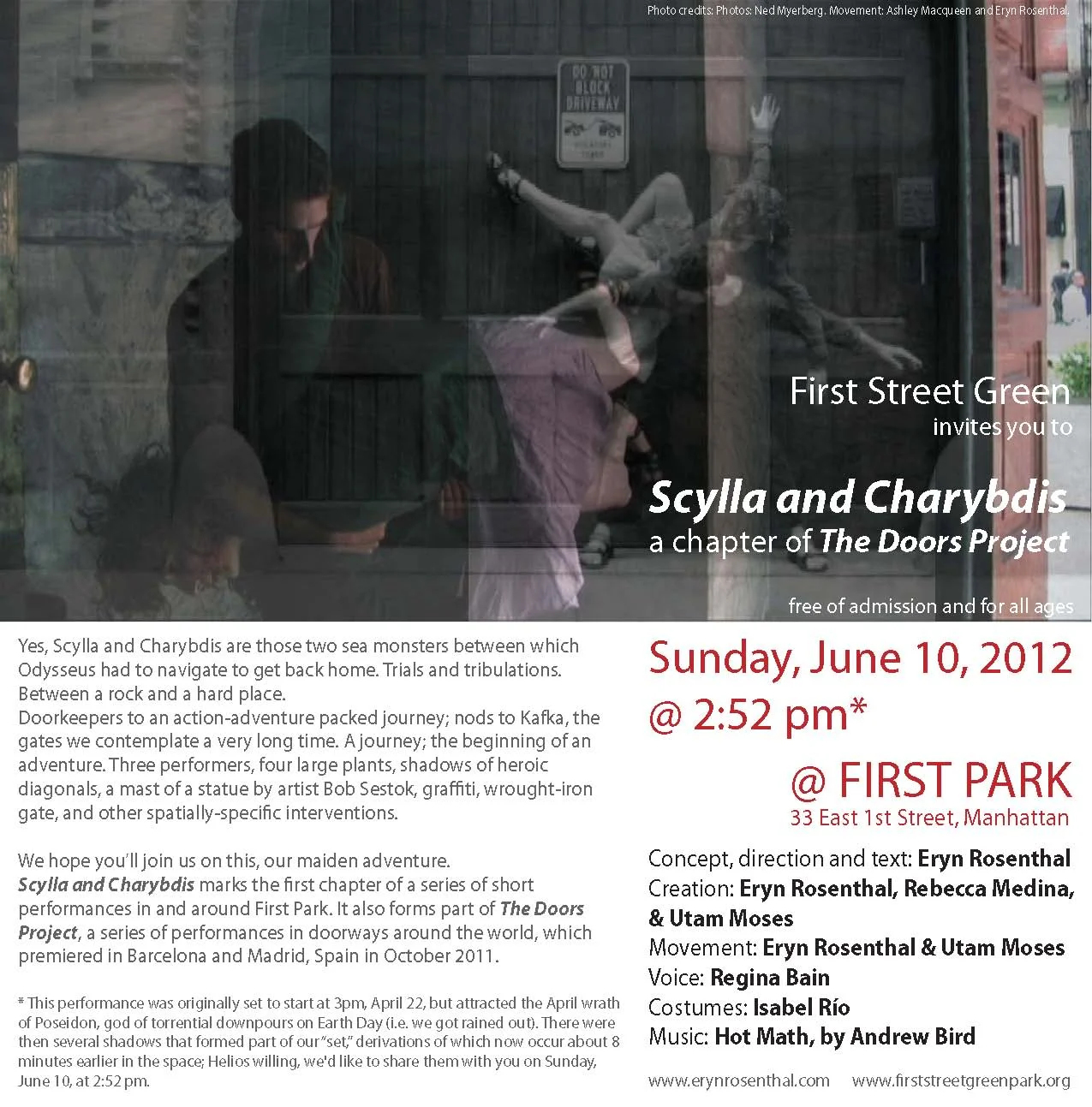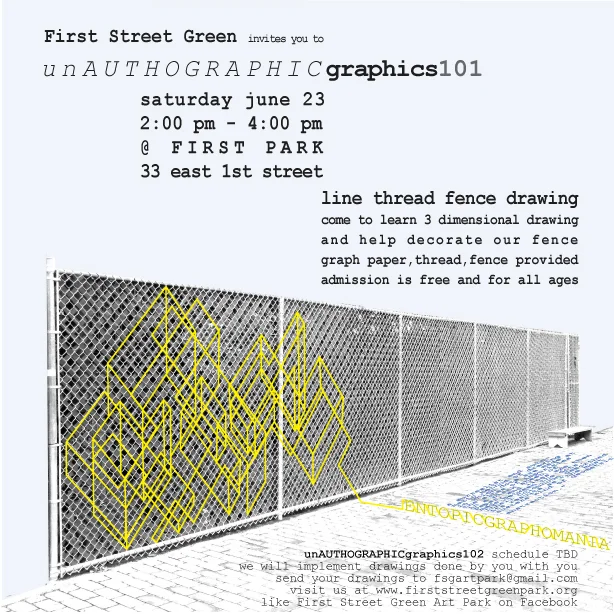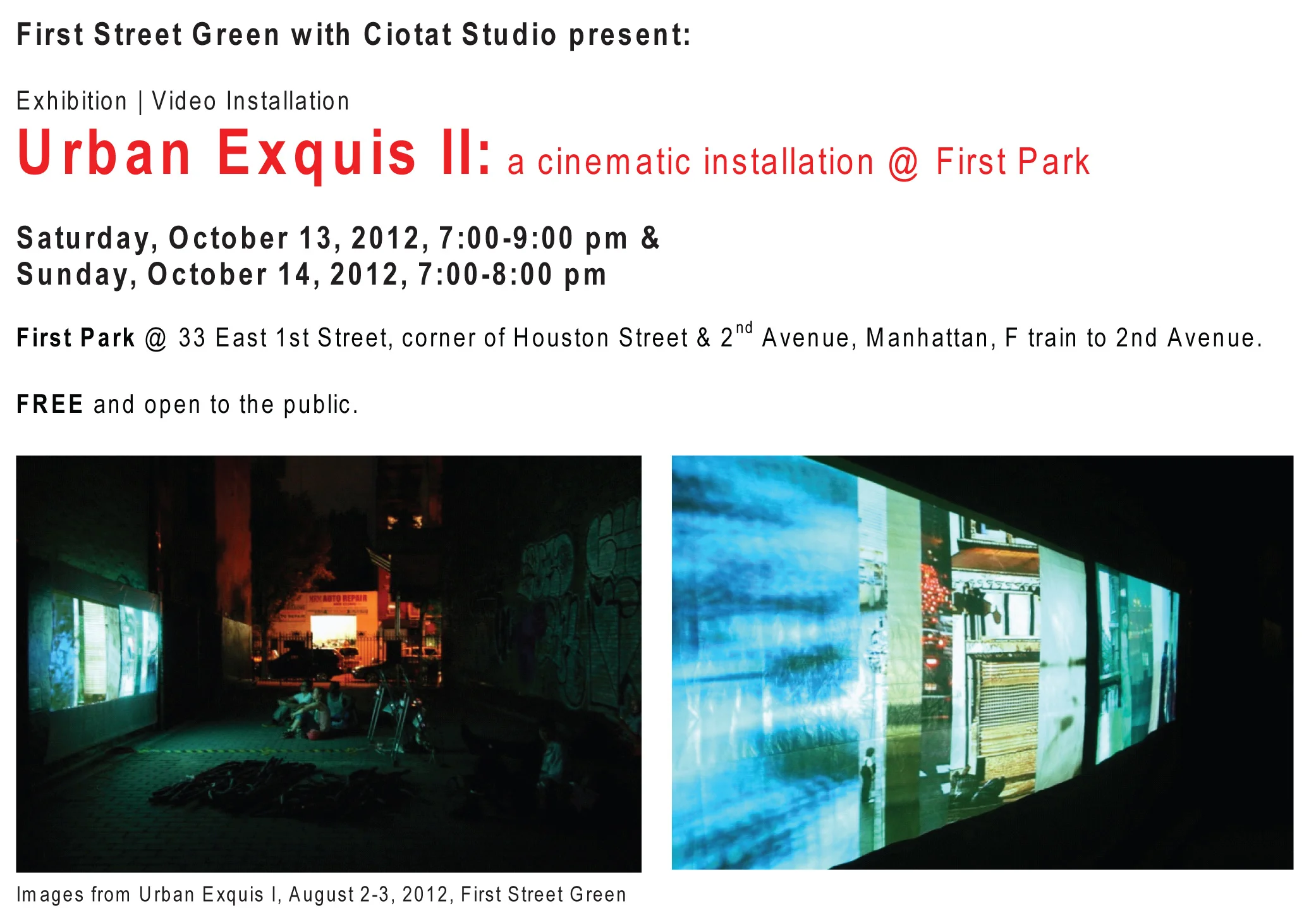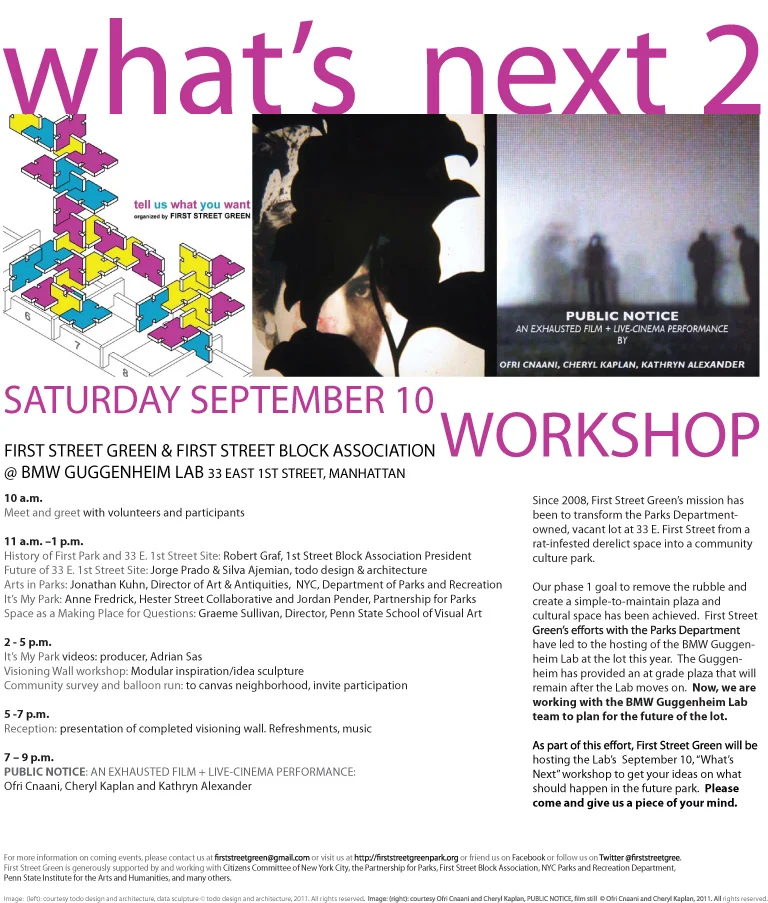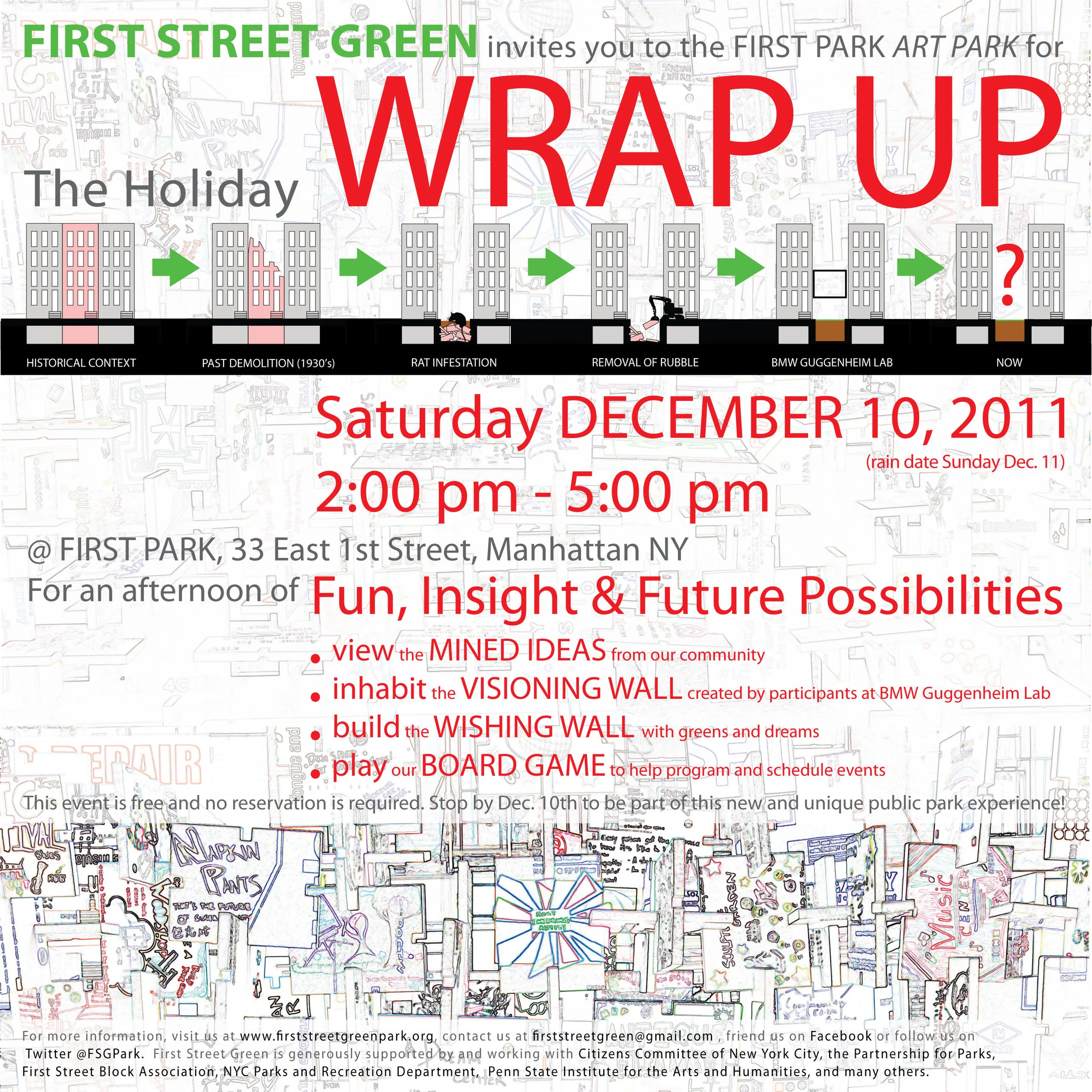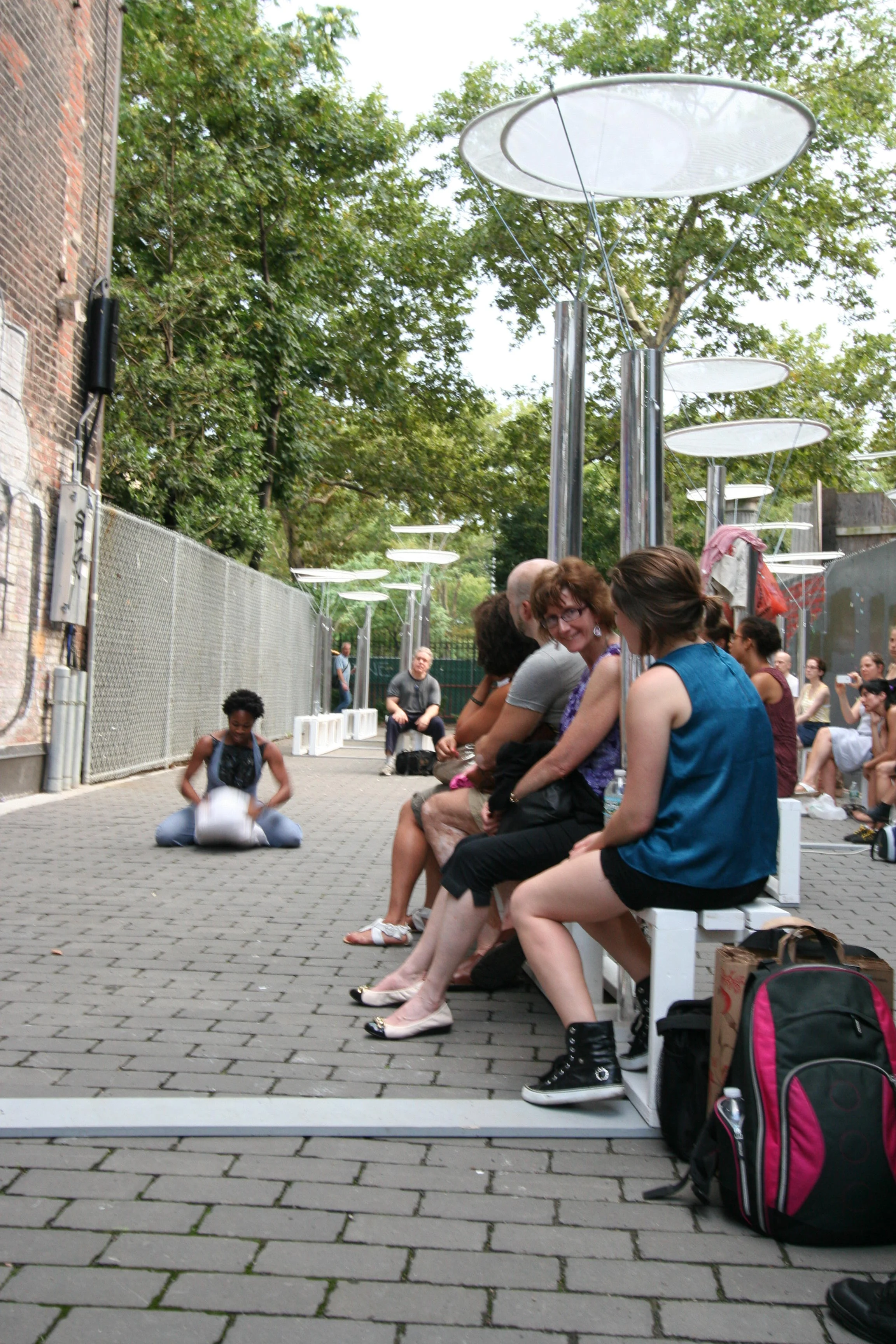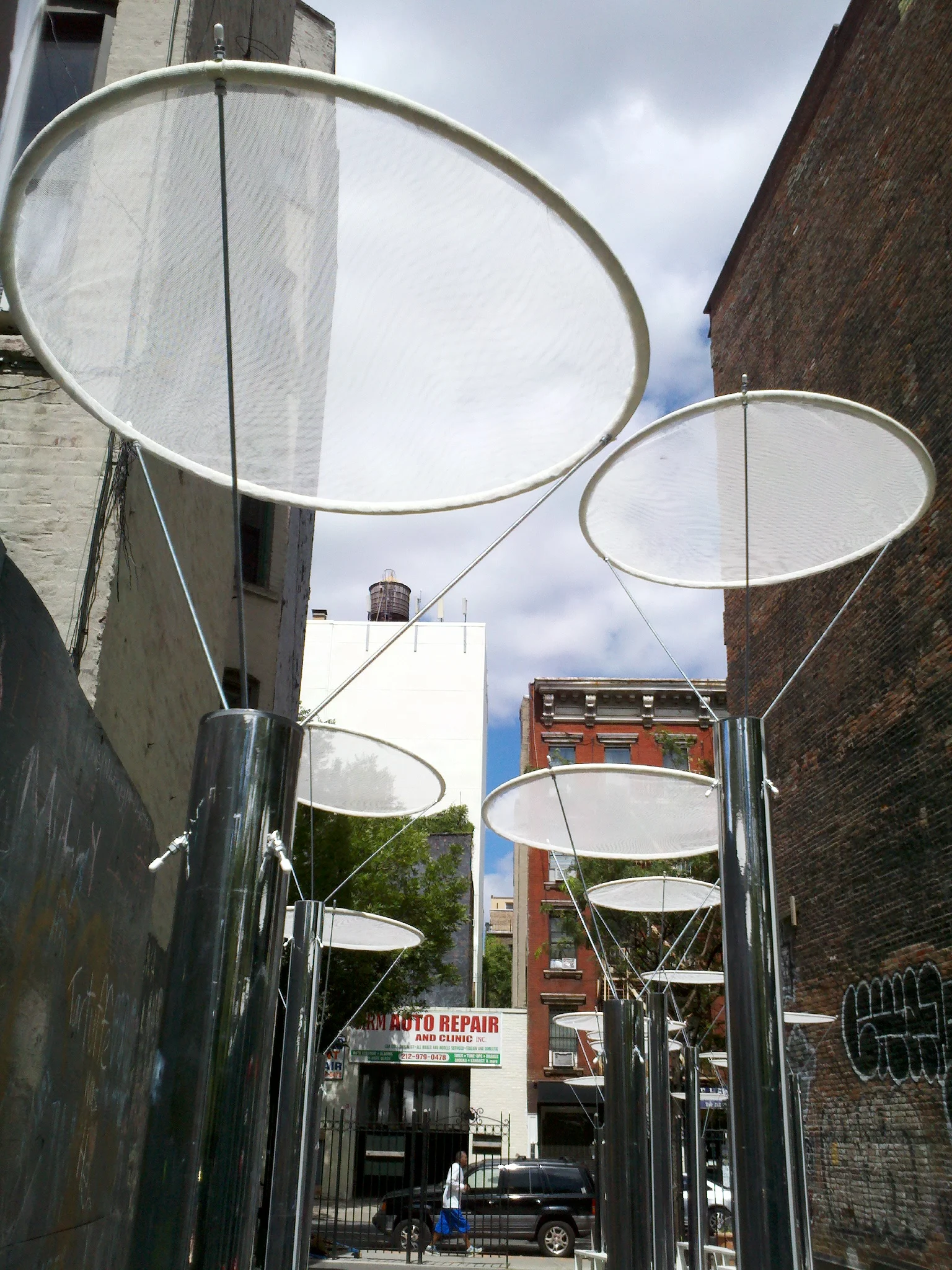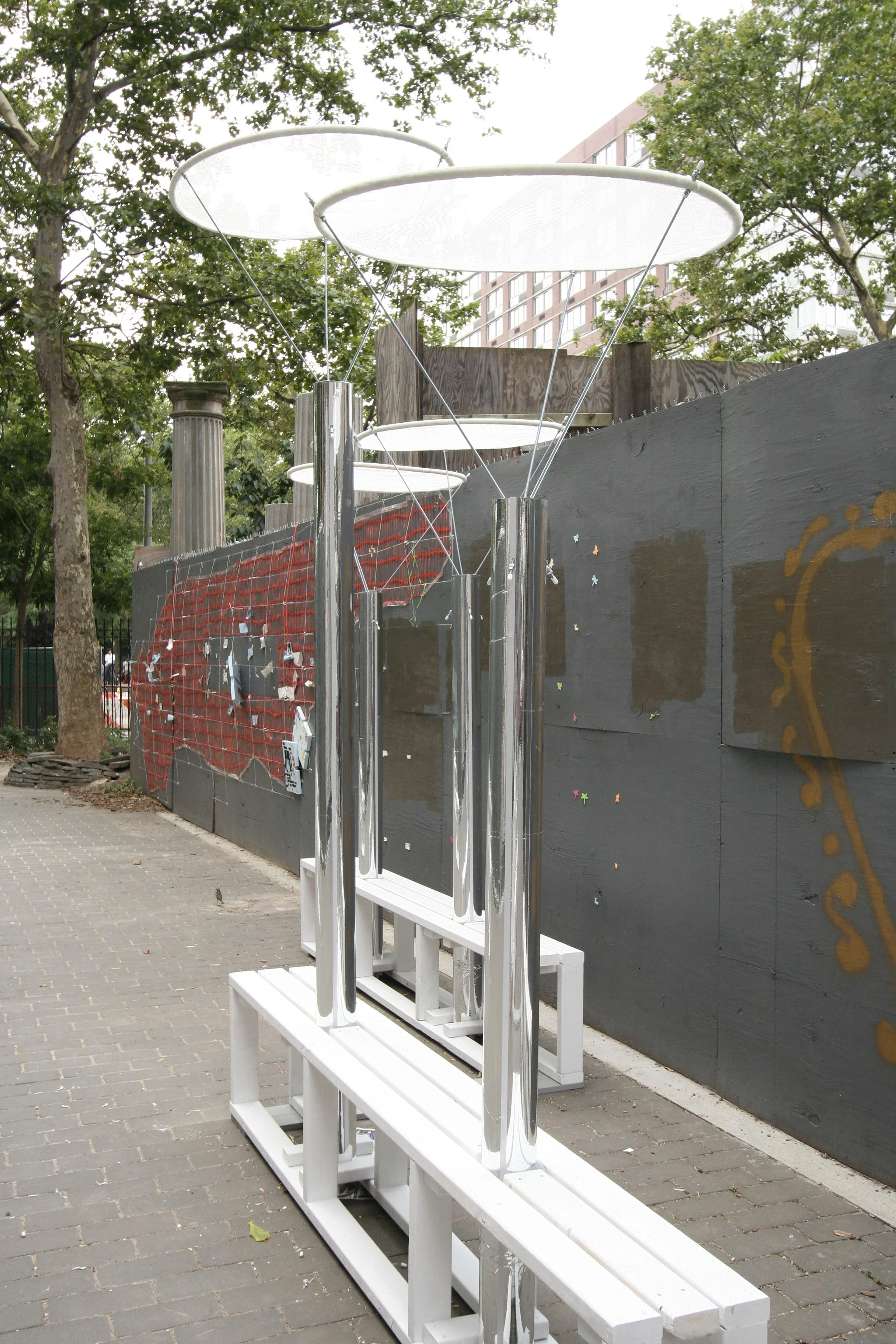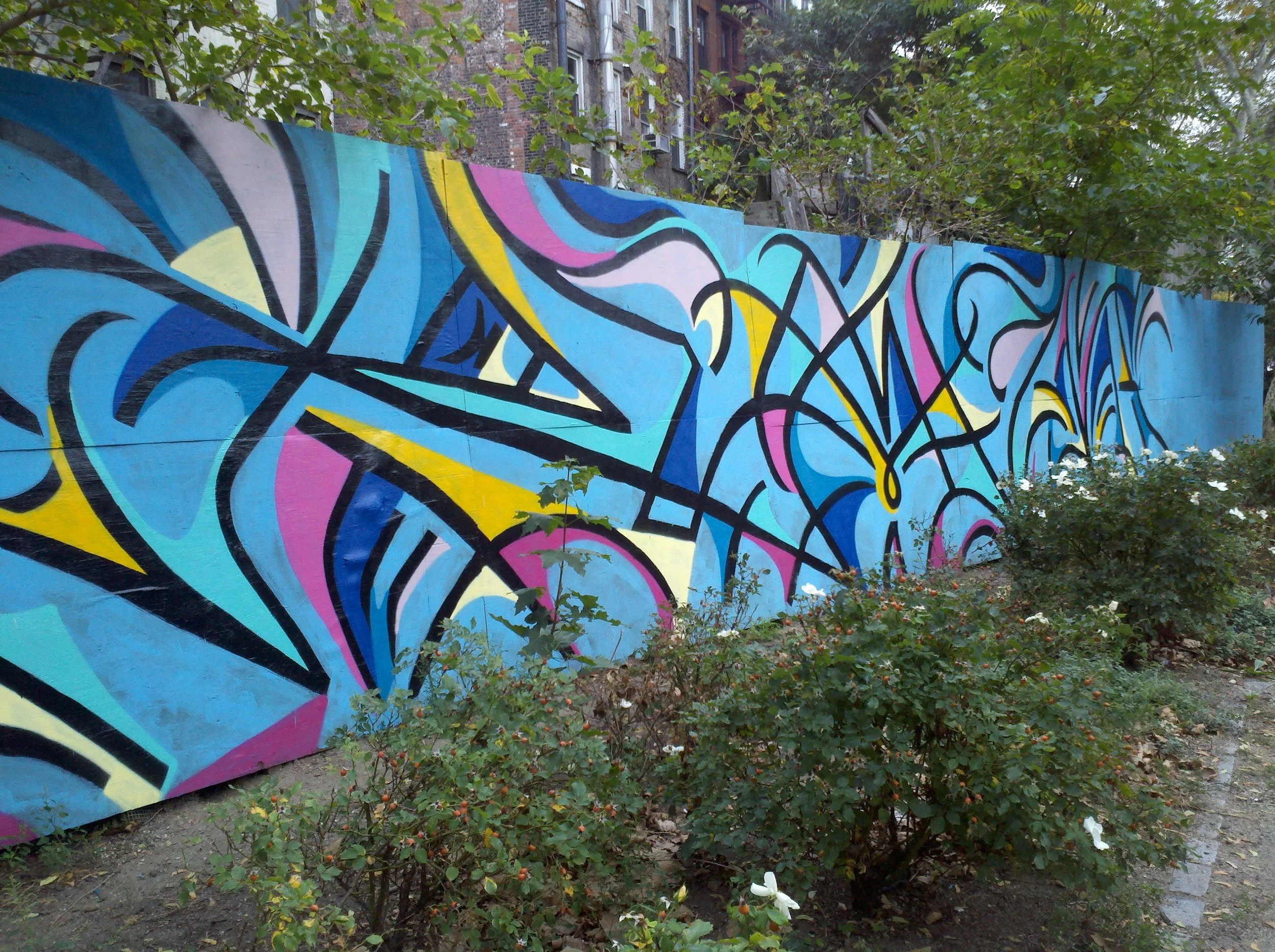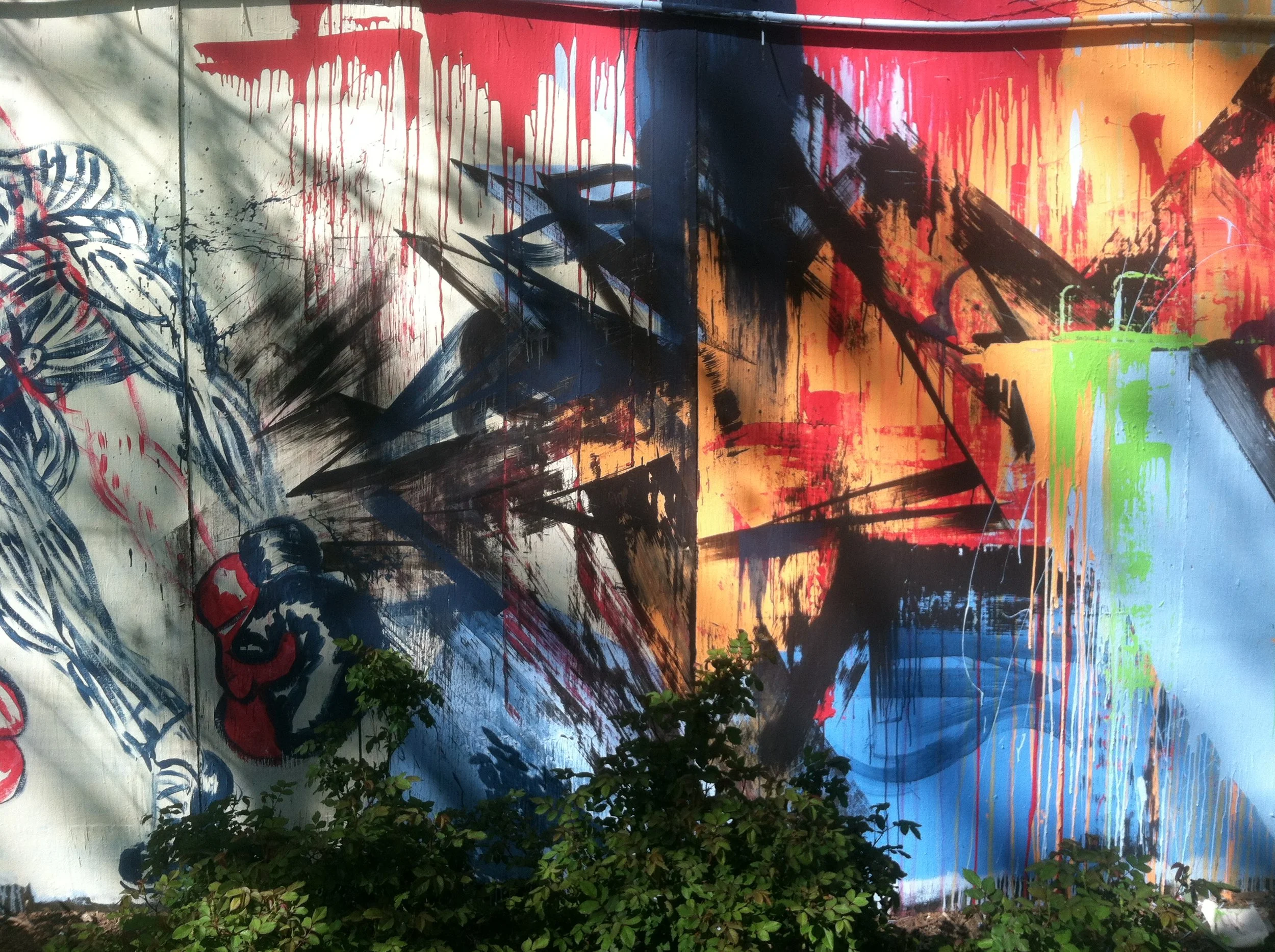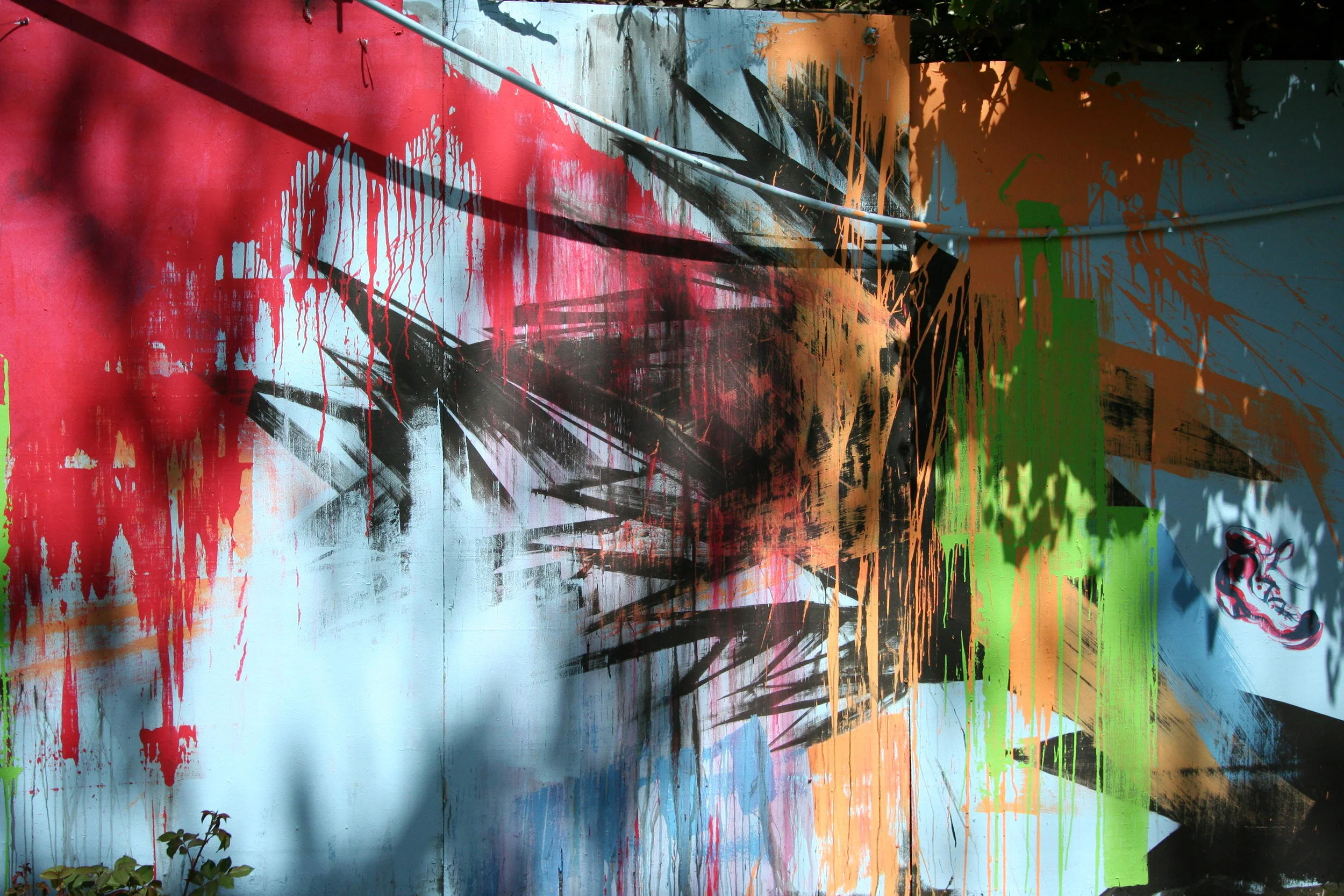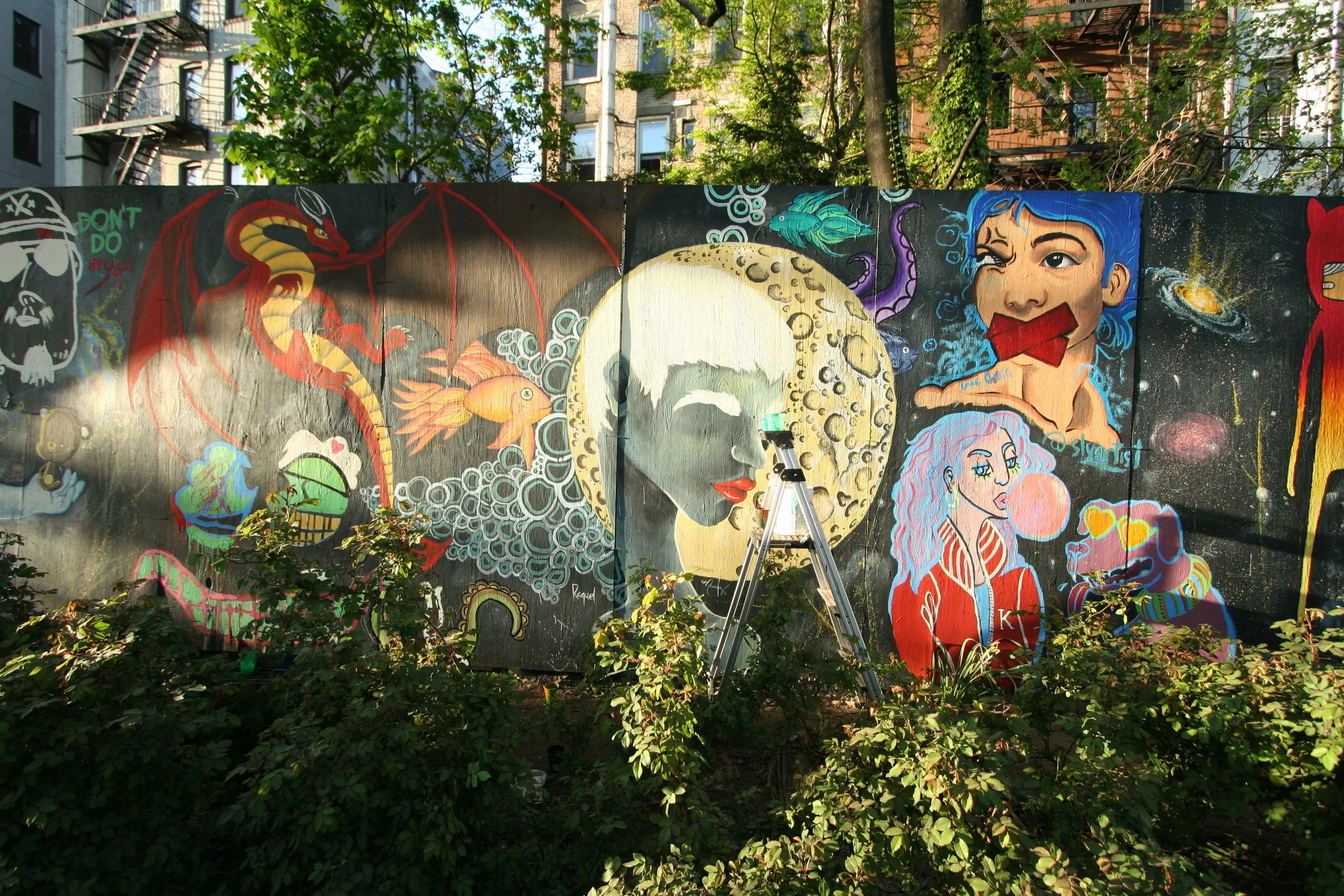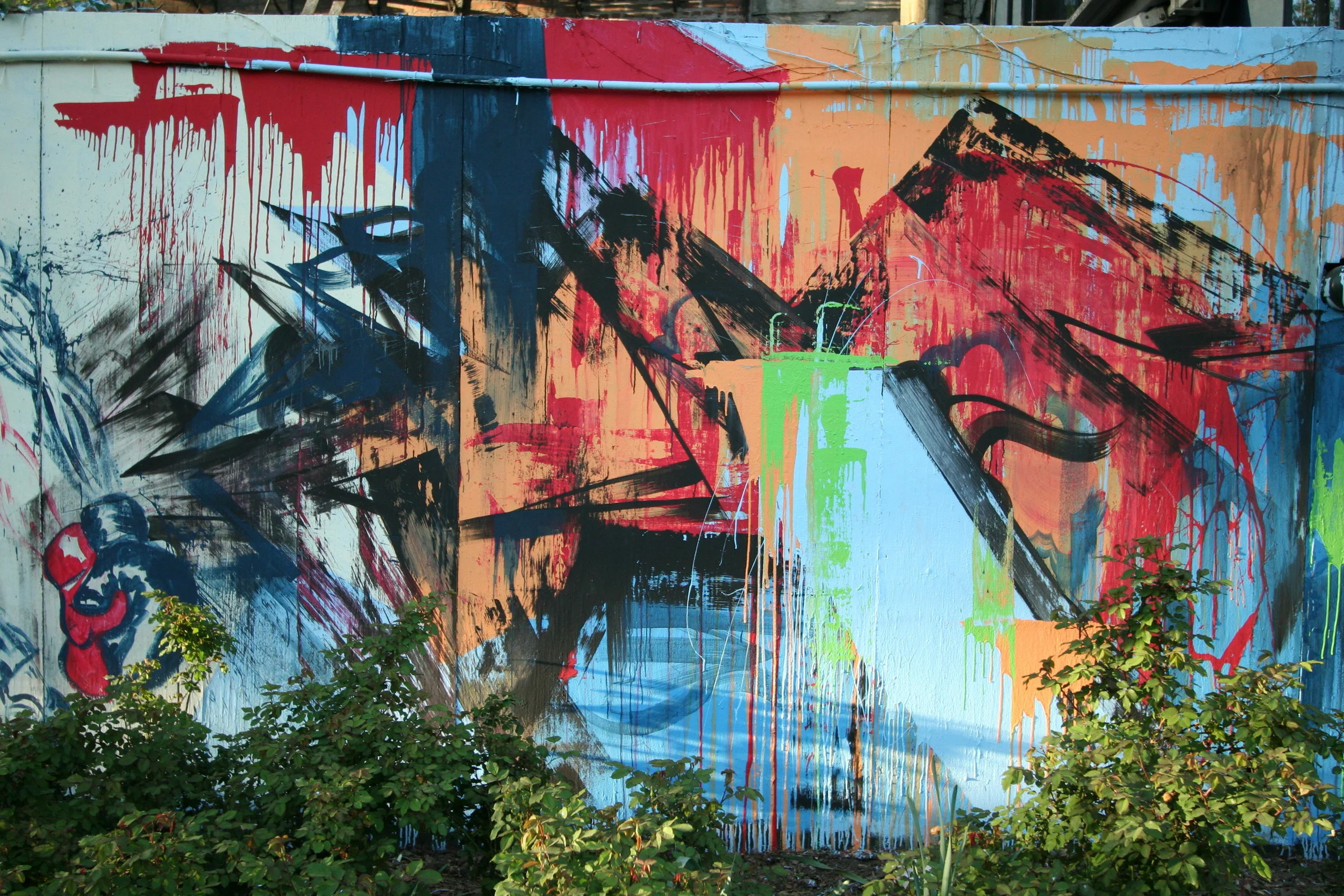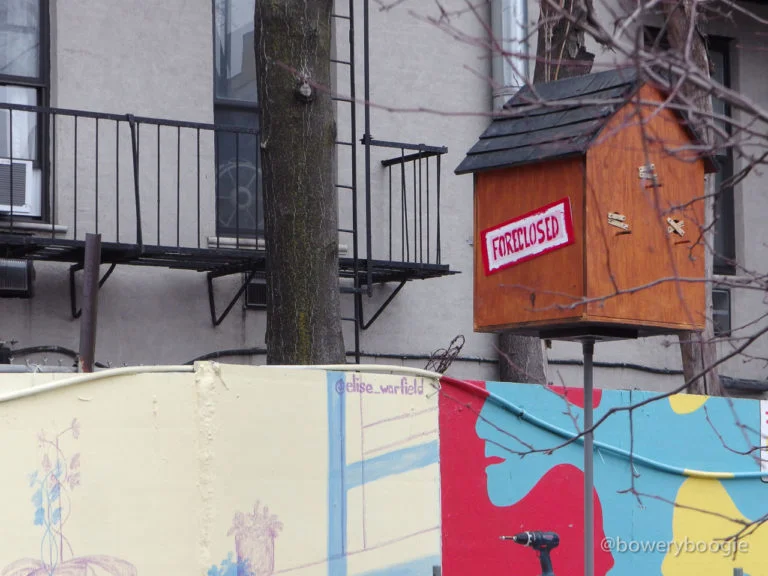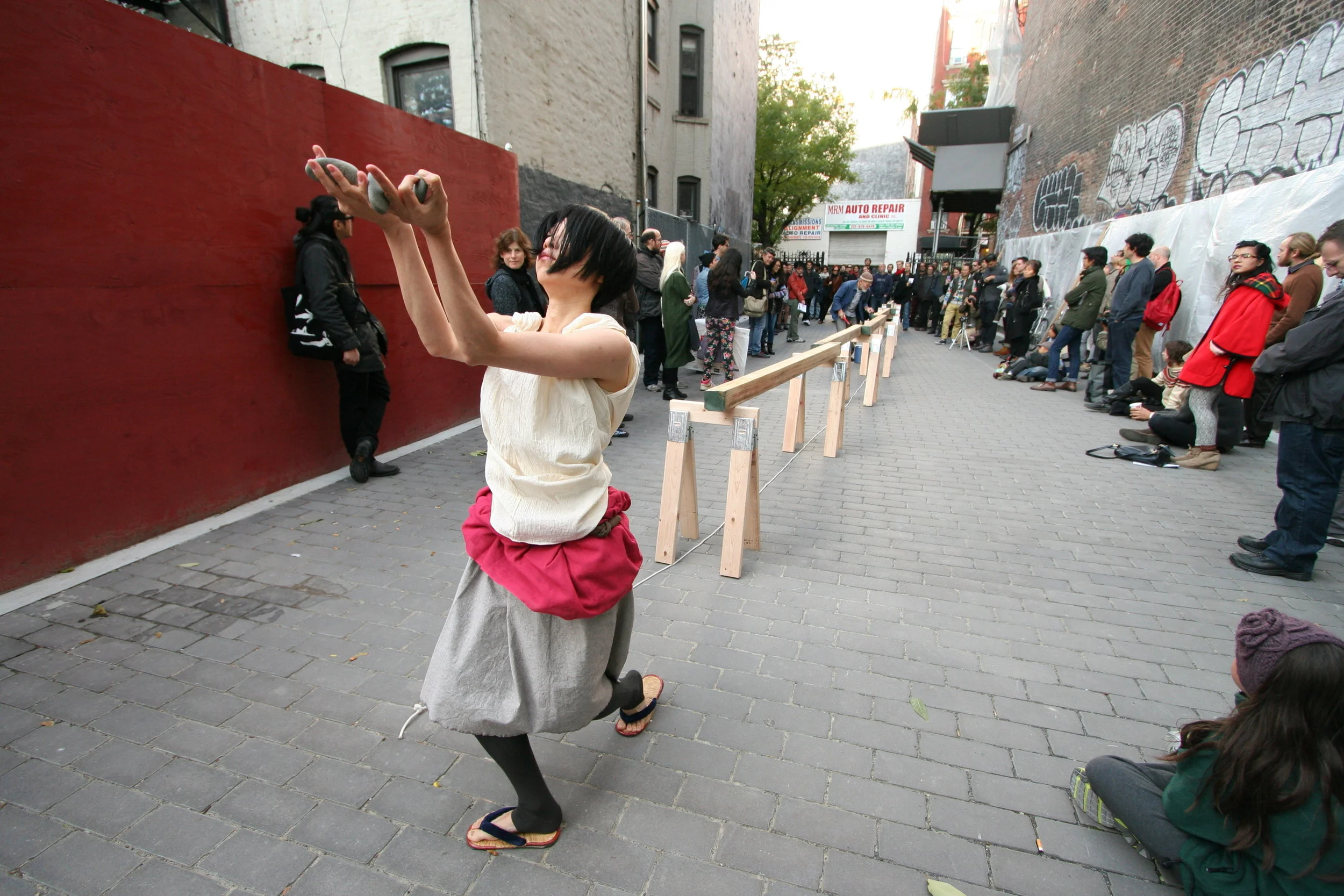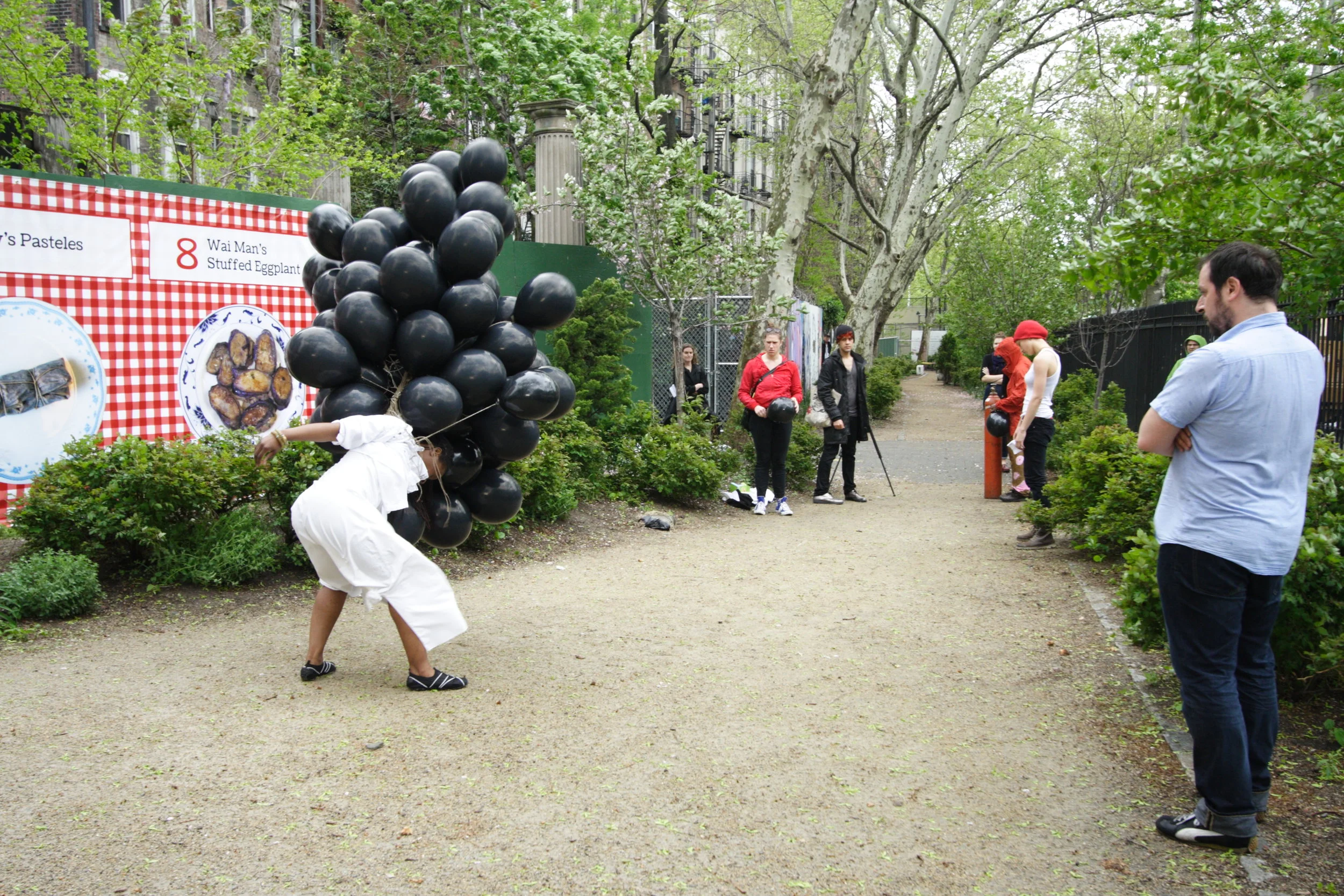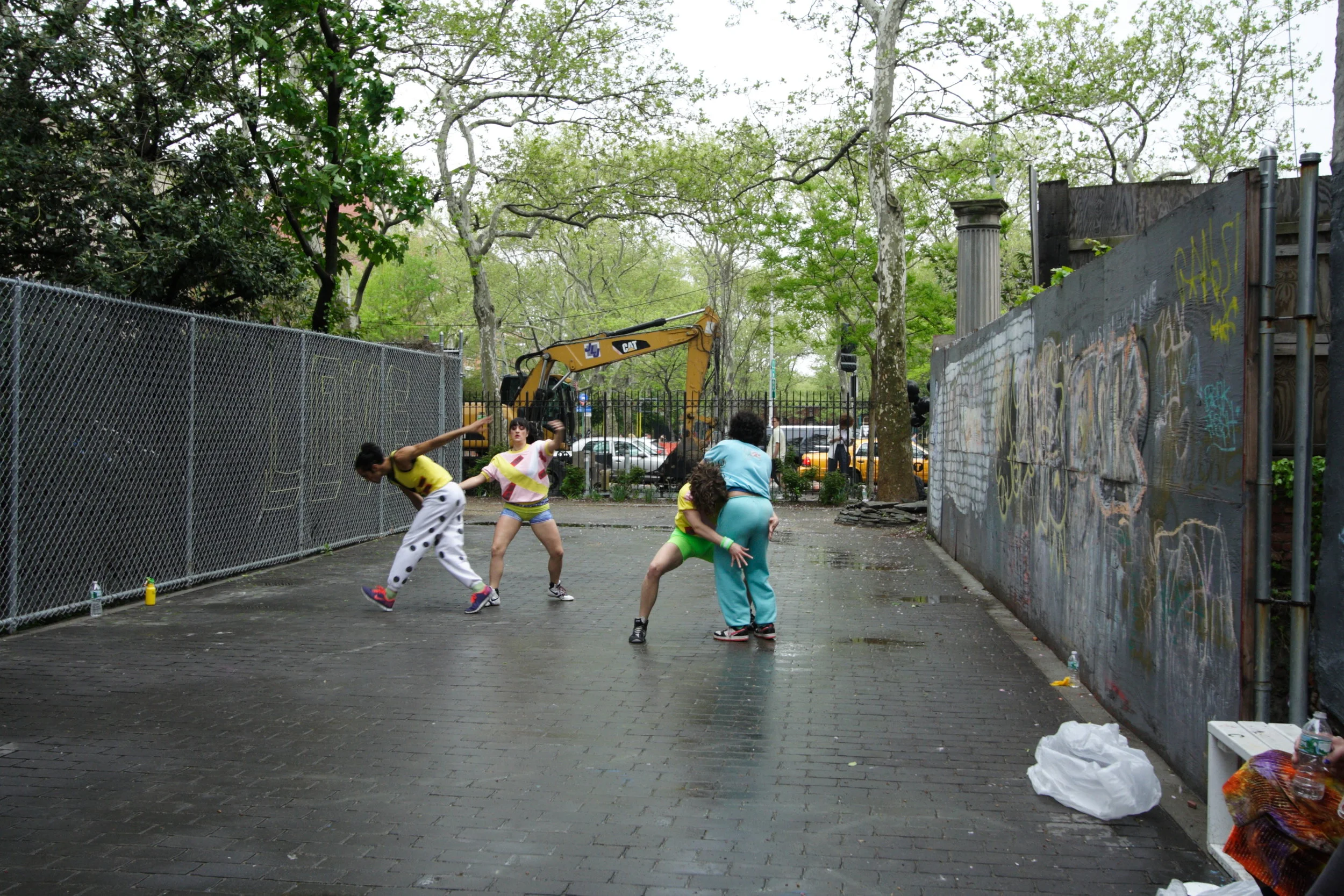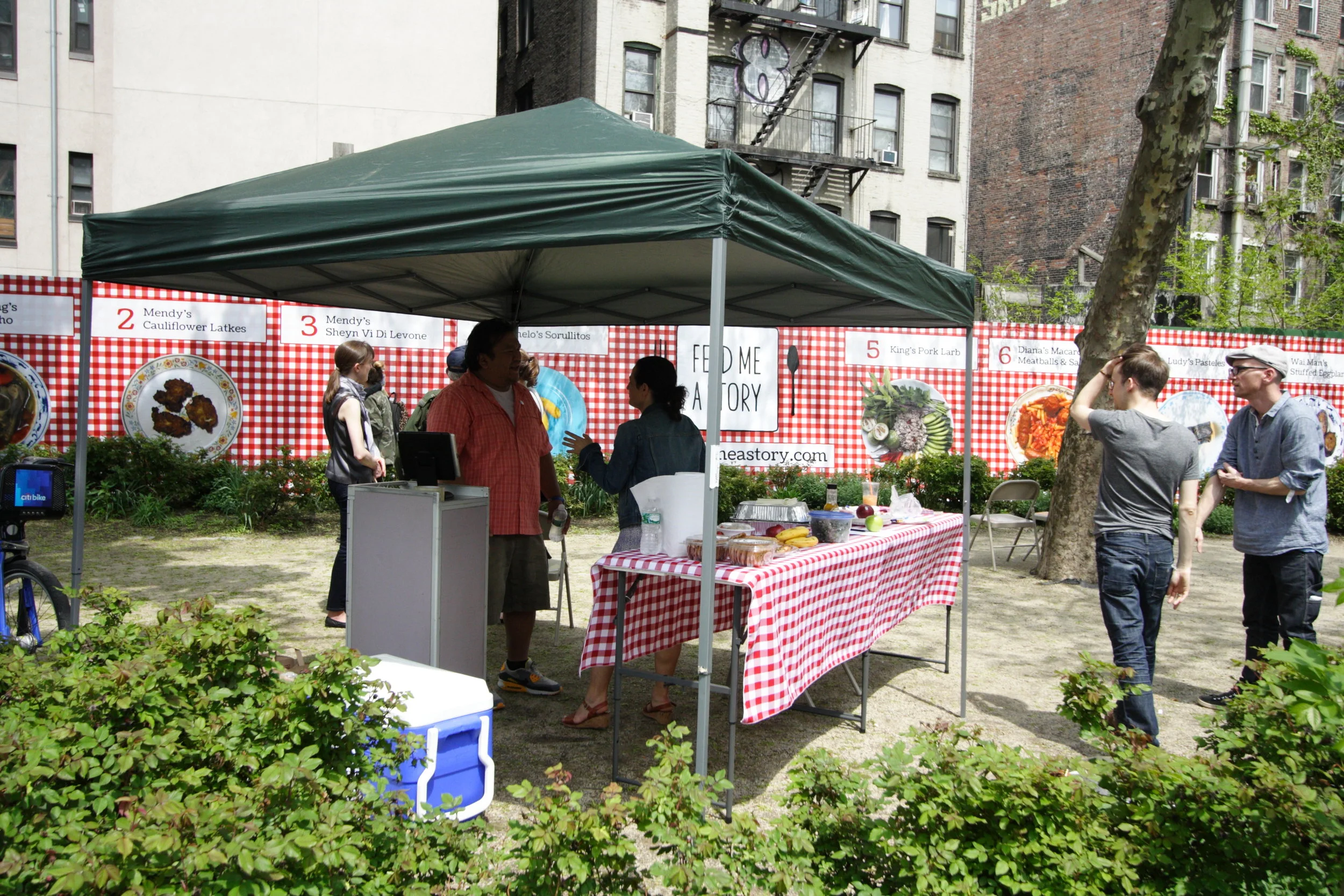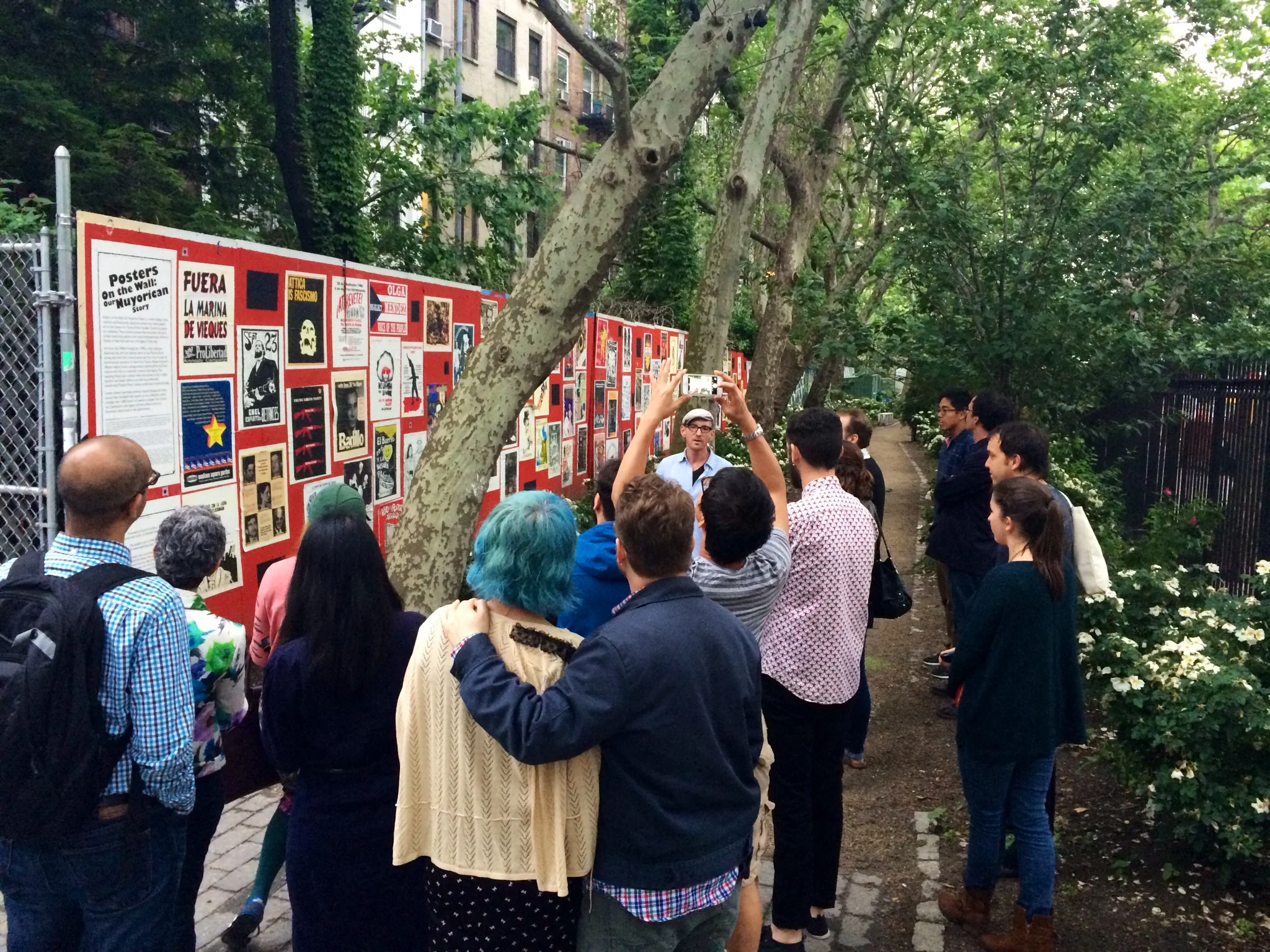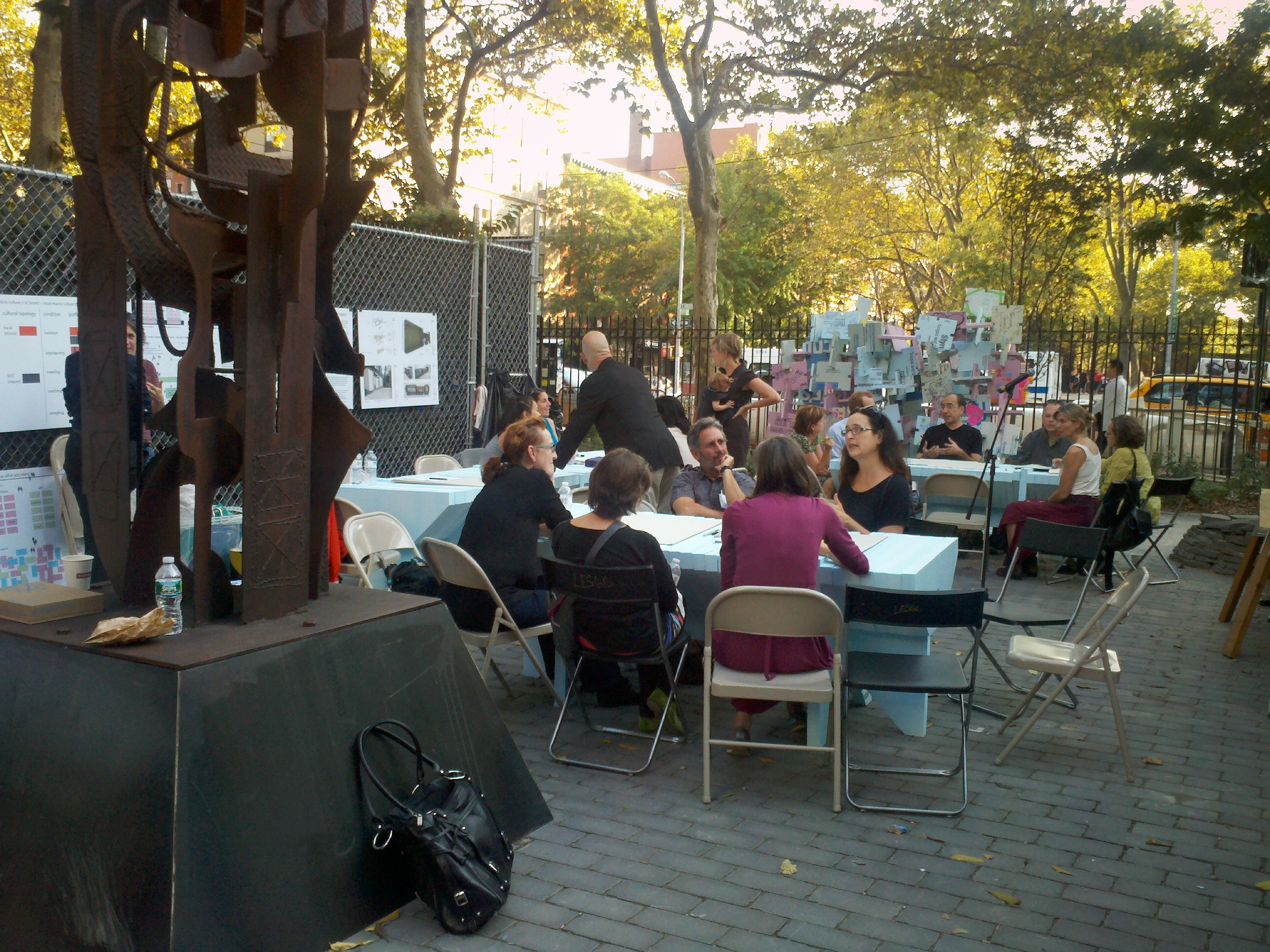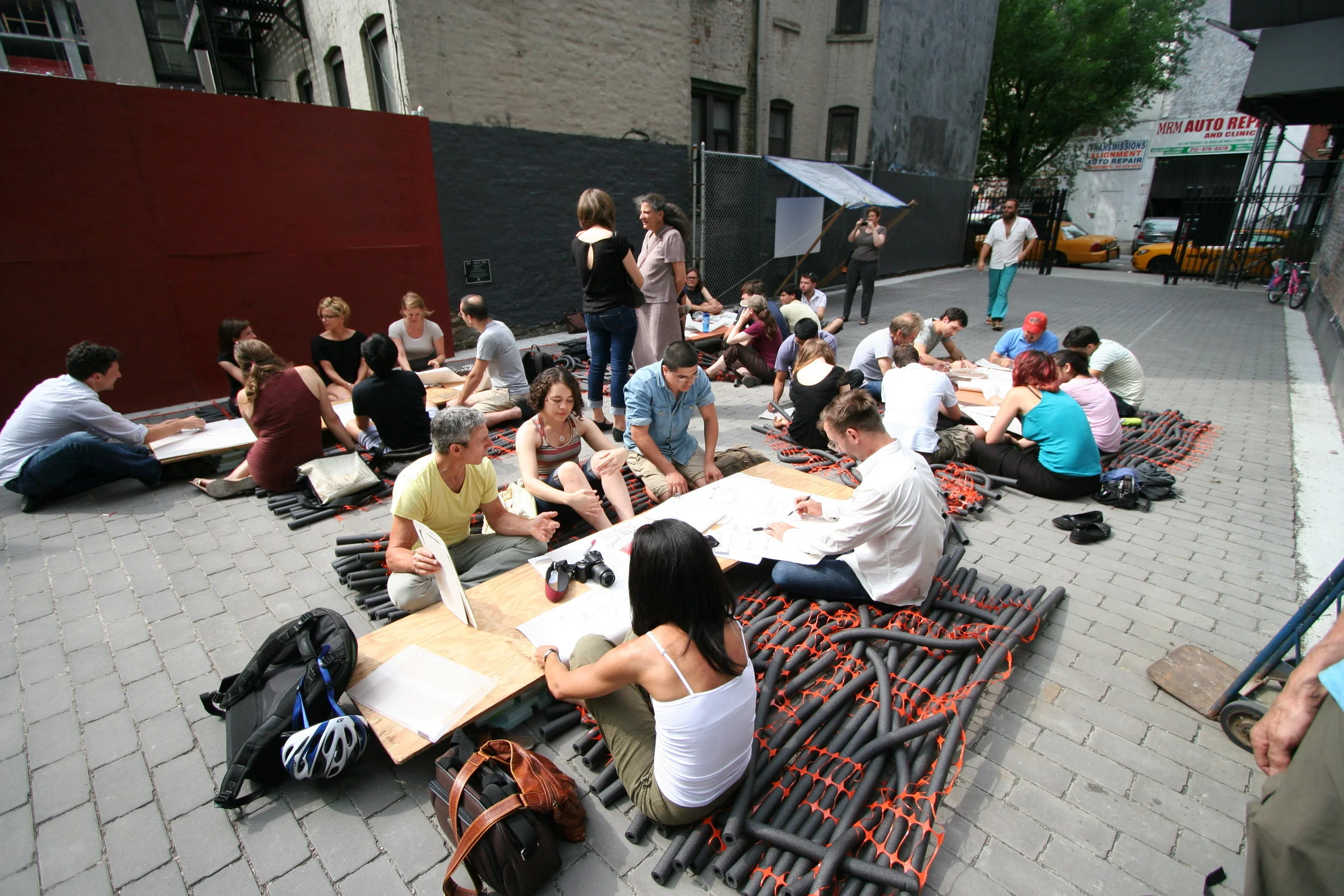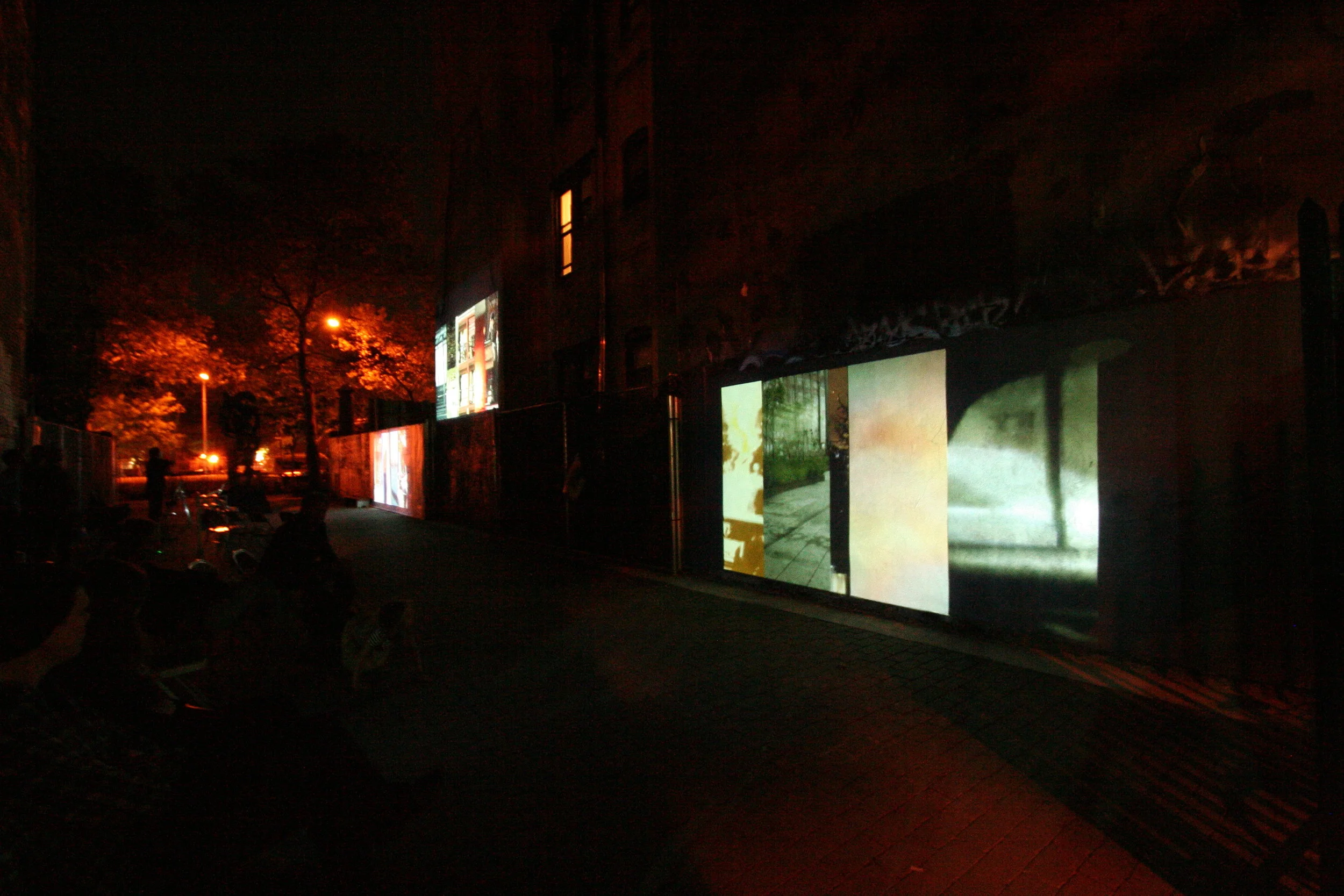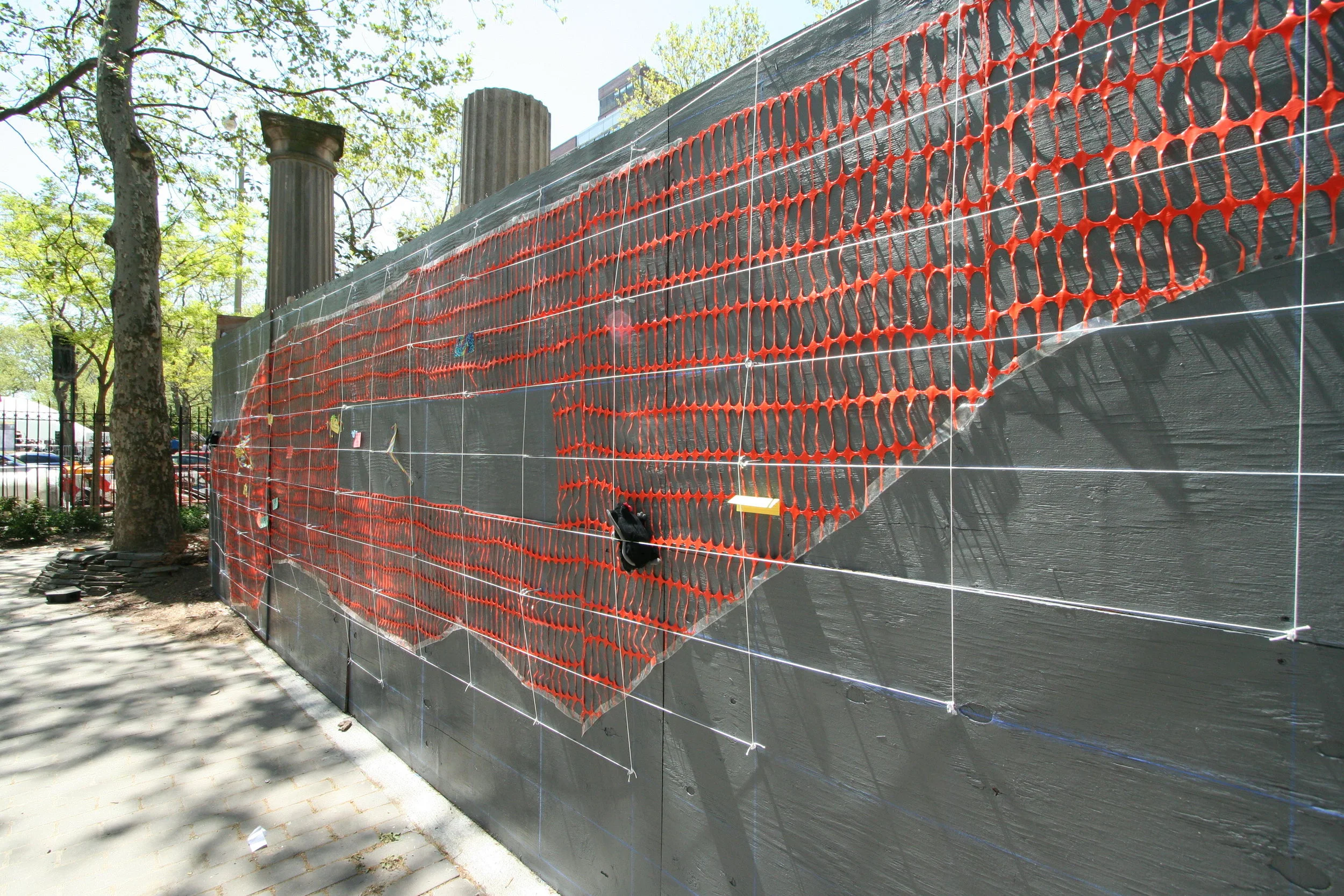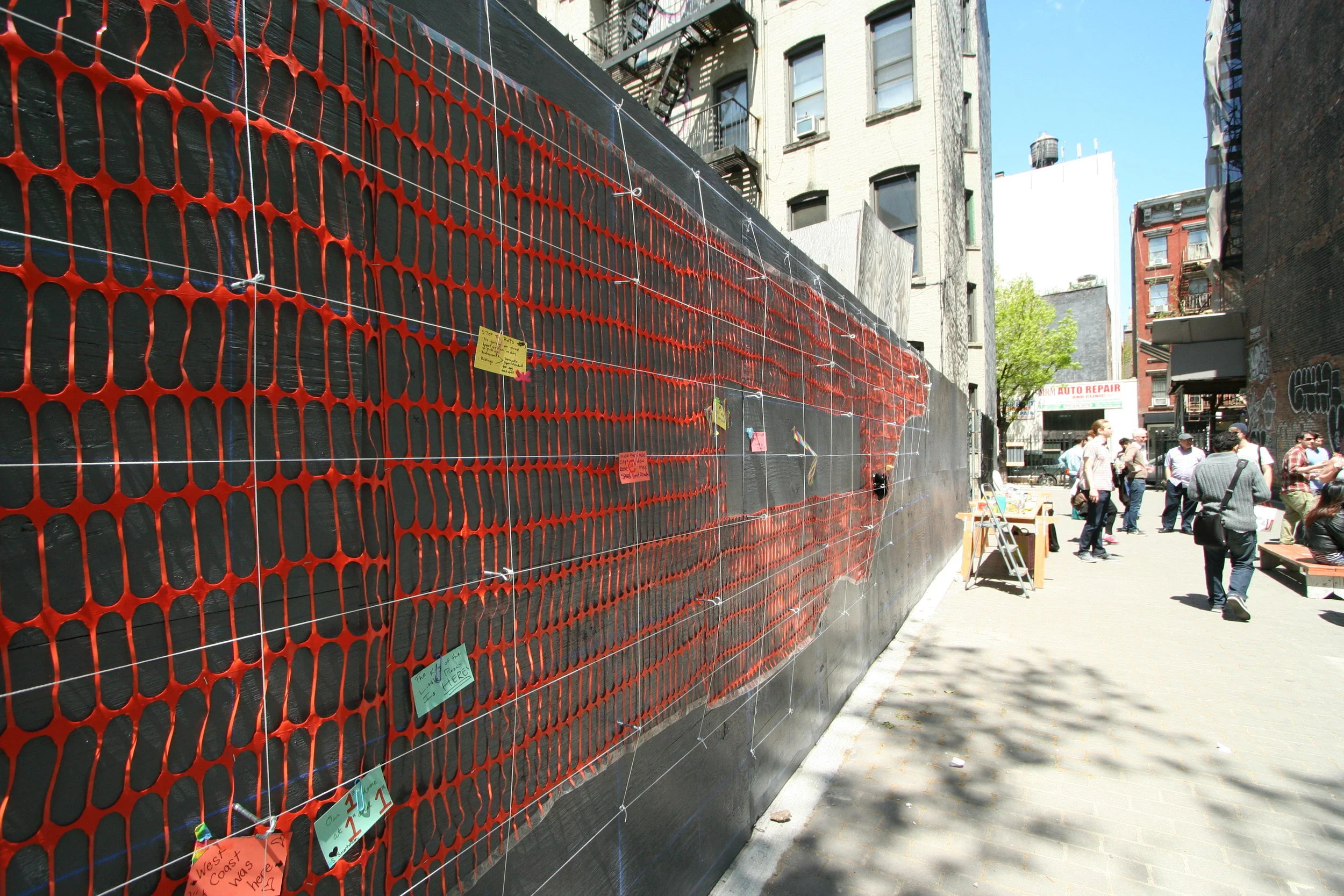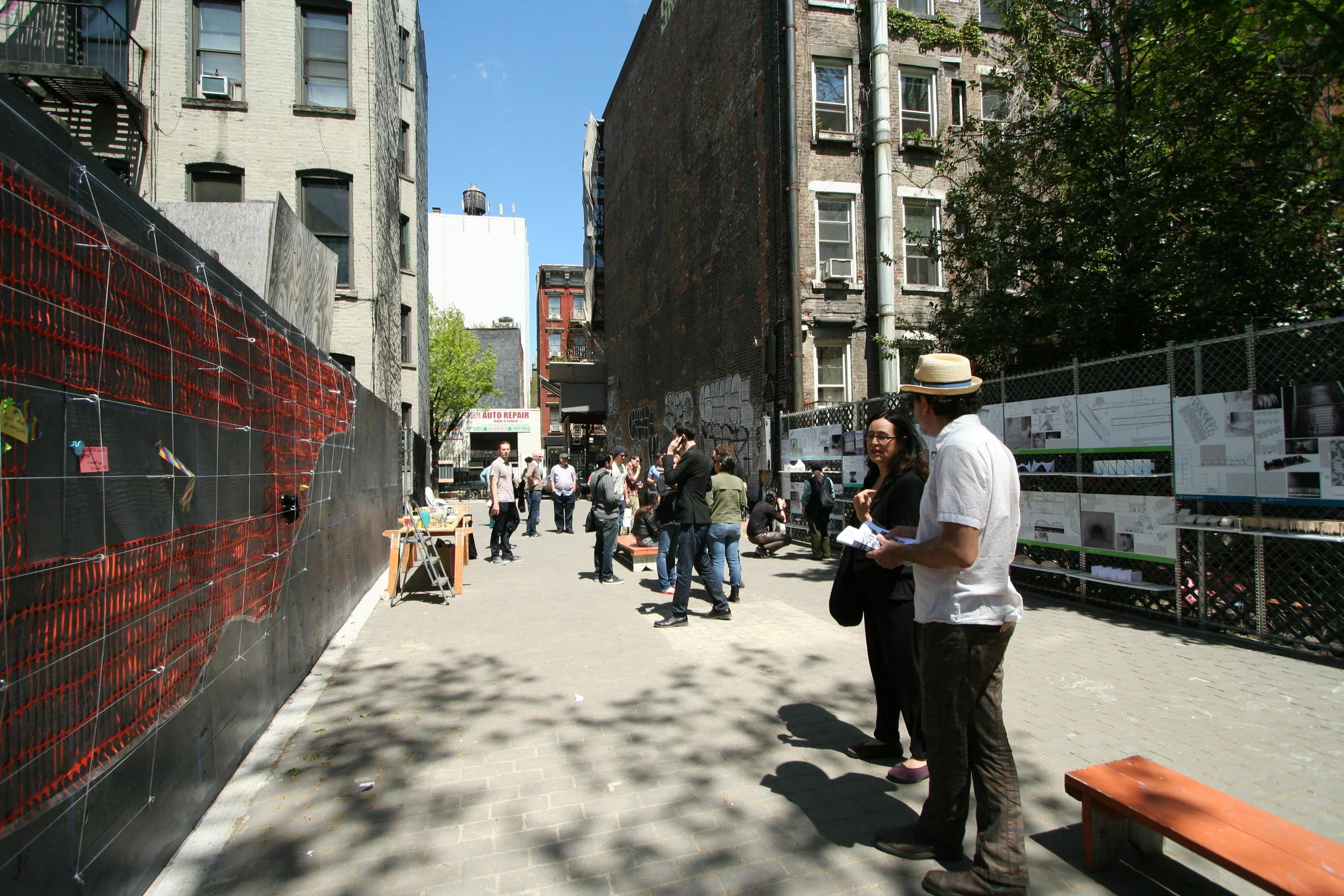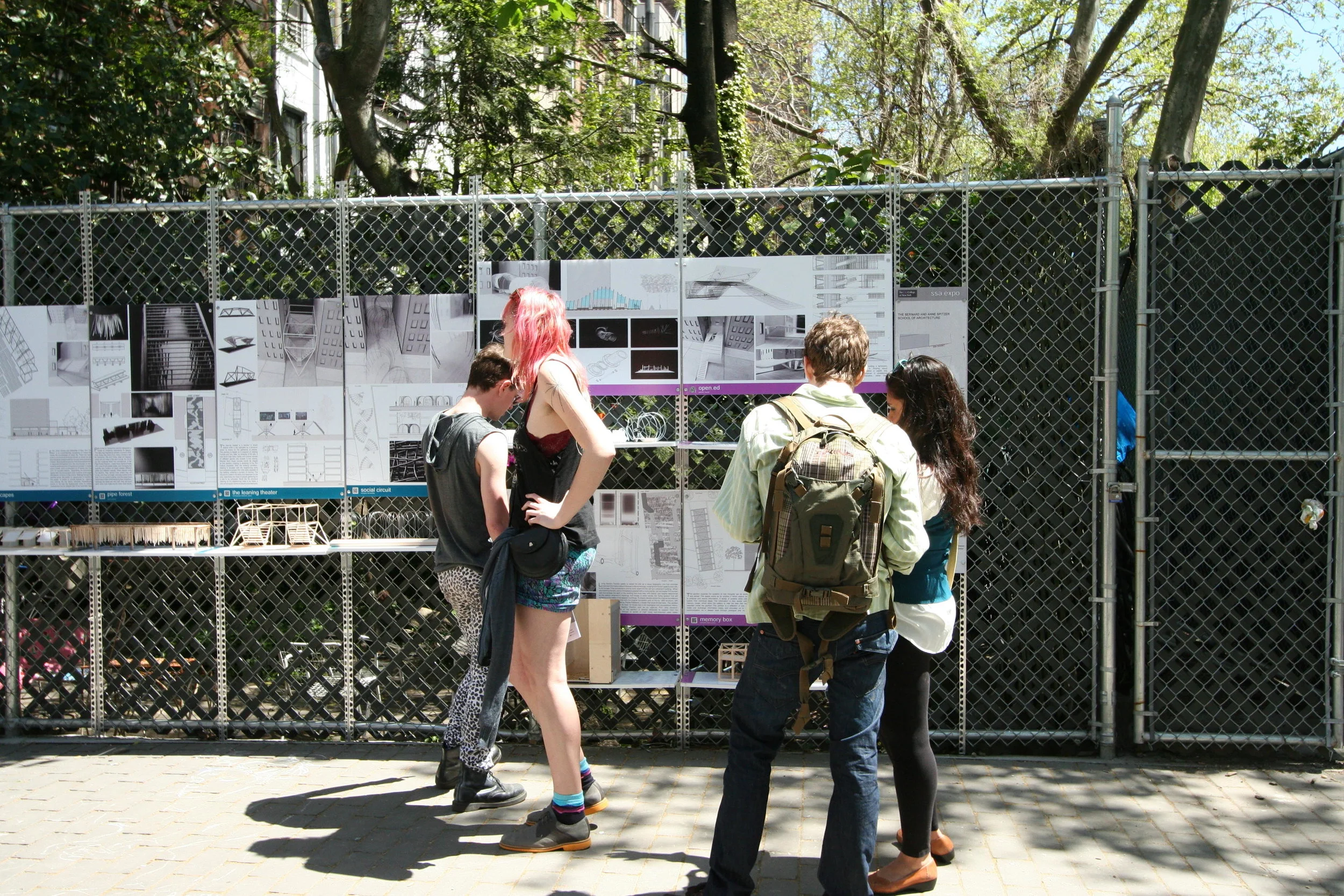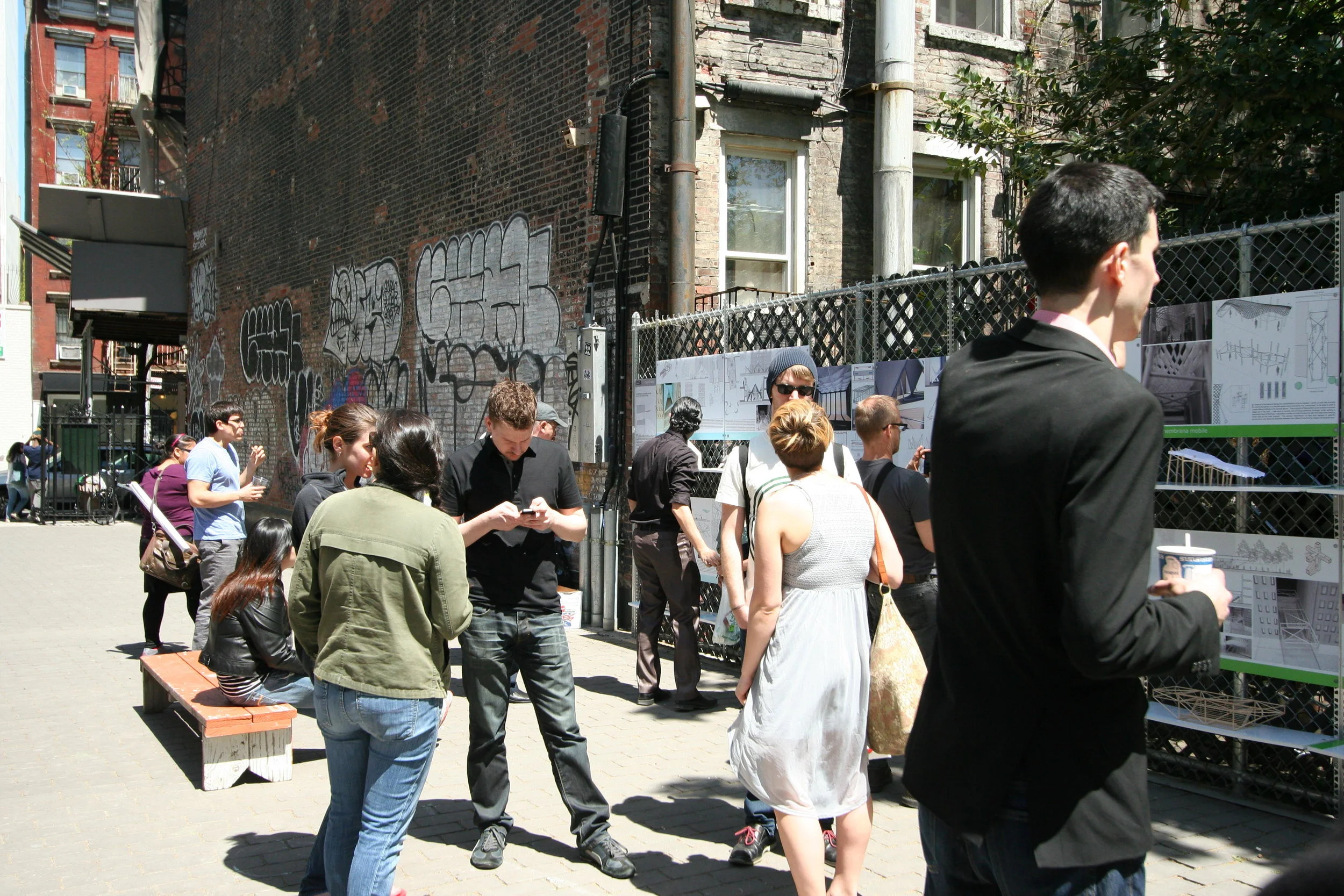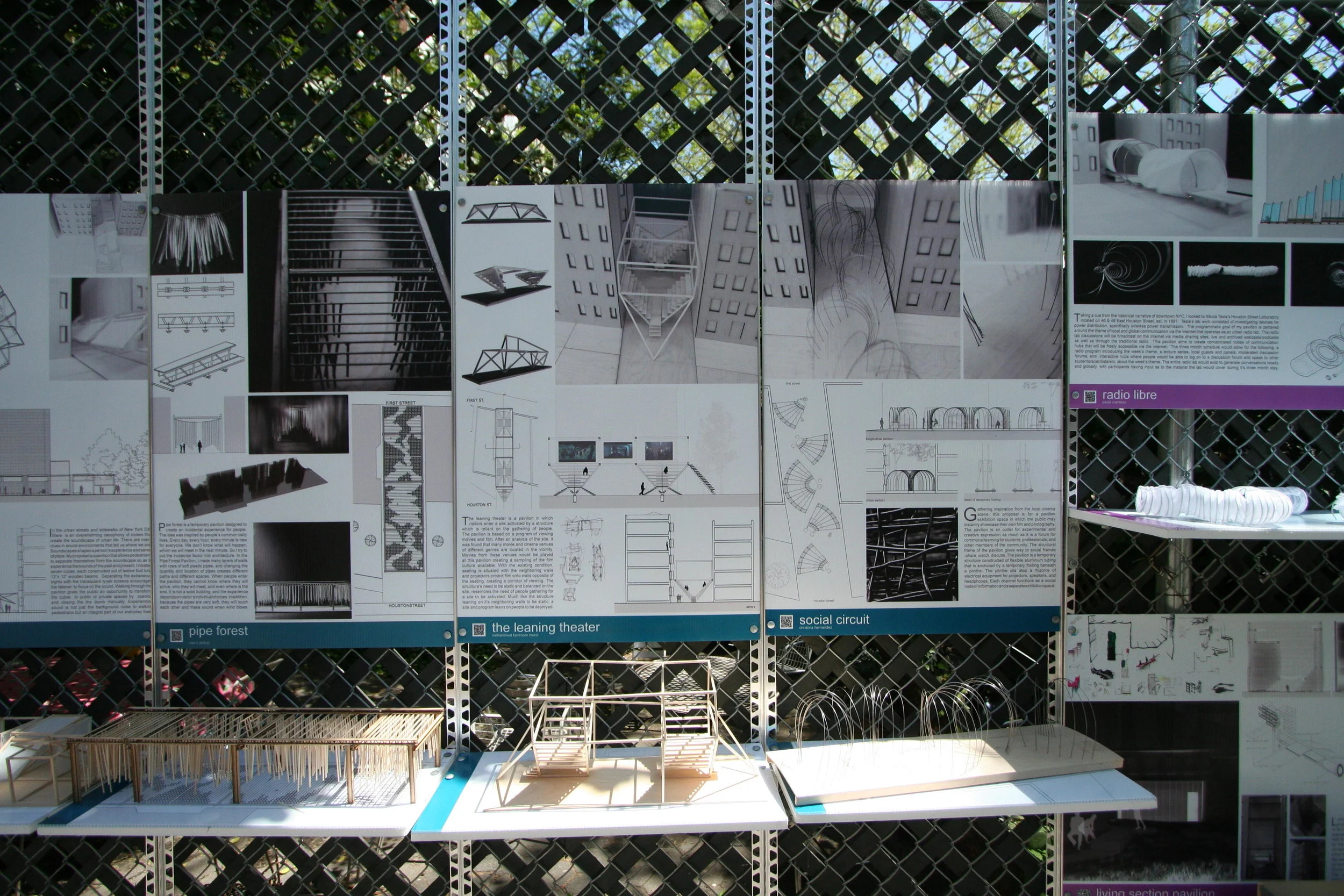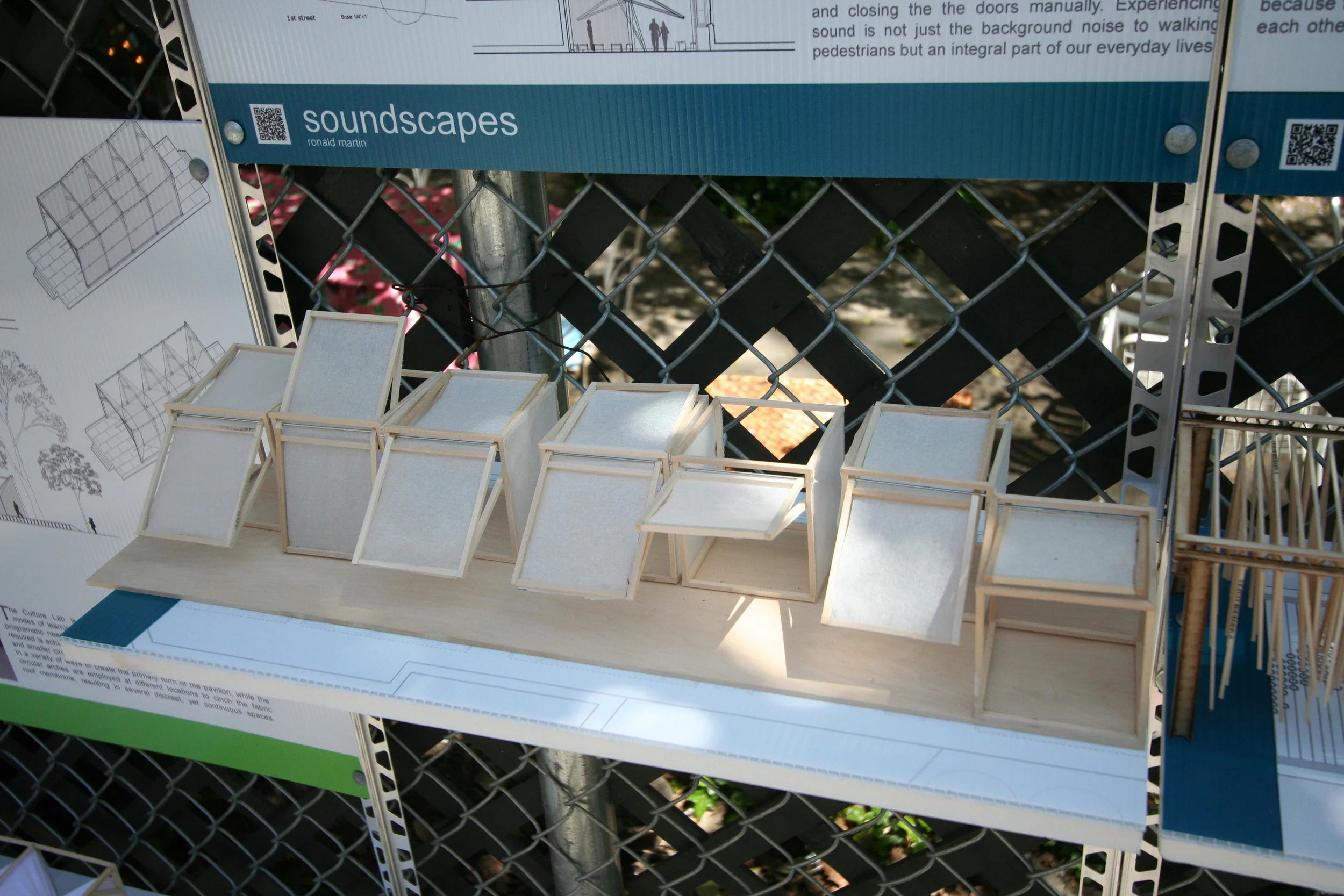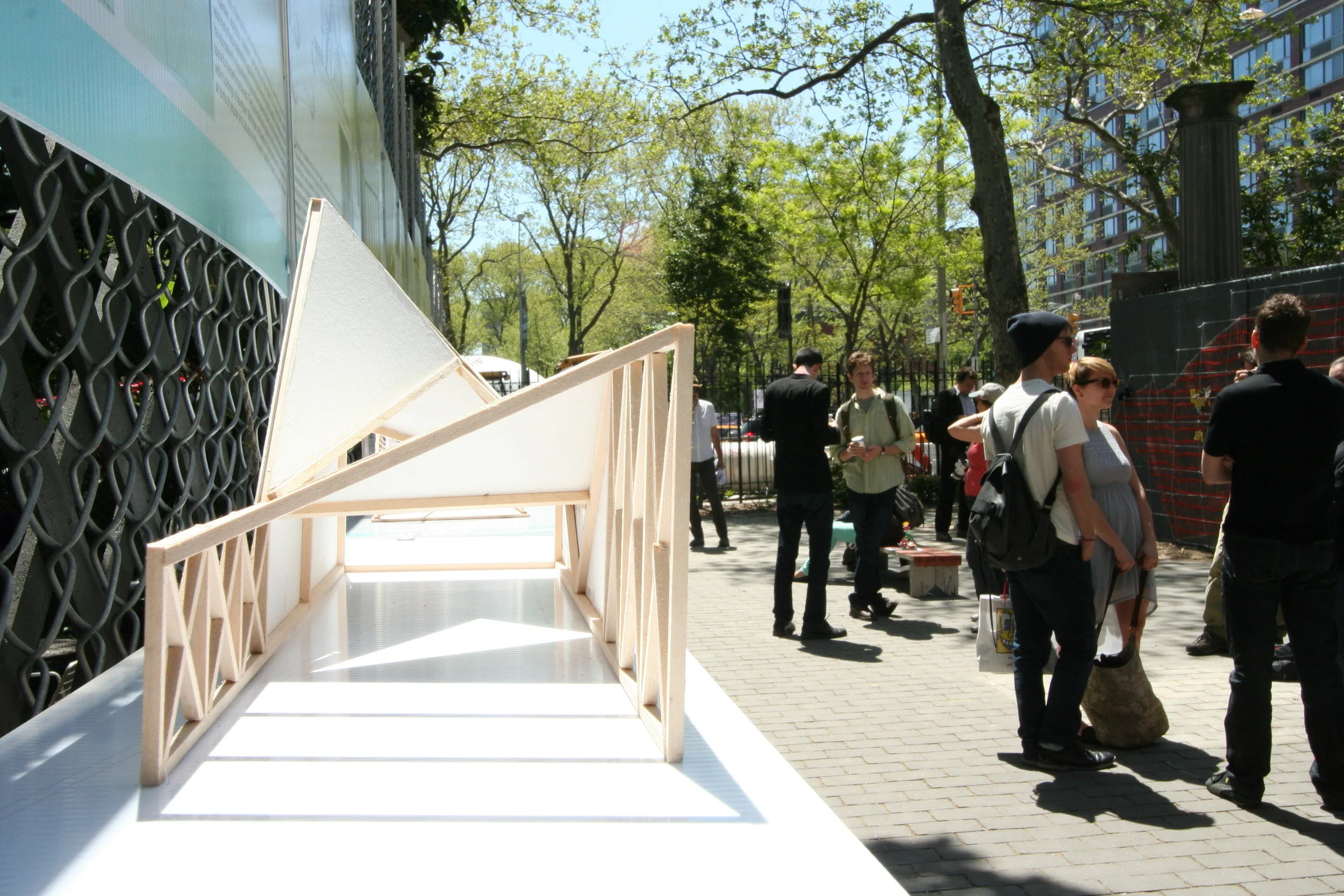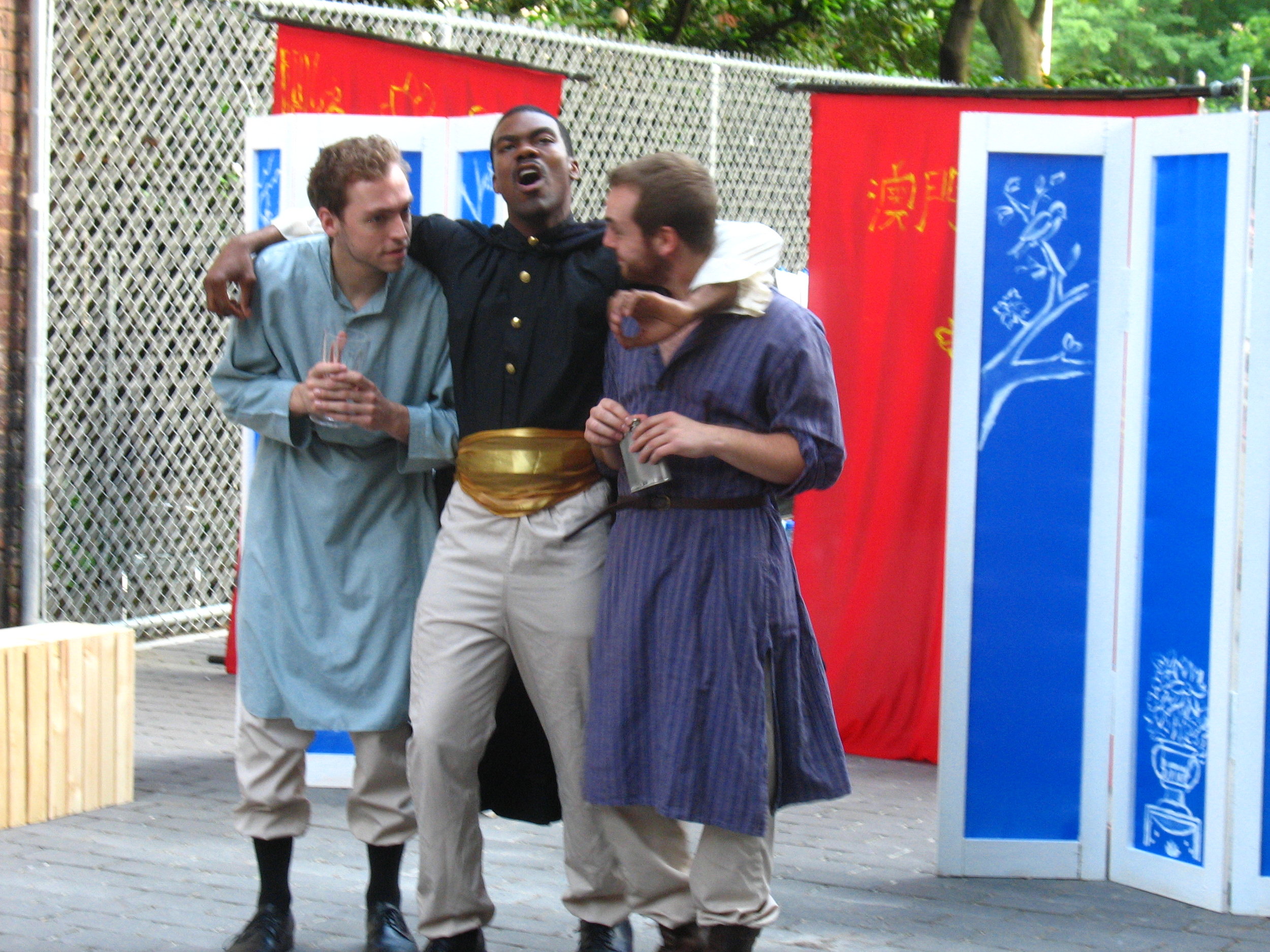FIRST STREET GREEN - an open art space
Silva Ajemian and Jorge Prado are co-founders of First Street Green. Our practice has been engaged in reanimating a public space on the Lower East Side of Manhattan in New York City. We teamed up with residents of East 1st Street to create First Street Green, a non-profit collaboration with the goal of converting a seemingly derelict lot of land located at 33 East 1st Street from an inaccessible, garbage-strewn, rat-infested piece of “vacant” land into an active public space. Our involvement with the residents of 1st Street began as a pro bono advisory position but quickly evolved into a partnership that lead to the establishment of FSG as the driving force behind revitalizing the lot.
Since 2008, First Street Green has converted a derelict building lot at 33 E. 1st Street in Manhattan into an open art space serving the Lower East Side community. Collaborating with NYC Parks and Partnership For Parks, FSG has successfully incorporated the lot into First Park. Today, FSG provides ongoing cultural activity in First Park by engaging with emerging artists, architects, community and cultural groups through a series of programs that activate this public space.
Our concept of a curatorial space can best be described as an open space art incubator. Our definition of open, on the one hand, is secured by the administrative imperative that park land be accessible to all and, on the other, meets four criteria: 1) all work should benefit the community, 2) emerging local artists and arts organizations will take precedence, 3) unfinished or work-in-progress will take precedence over completed work and 4) FSG will act as the conduit to get this done.
DATA MINING
As one approach to understanding the potential of FSG’s involvement at First Park, we used our workshops in the BMW Guggenheim Lab to solicit from local residents and Lab participants ideas of how the park could be used after the Lab moved on. We designed a system of foam tiles on which participants could write, draw and assemble their ideas. The tiles were cut in such a way that they could be fitted together to build a visioning wall. Roughly 2000 people attended the events and 400 tiles (all we had!) were illustrated and assembled into a wall 2 ft wide x 16 ft long x 8 ft high. The tiles were later photographed and their contents inventoried into a database. While not a statistically accurate survey, the visioning wall provided interesting results. Data mining the contents showed that art and arts related programming was the favorite programming idea
appearing on roughly 60% of the tiles. The 2nd most desired event was nature-related programming such as gardening, flowers, etc., appearing on 16% of the tiles. When we added nature with references to animals (from aquariums to giraffes!) the number rose to 23%. In addition to programming options, our mining revealed a 2 to 1 ratio of the occurrence of first person pronouns to combined second and third person pronouns and a 6 to 1 ratio for participatory rather than passive or received programming.
ANALYSIS
As we planned, organized, participated-in, and watched the events at First Street Green, we noticed a peculiar occurrence. For example, during a theatrical performance, a dog-walker would arrive and walk through the performance; during a conference a group of school kids would run across the site. The park opens at dawn and closes at dusk. During the day, residents in the area use the park as a shortcut between 1st Street and Houston Street, passersby walk in to look at the murals, the sculptures, to sit under a tree, to have a cigarette, to arrange to meet friends, to tag a wall.
We began to understand the difference between our activities and those of the residents of 1st Street. The diagrams below are a two-dimensional illustration of the interactions of groups, events, days, and time. It began as an exercise in coordinating our activities in the park across time. We began to question its relationship to the local residents, how would their activities intersect these planned events, how would they be illustrated in this diagram? We used a figure-ground inversion to describe the unplanned, unrecorded, daily life of the park. All areas undifferentiated, unscheduled, unconstructed, unmarked, represented this daily activity.
It came to us that the daily use of the park represented a typical longitudinal use of any site, a continuous unbroken plane of horizontal activity: walking on the plaza, sitting on a stone wall, crossing the gravel path, stepping into the flower beds. Horizontal became the expression of everyday life. On the other hand, the events that we planned, the groups who performed, all came and went in finite bursts of activity, leaving no permanent trace in the park. The events themselves were sectional glimpses where vertical planning and preparation intersected the horizontality of the park’s daily life like momentary, vertical interventions, like the beams of a flashlight through a screen. We began to see the horizontal/vertical opposition as a definitive spatial expression.
Paper presented at the 102nd ACSA Annual Meeting in Florida, 2014 - GLOBALIZING ARCHITECTURE / Flows and Disruptions. Published in Conference Proceedings.
WORKSHOPS
In 2010, the Guggenheim Museum asked New York City Department of Parks and Recreation to recommend a tract of Parks-owned public land that might host the BMW Guggenheim Lab, a proposed urban laboratory scheduled to travel the world studying the local/global dialectic. It was to begin in New York City with a three month residency in the summer of 2011. Largely the result of First Street Green’s ongoing efforts on behalf of the East 1st Street lot, NYC Parks recommended that the Lab work with FSG to host it at the lot. The Lab’s residency proved pivotal to the lot’s development. They remediated the site to allow for public access and invited FSG to hold a series of workshops to explore future uses of the lot beyond the Lab’s residency. As of the Fall of 2017, we have completed our 6th full season of programming at the lot, now officially named, and incorporated as part of, First Park.
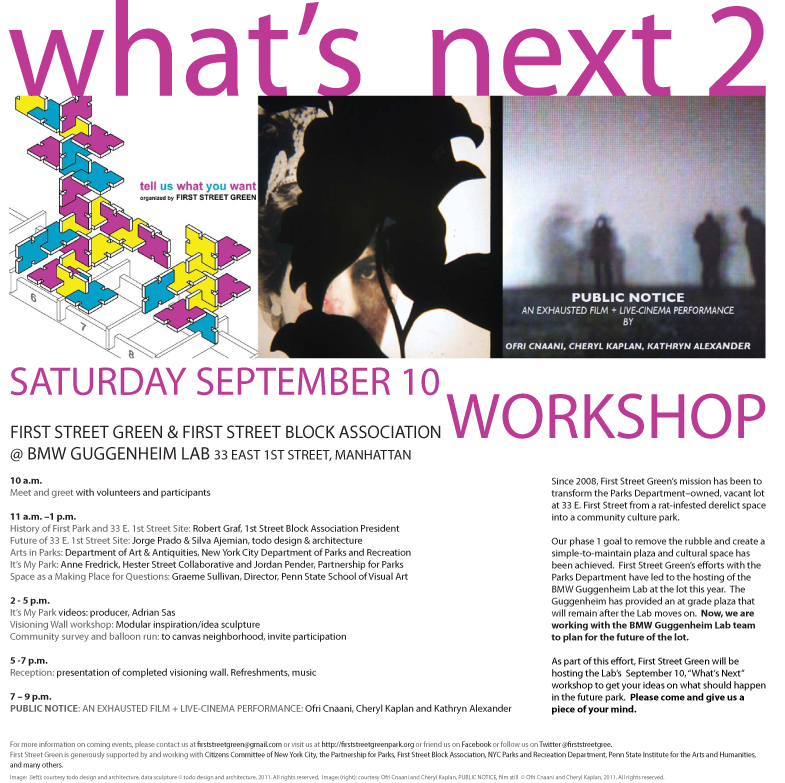
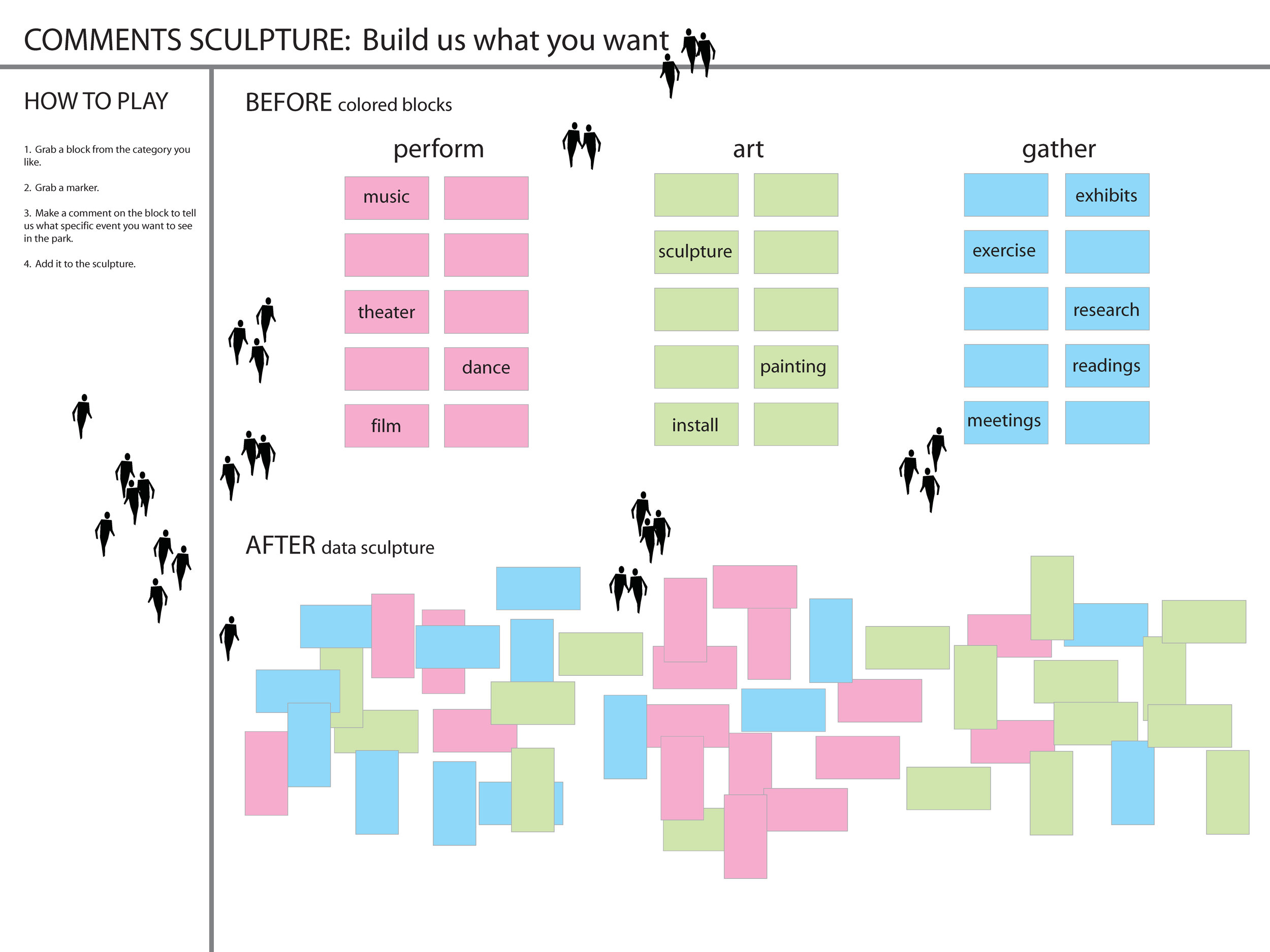
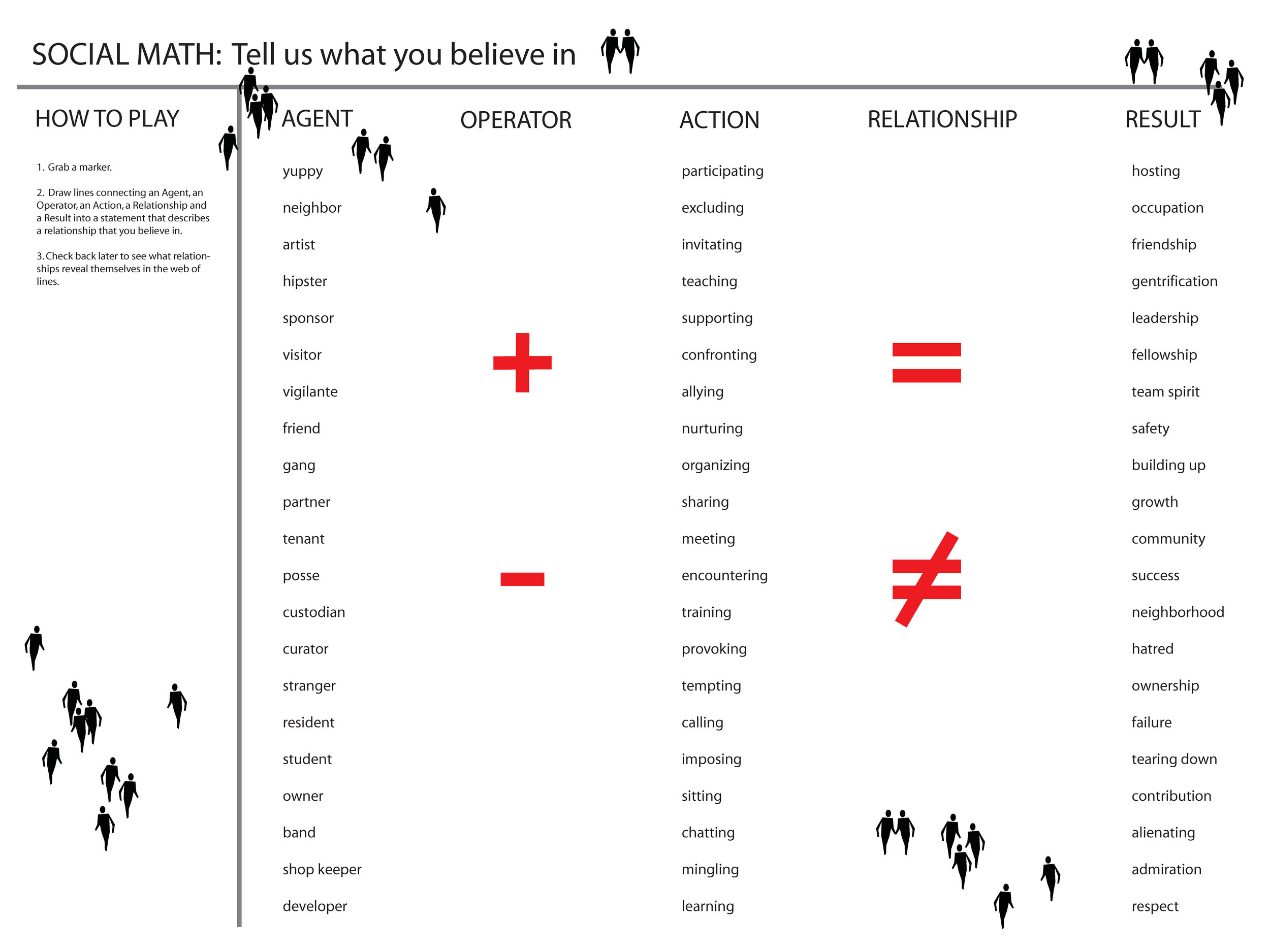
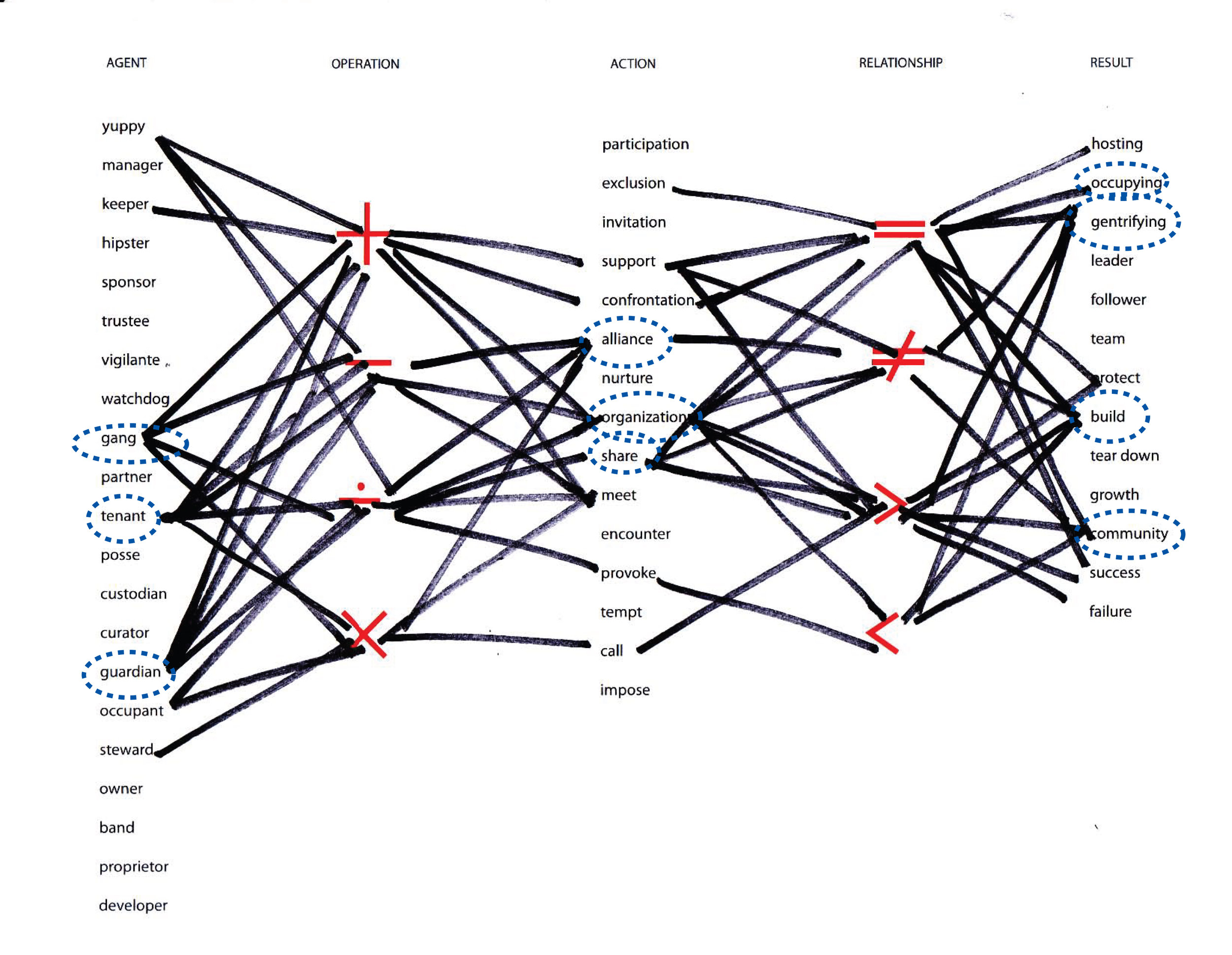
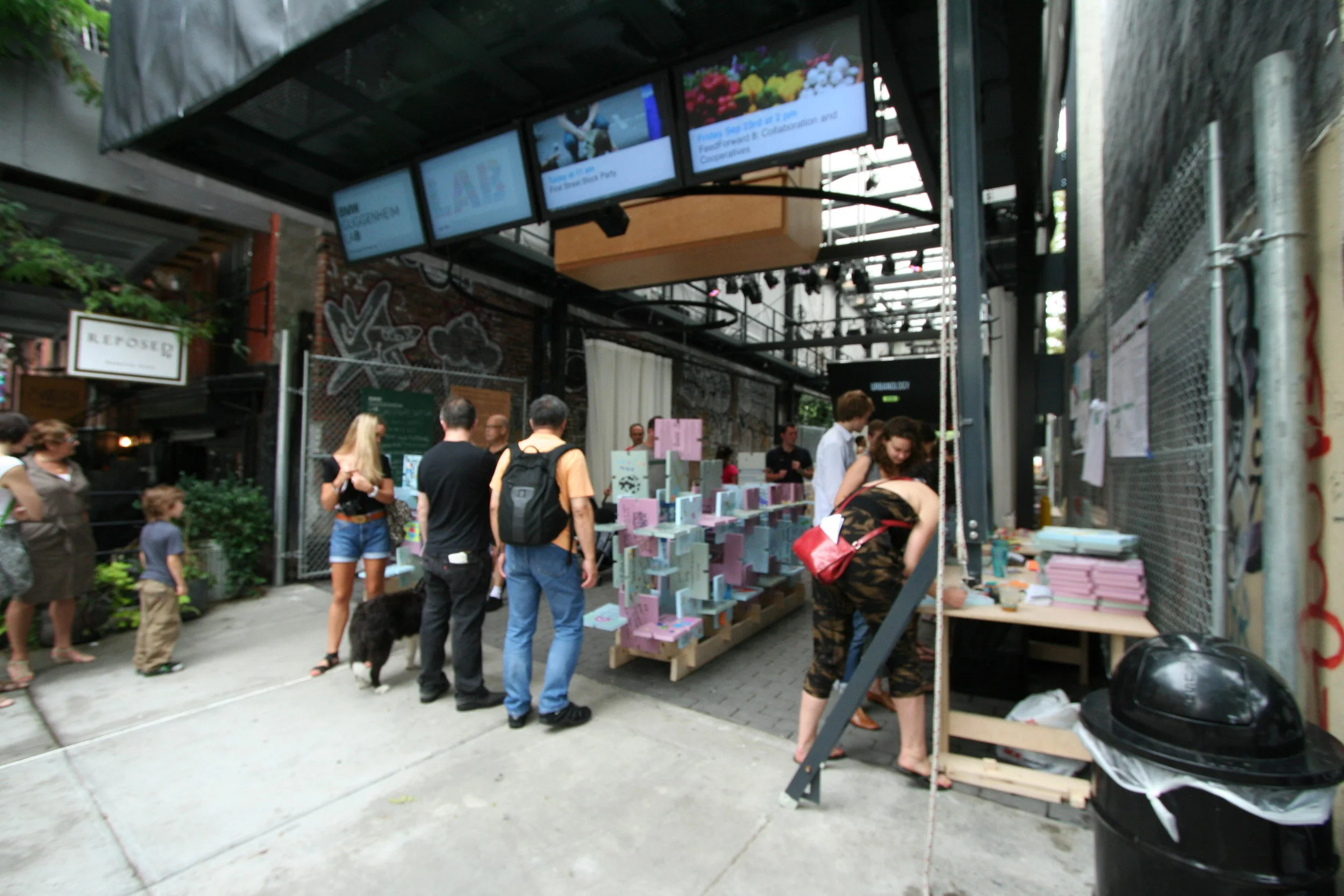
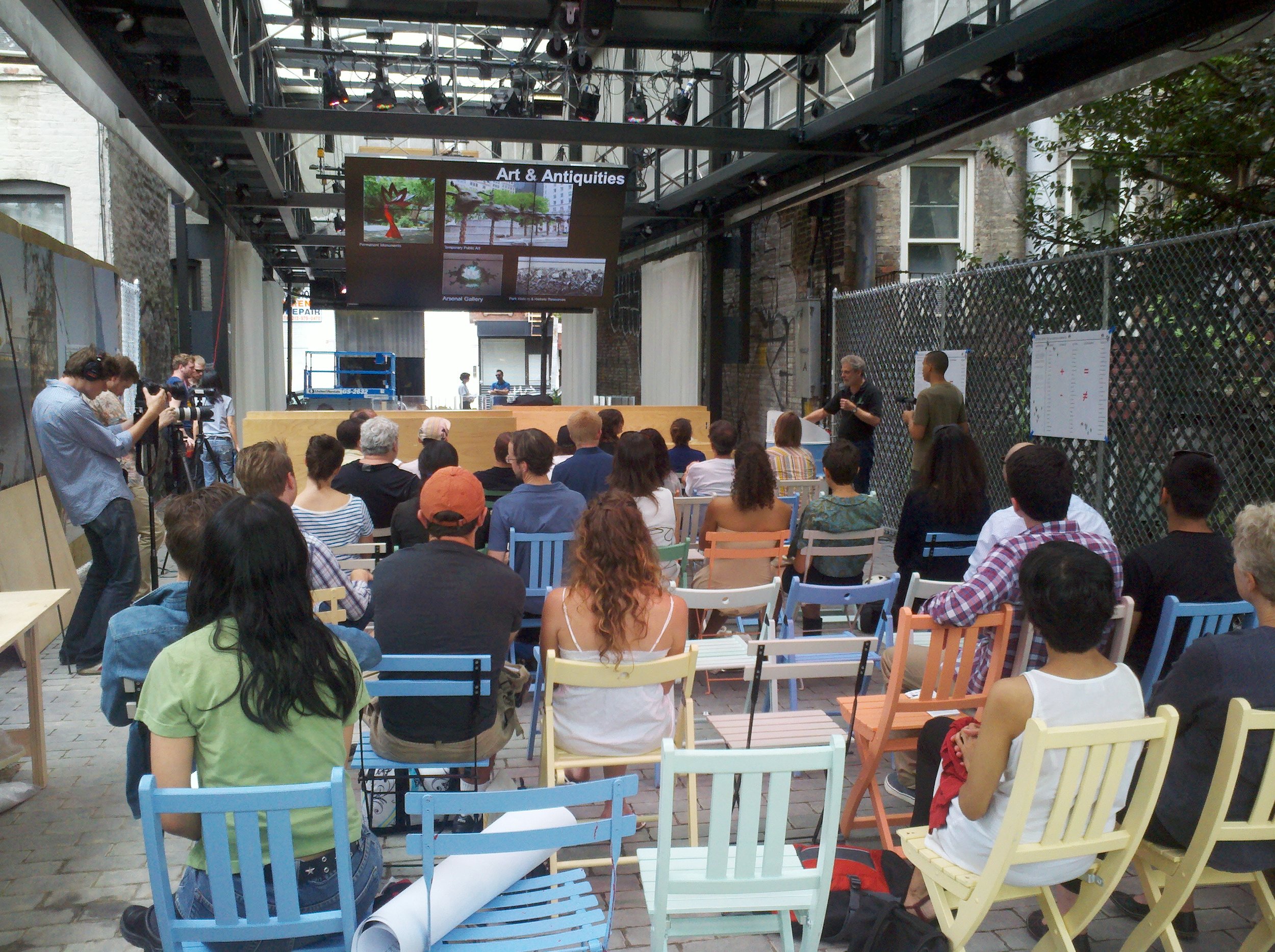


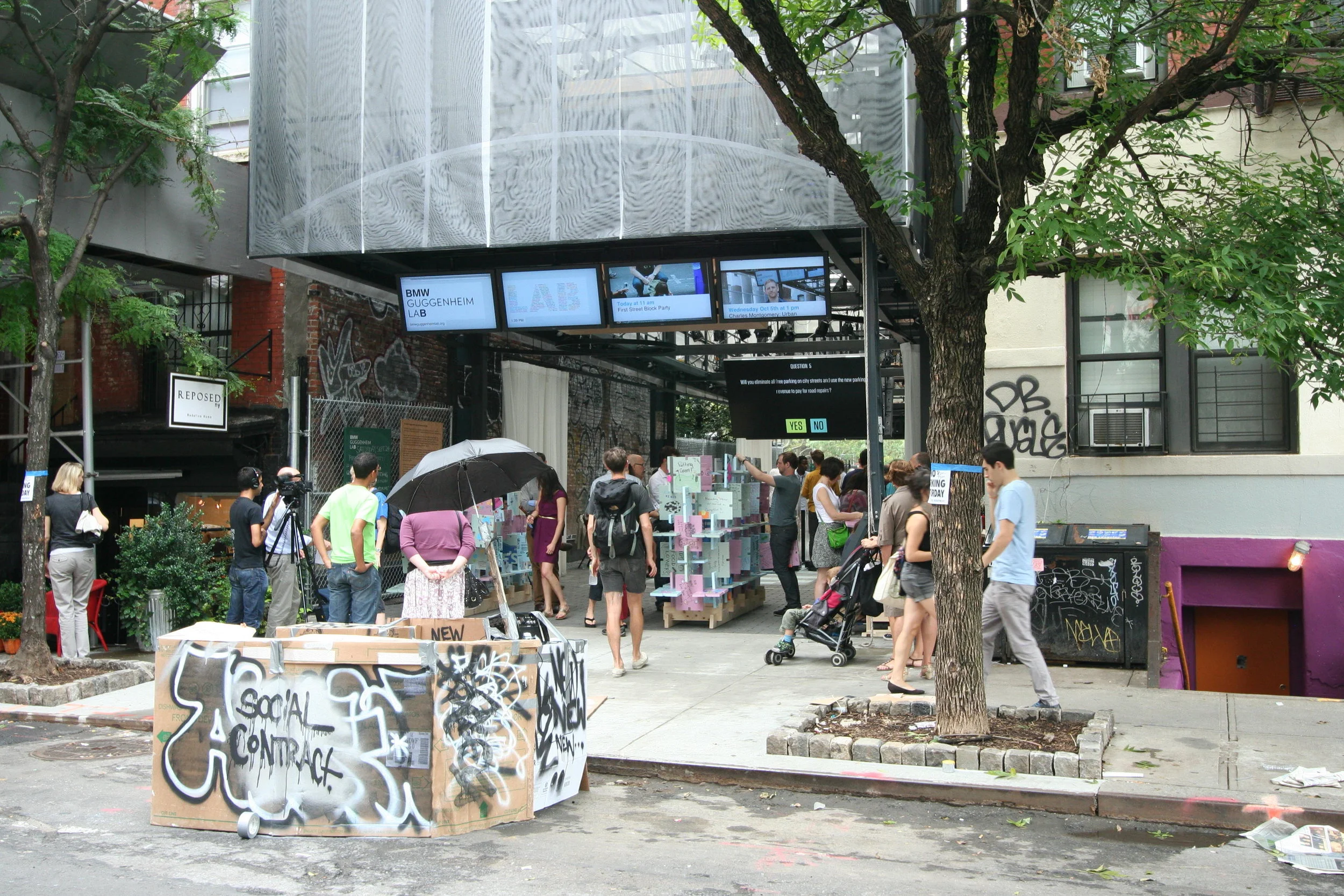
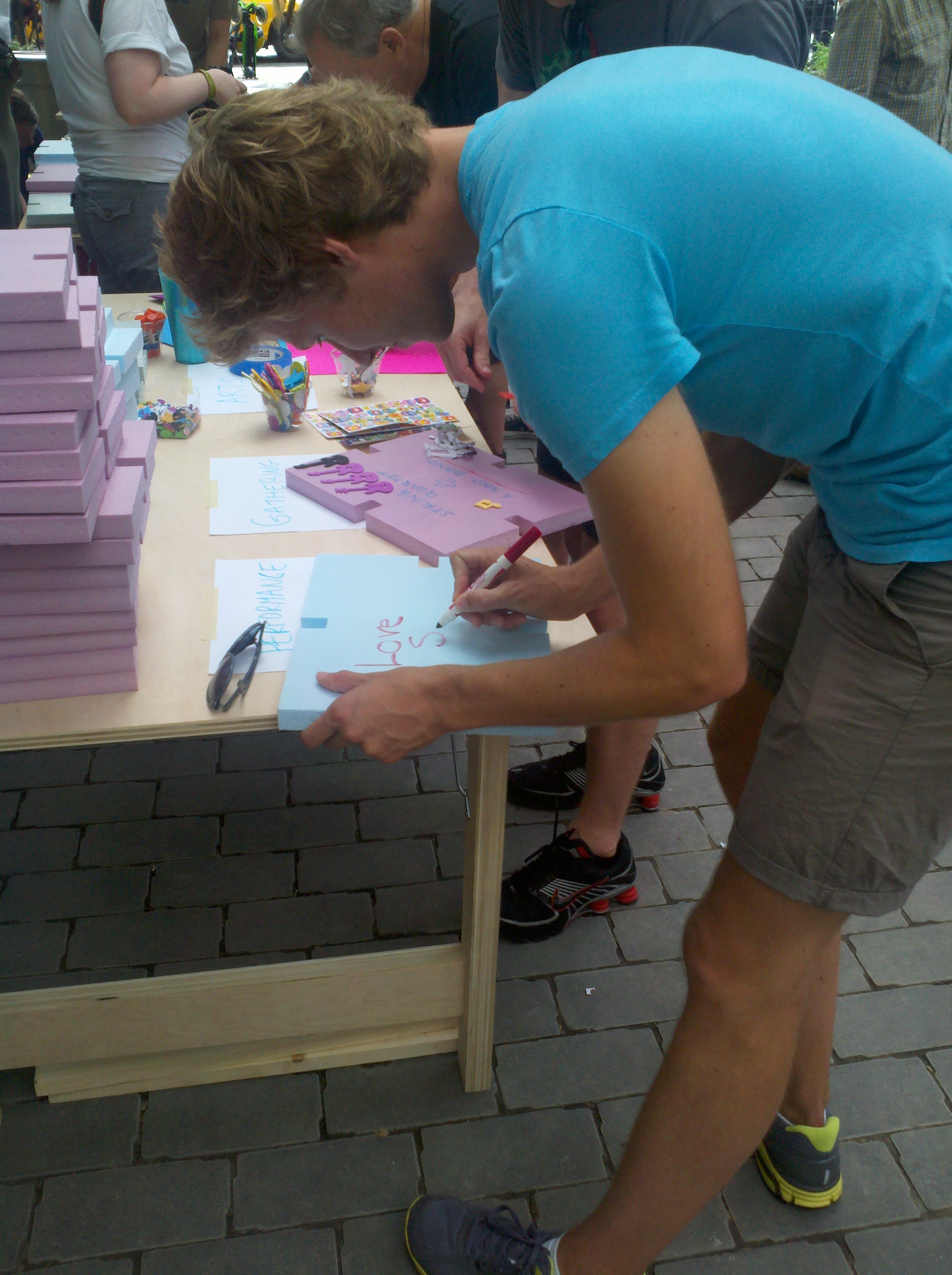
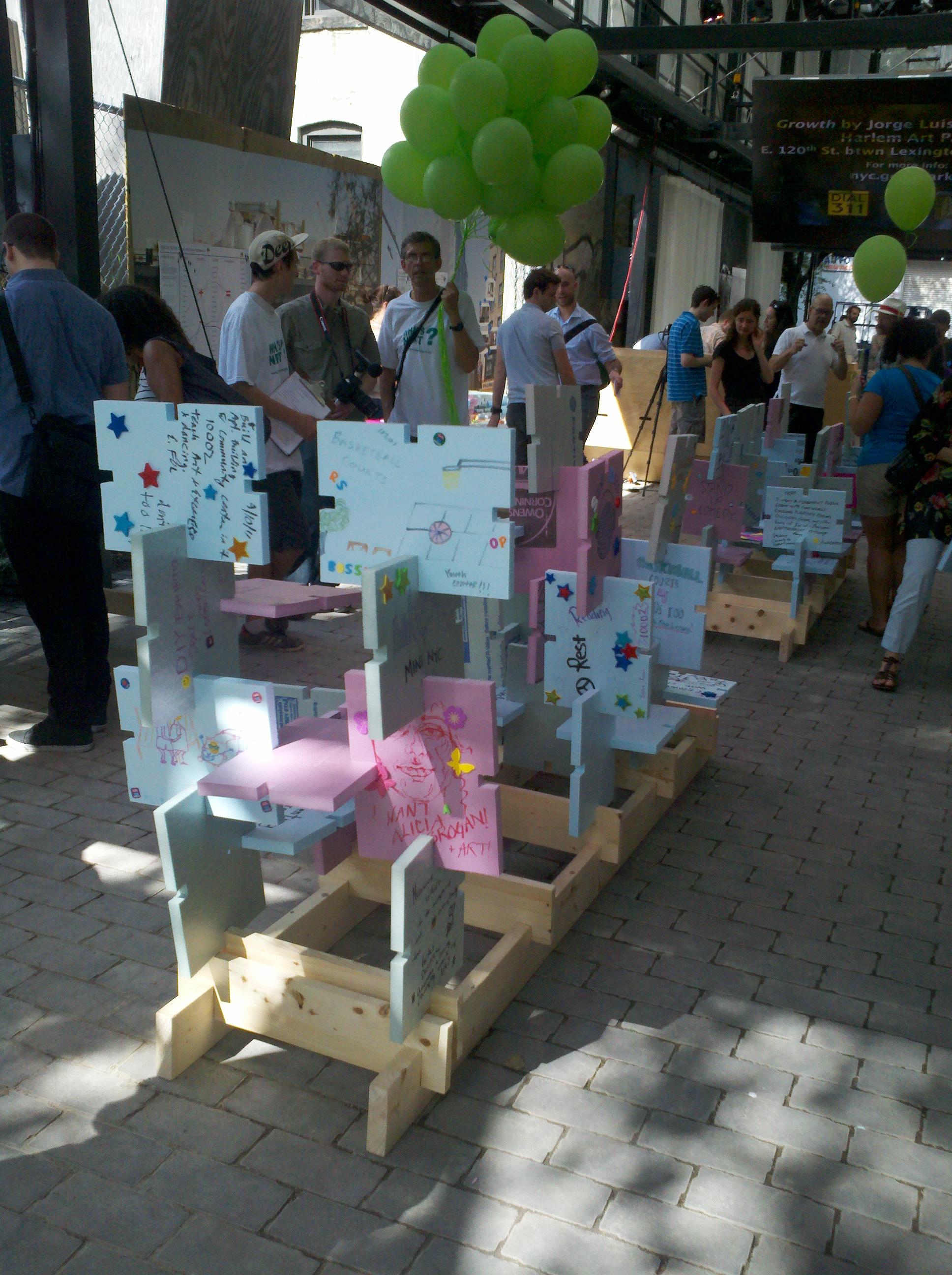
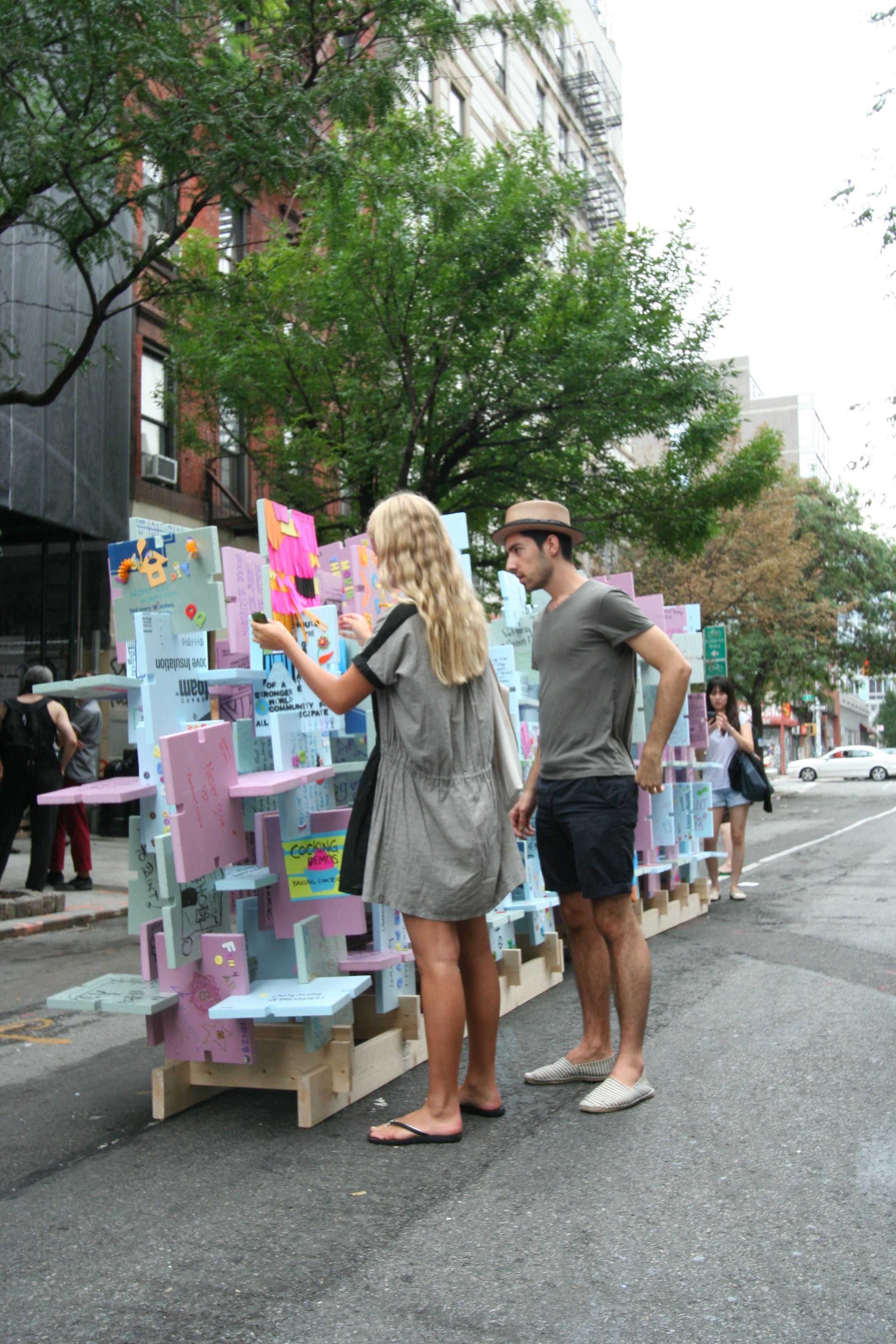
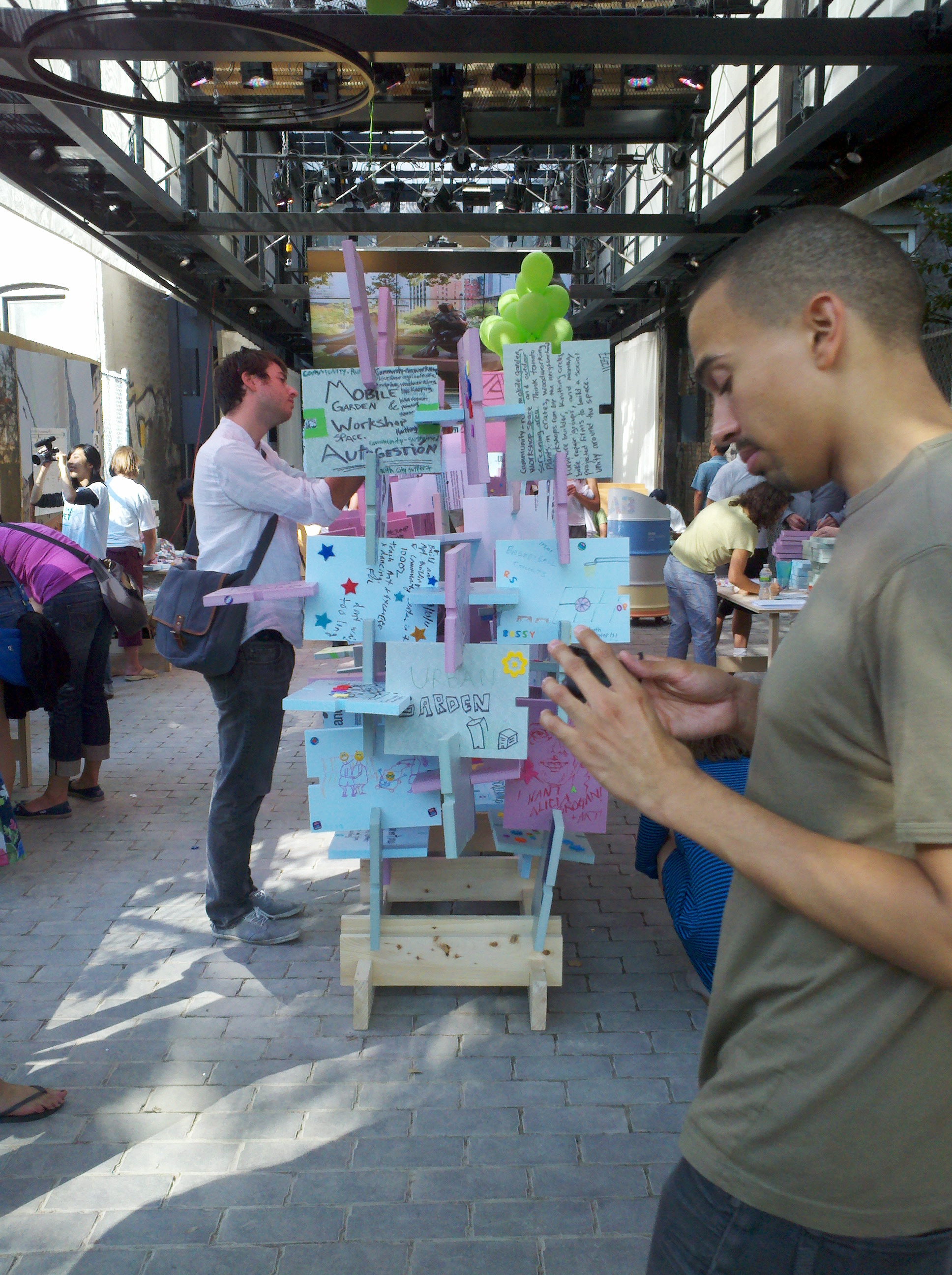
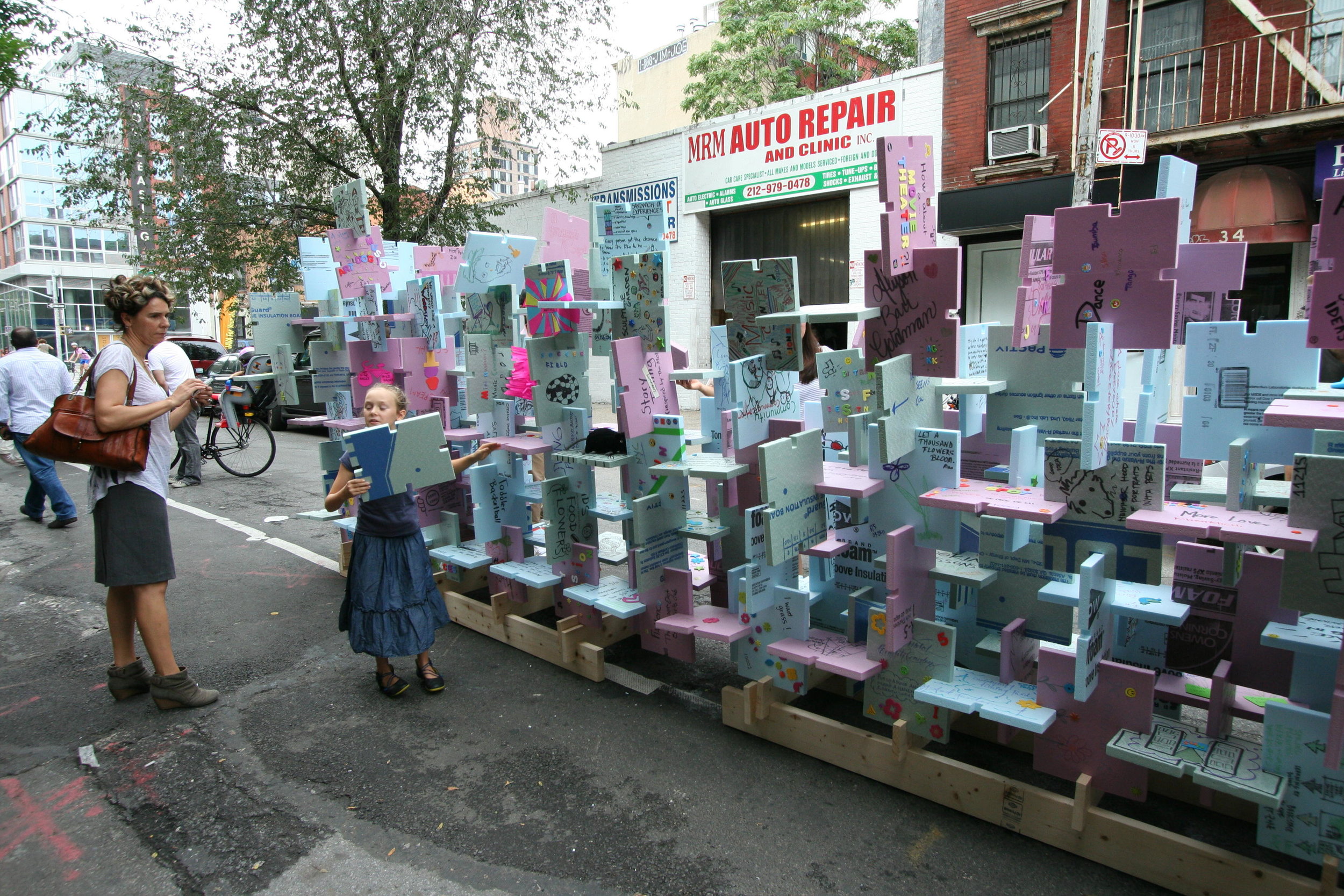
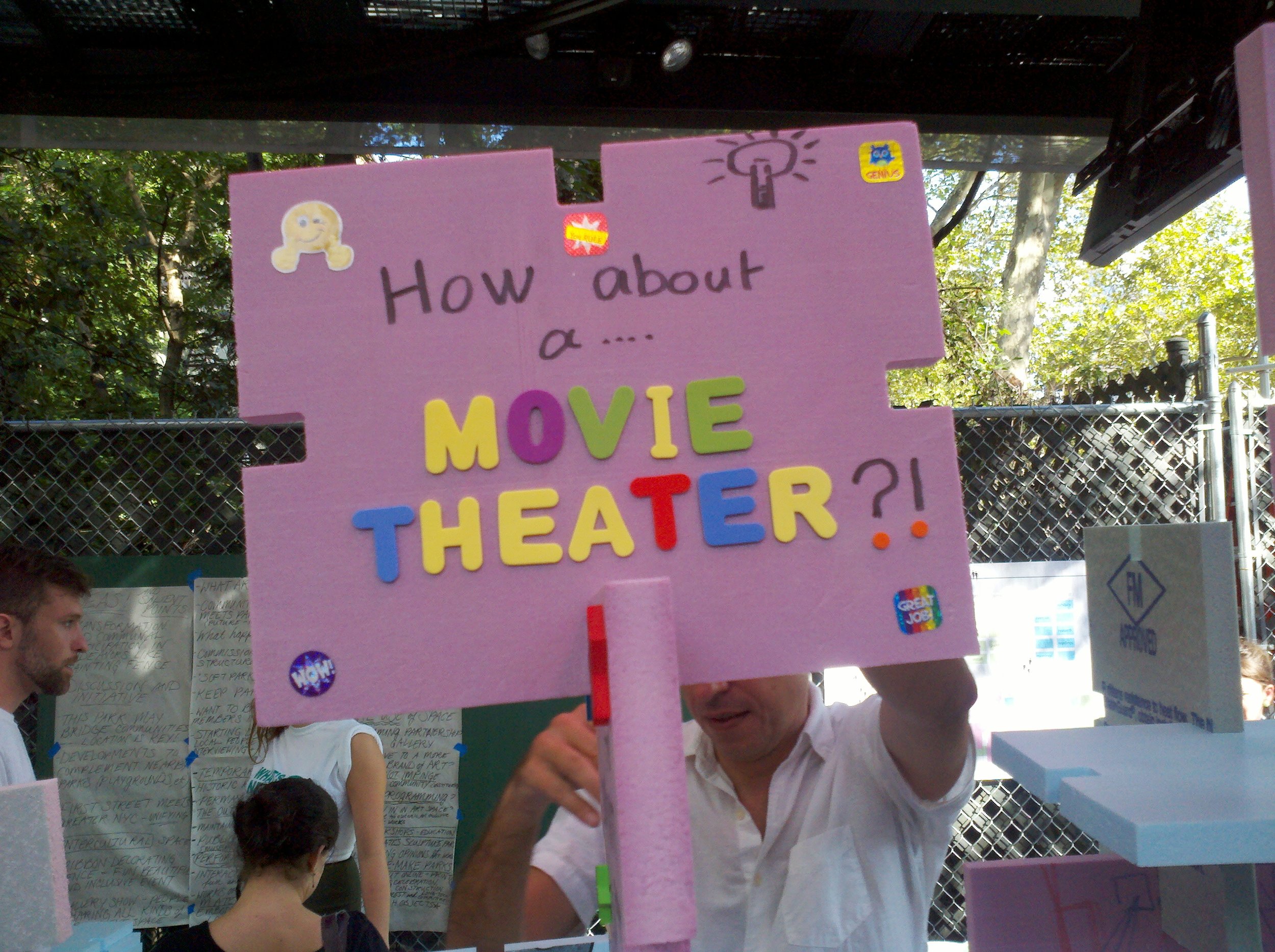

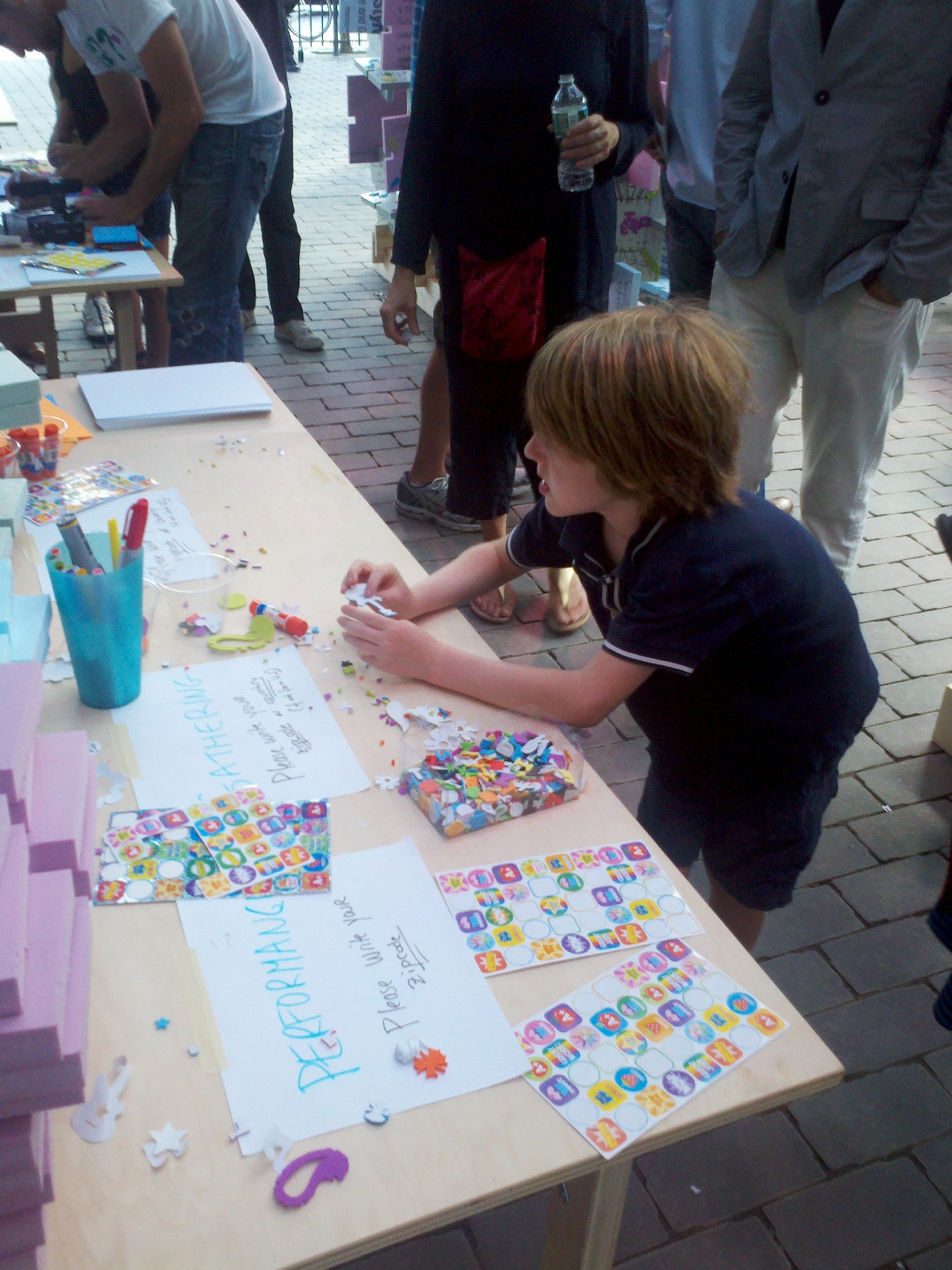
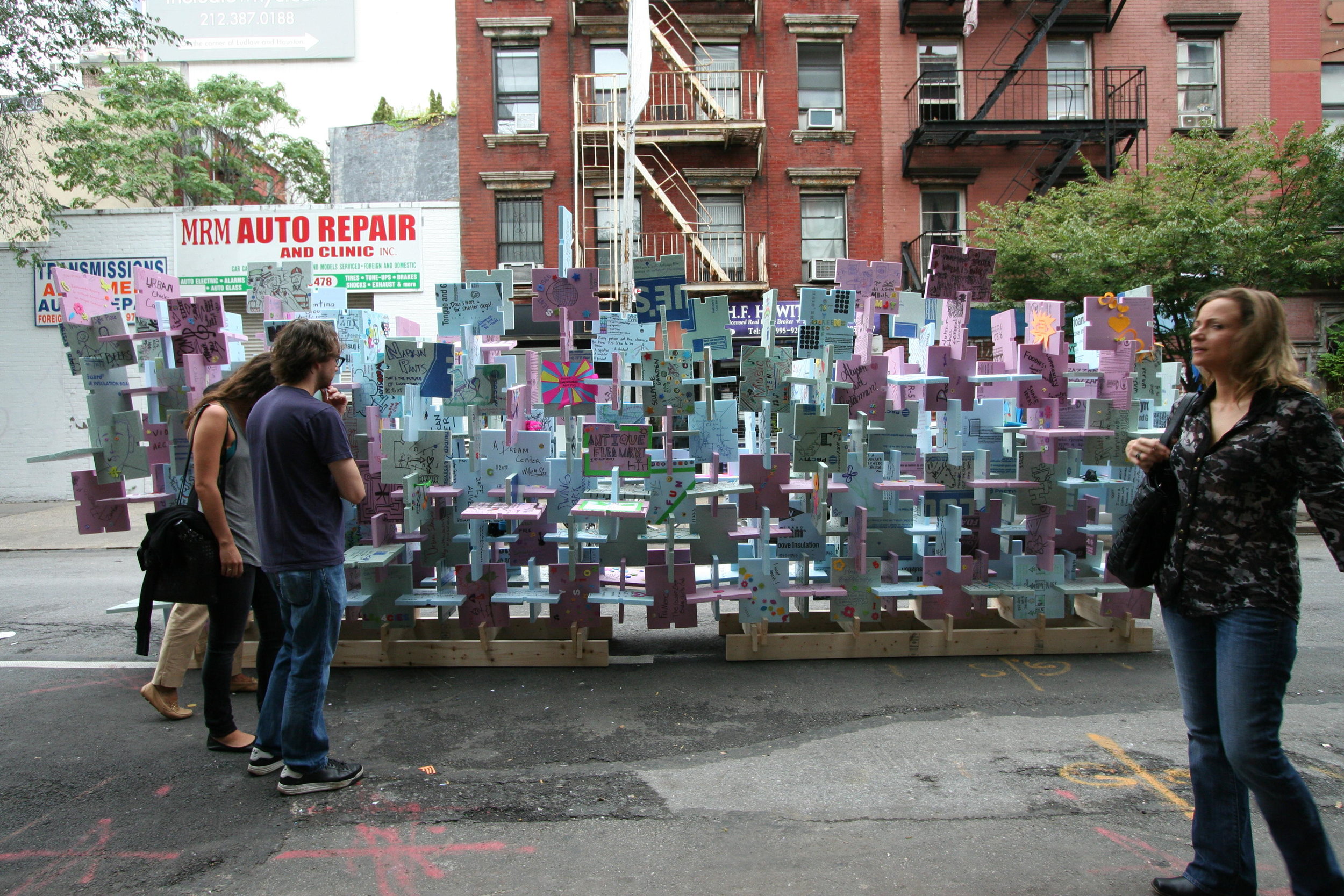
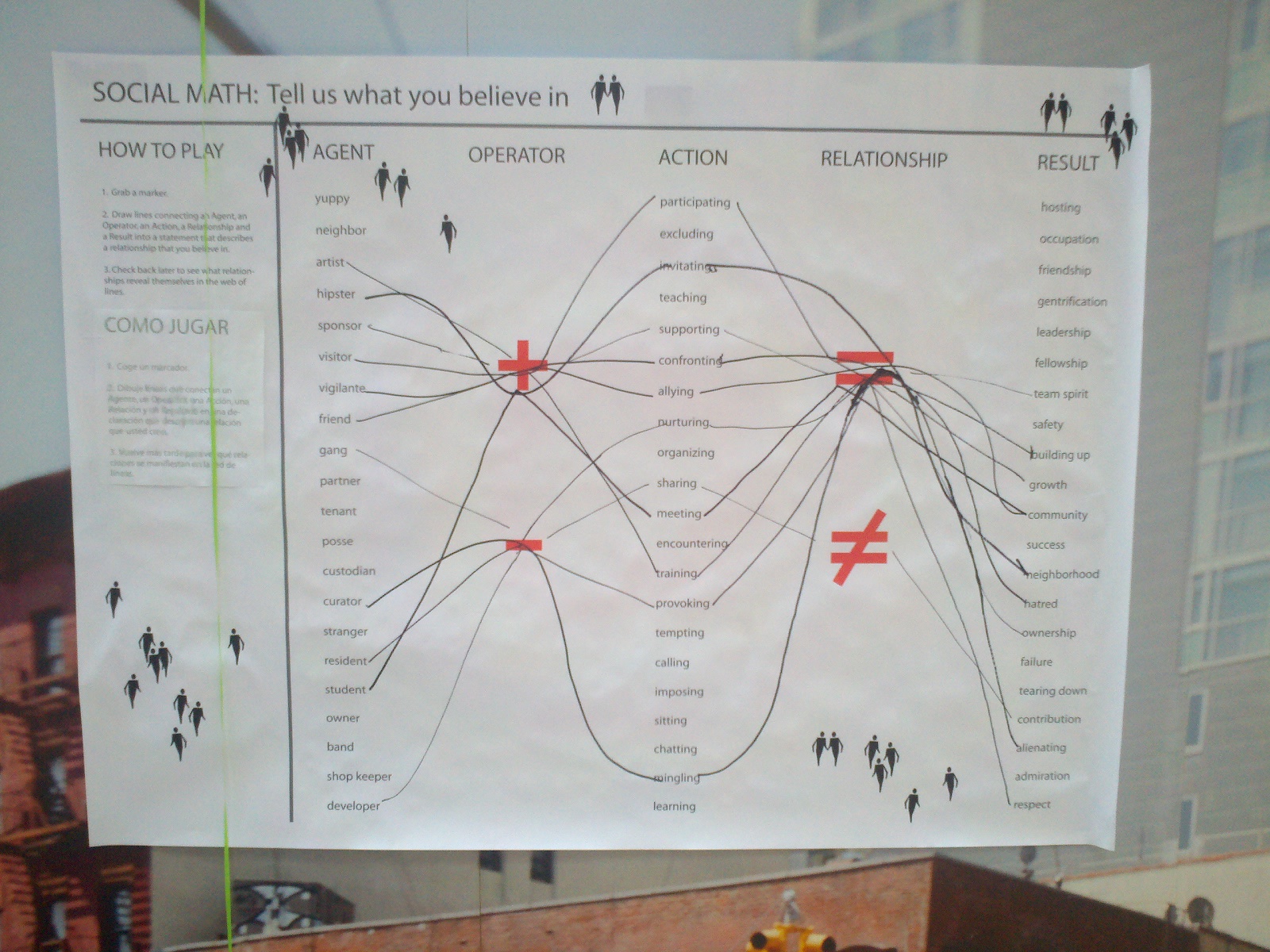

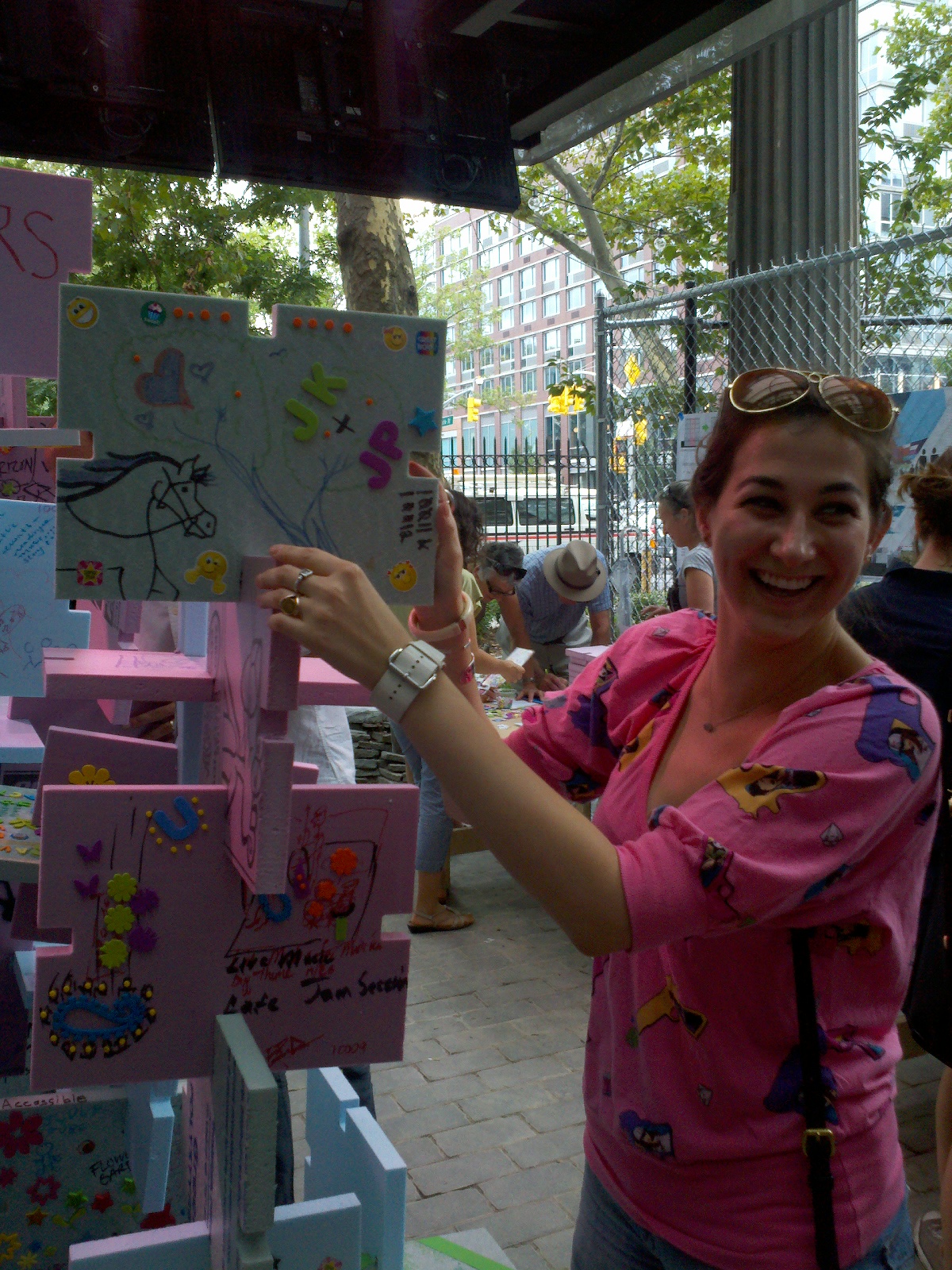
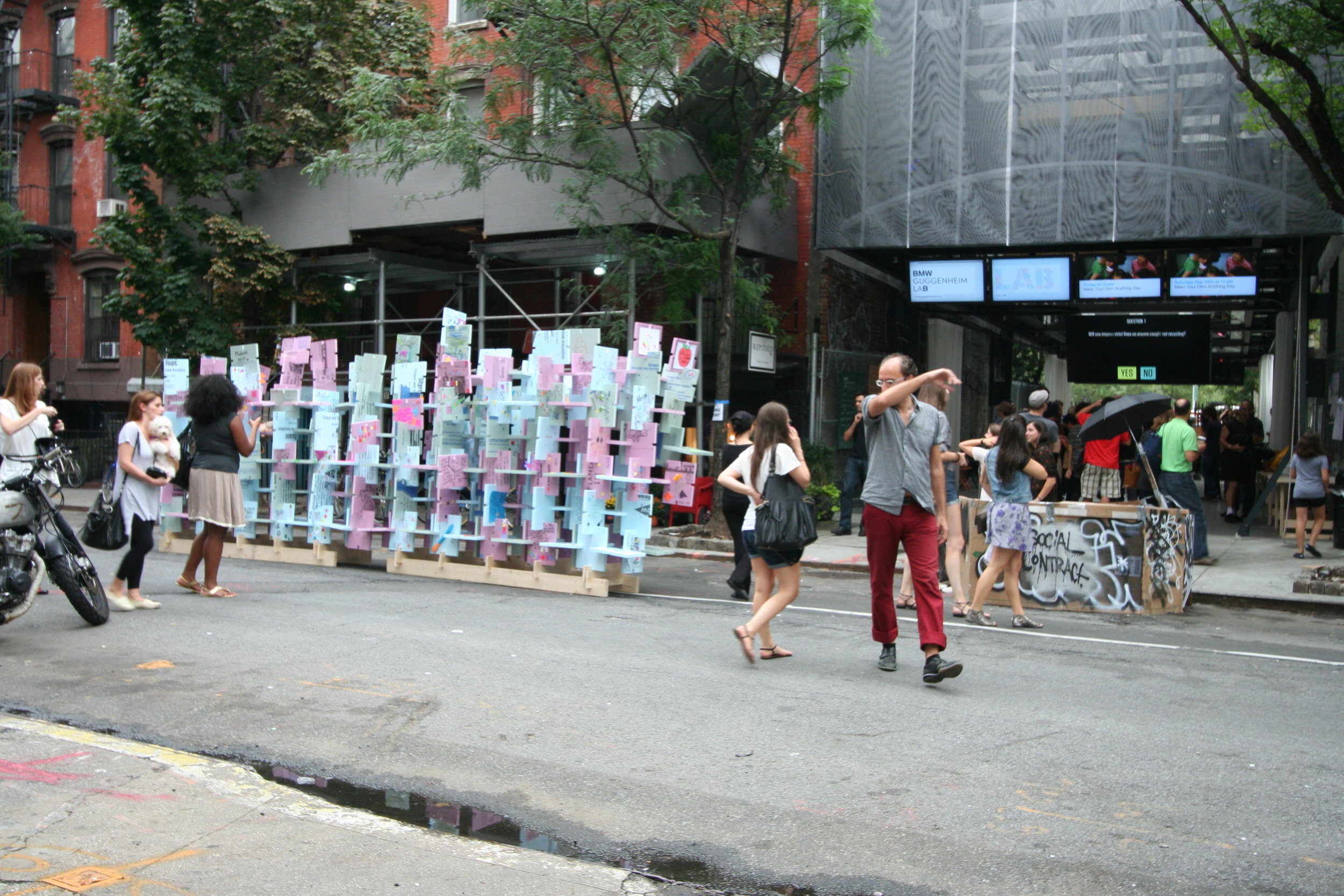
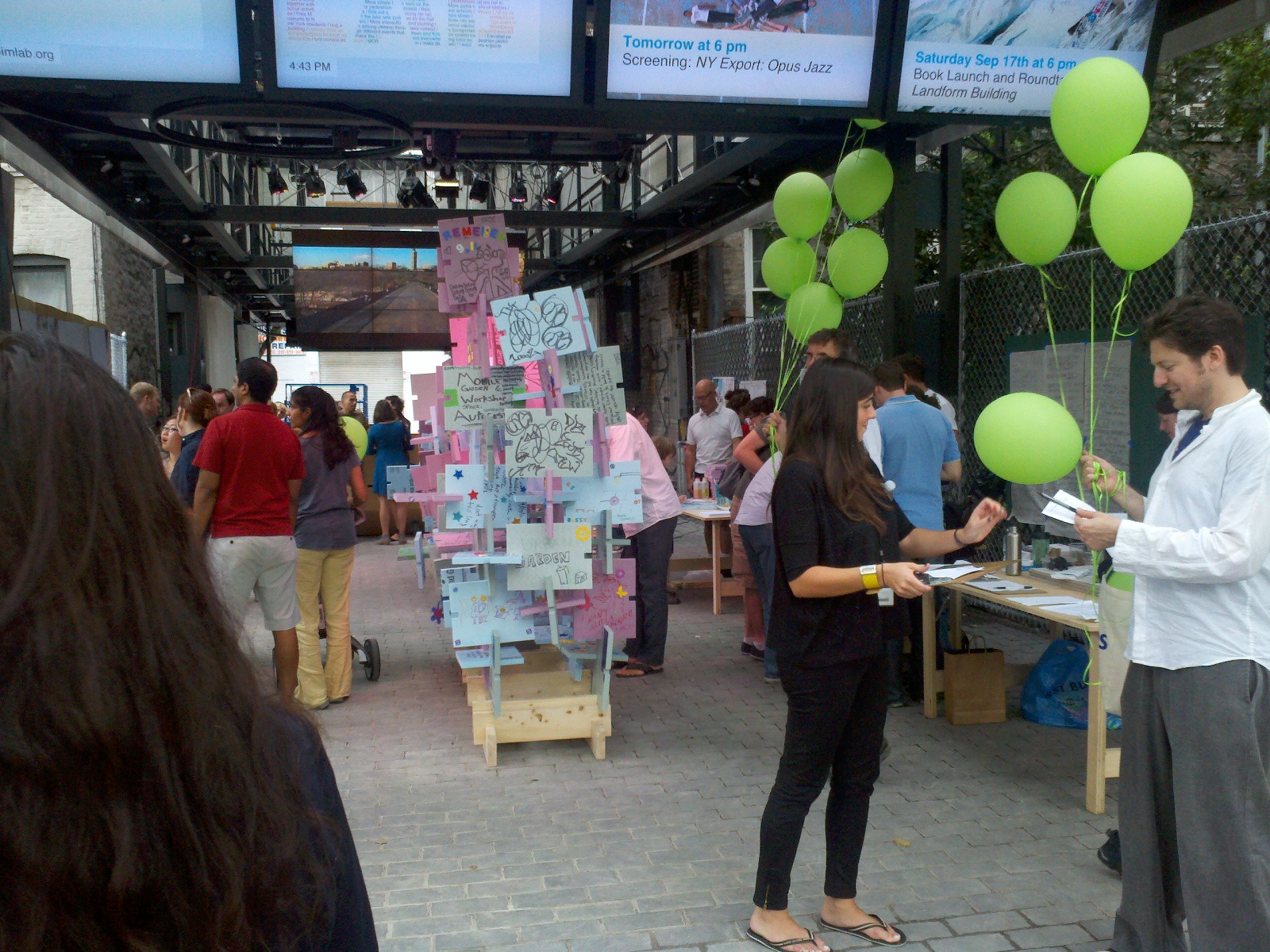
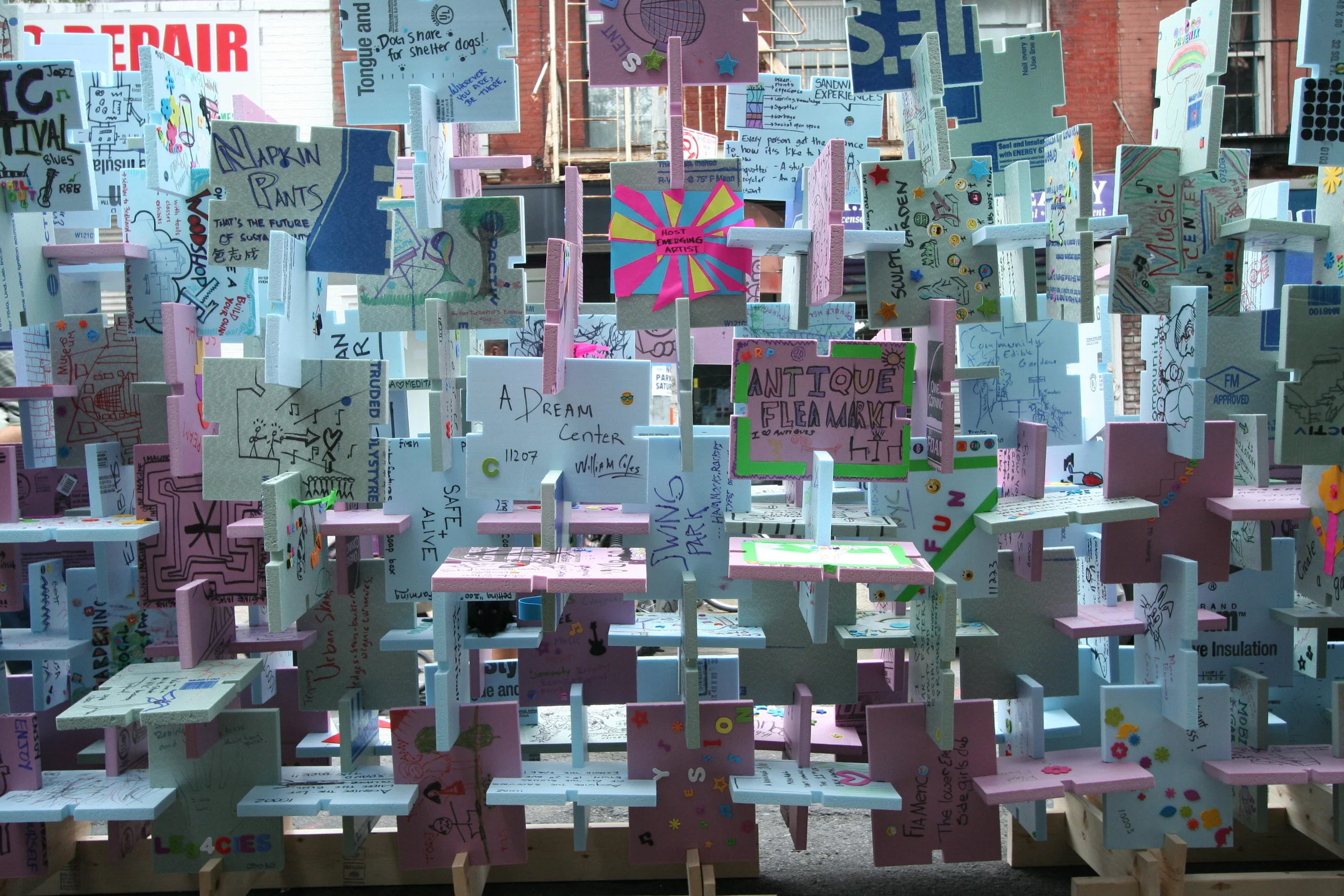
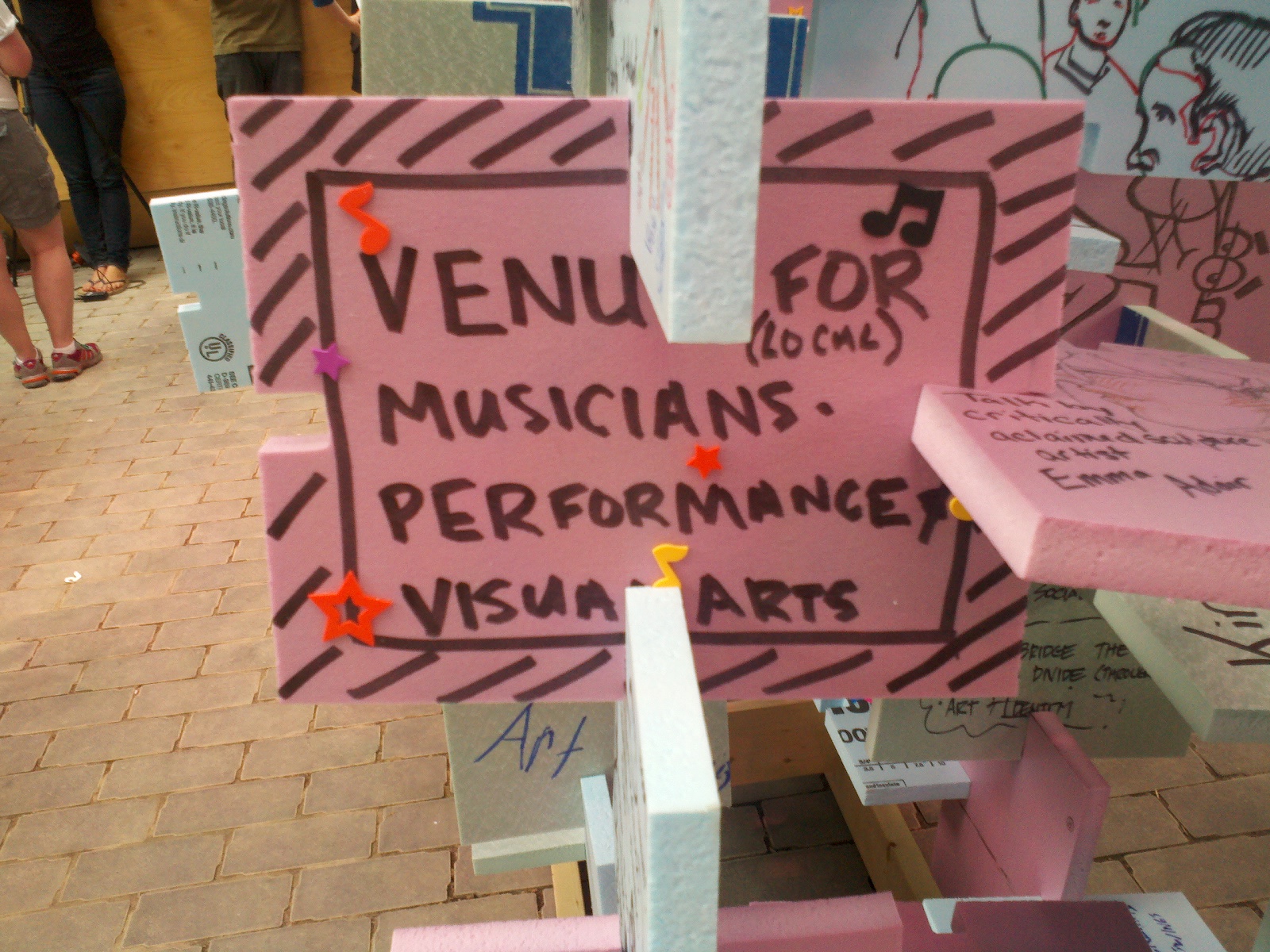
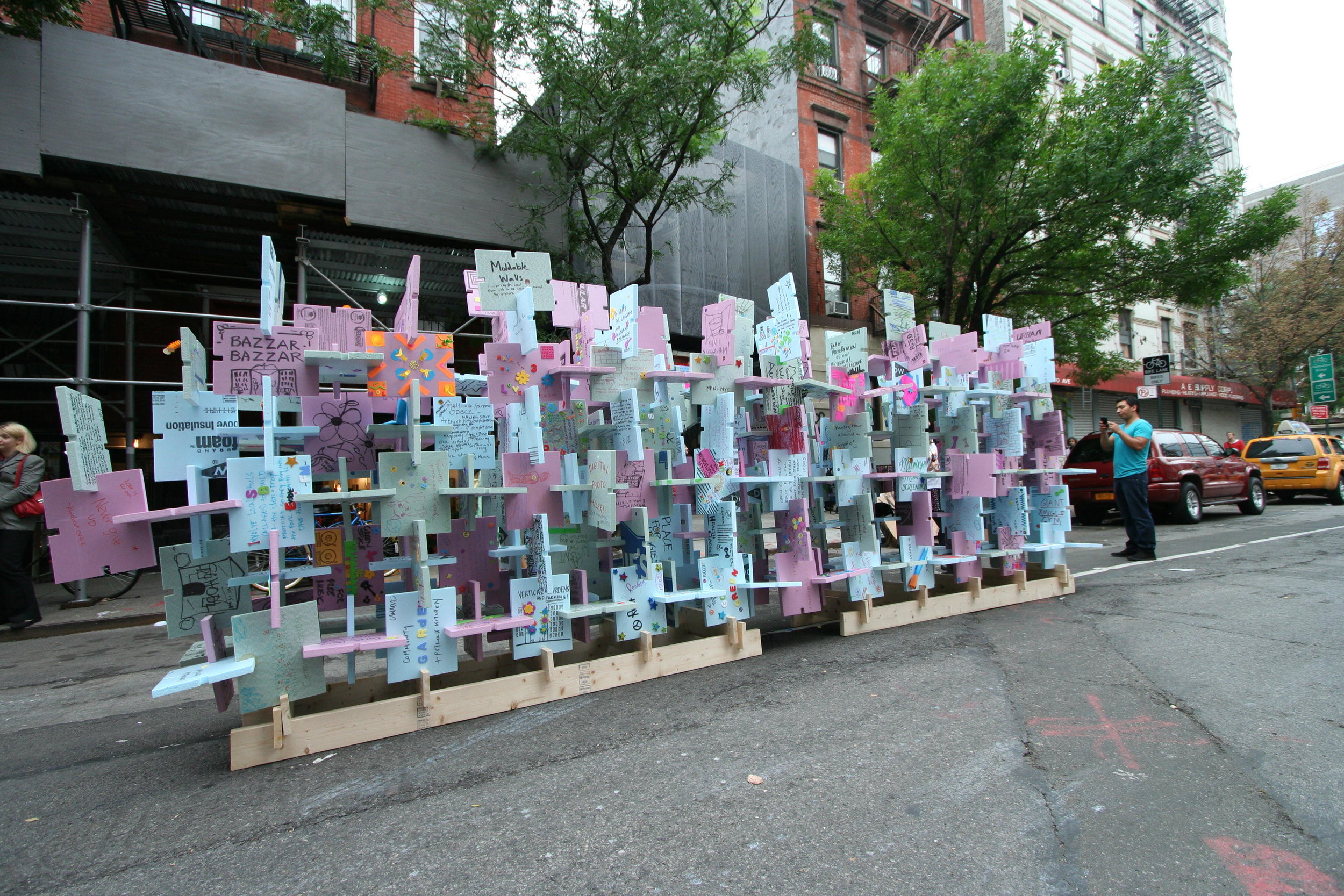
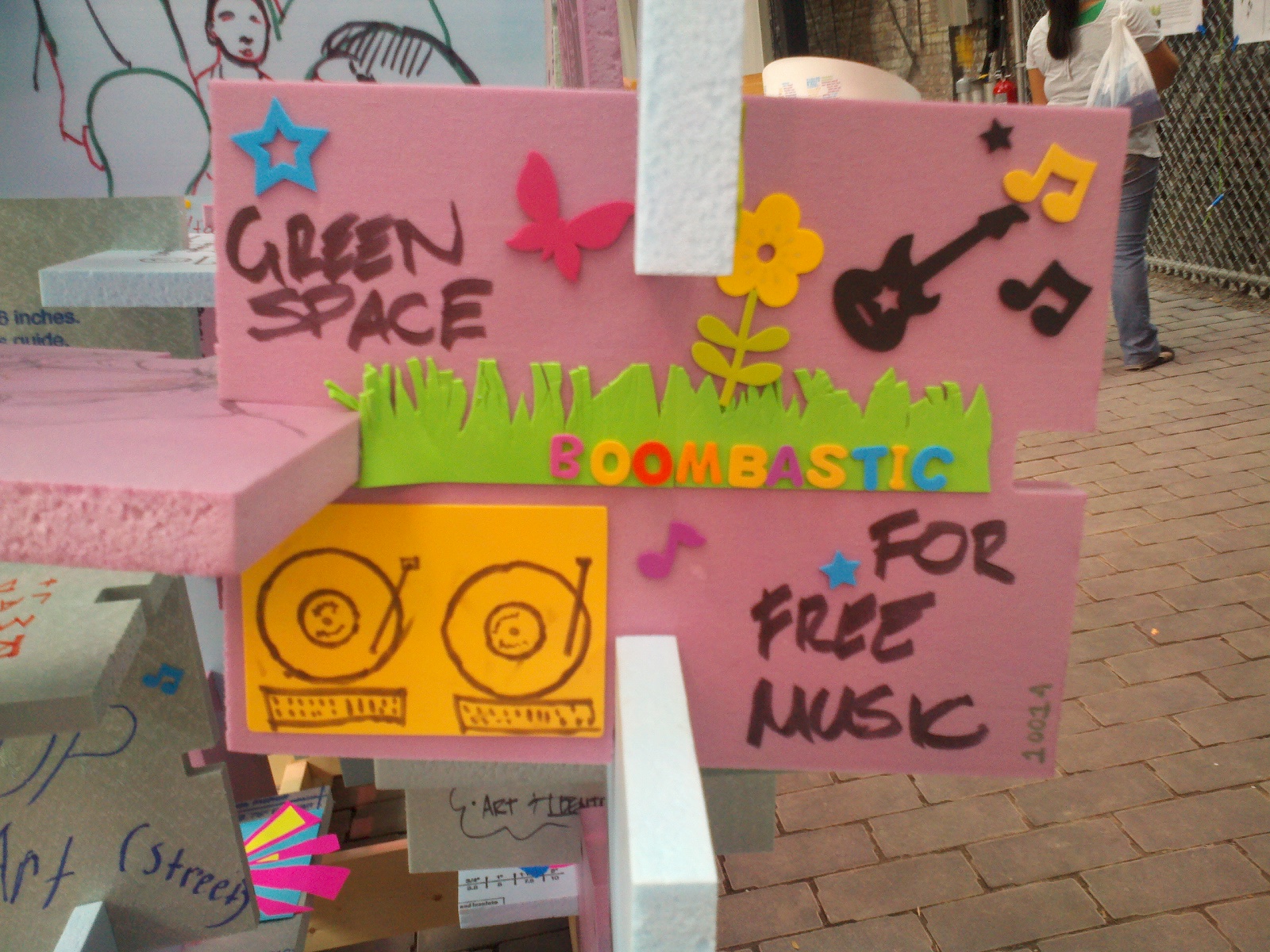
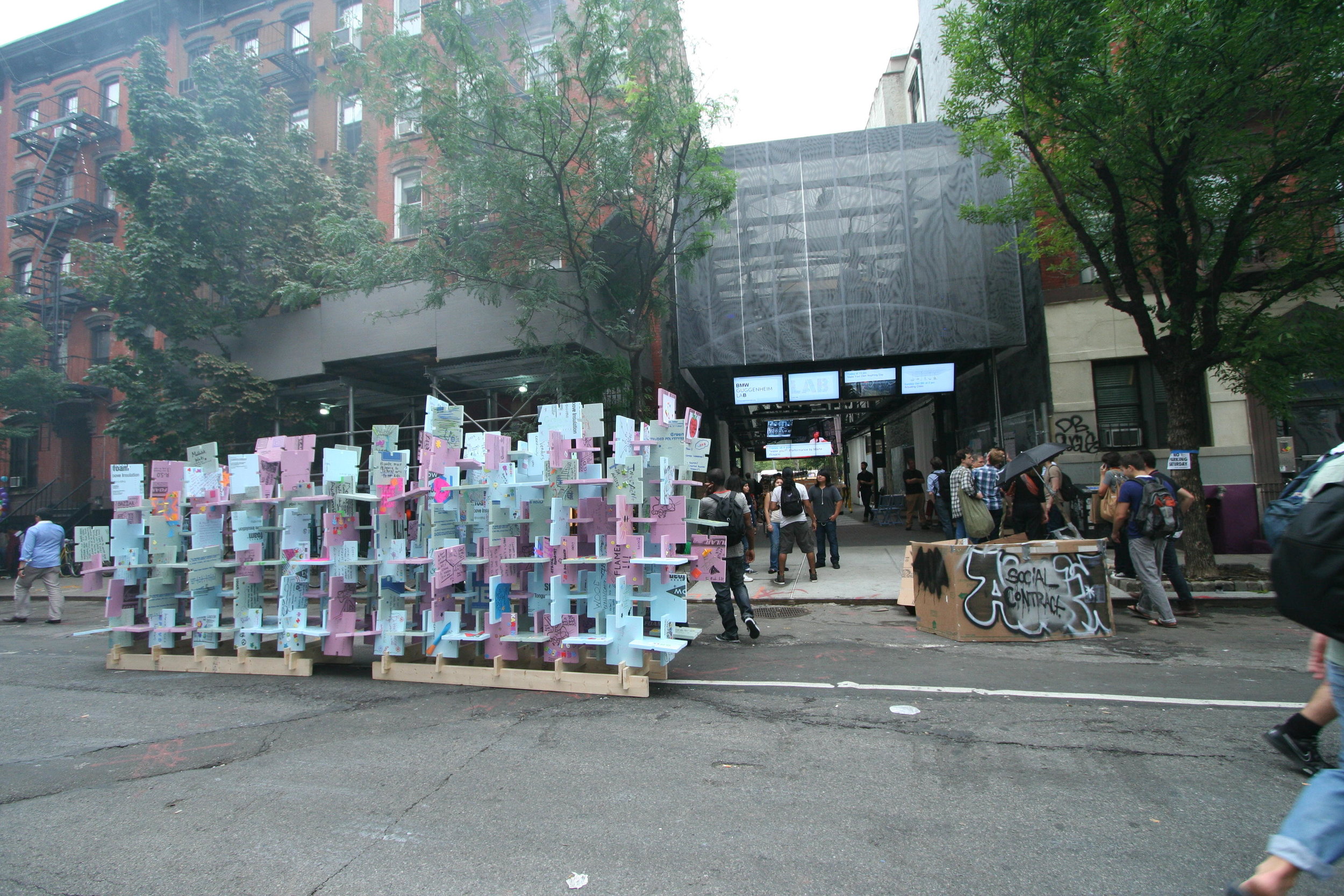

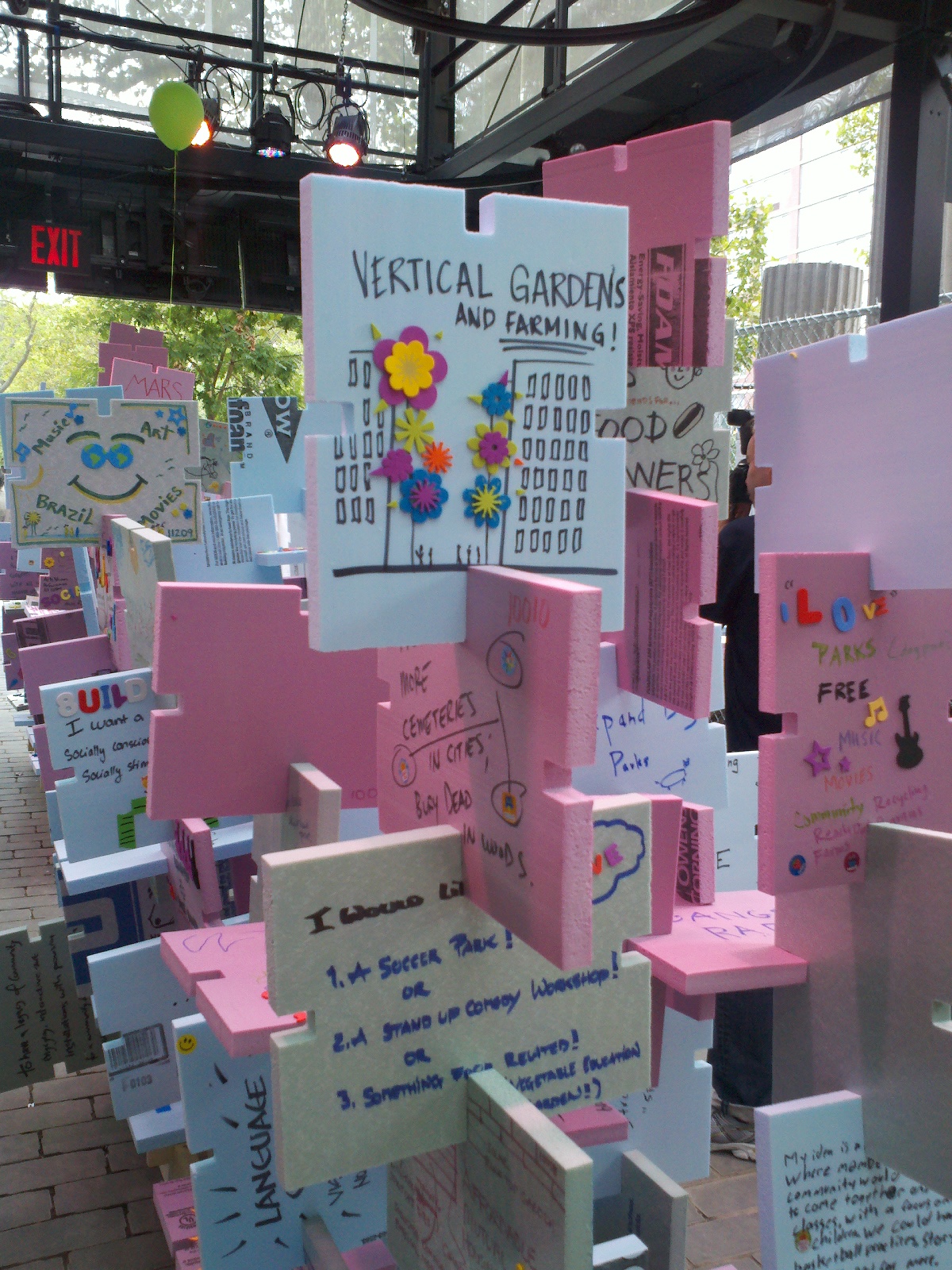




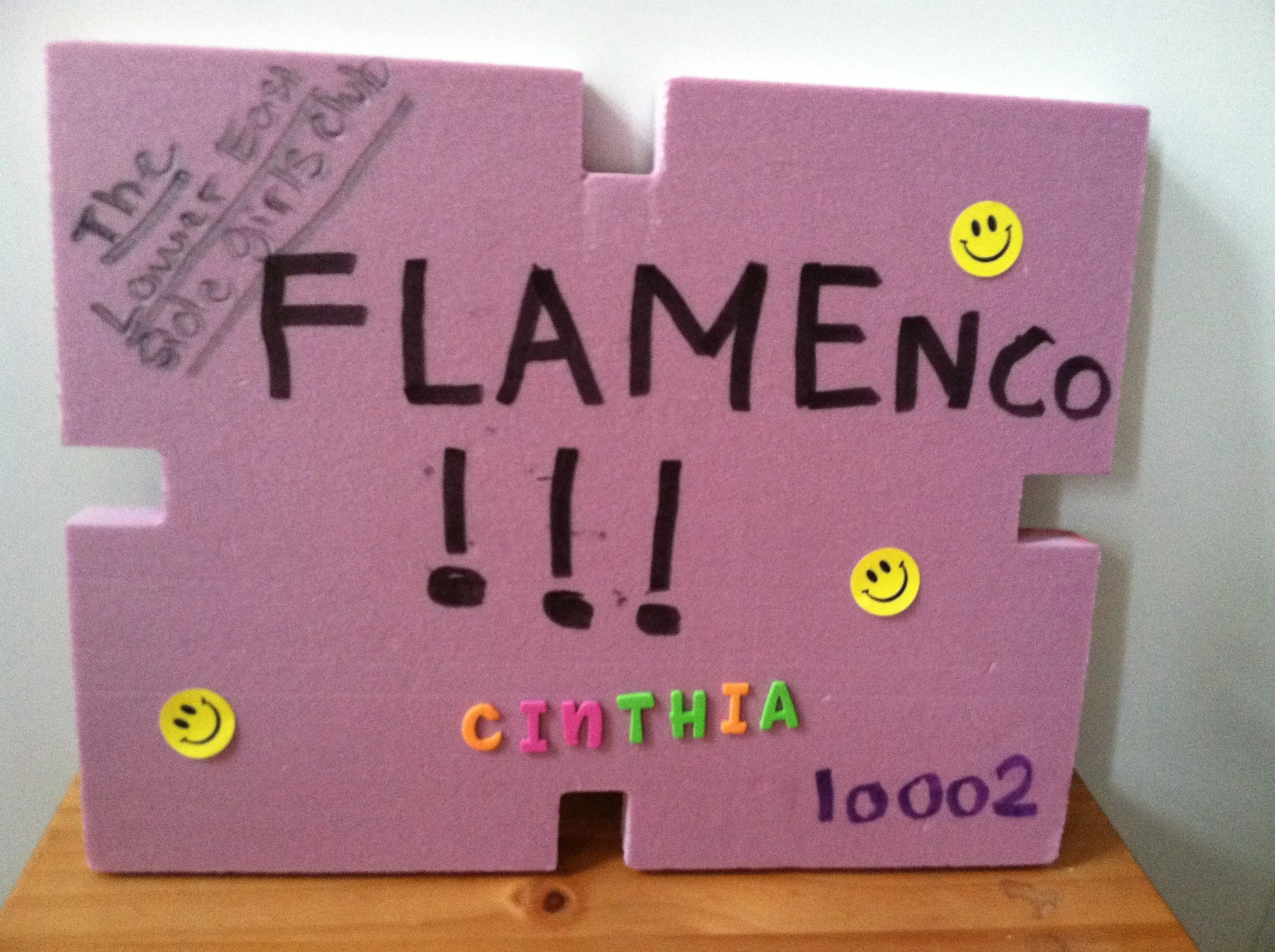
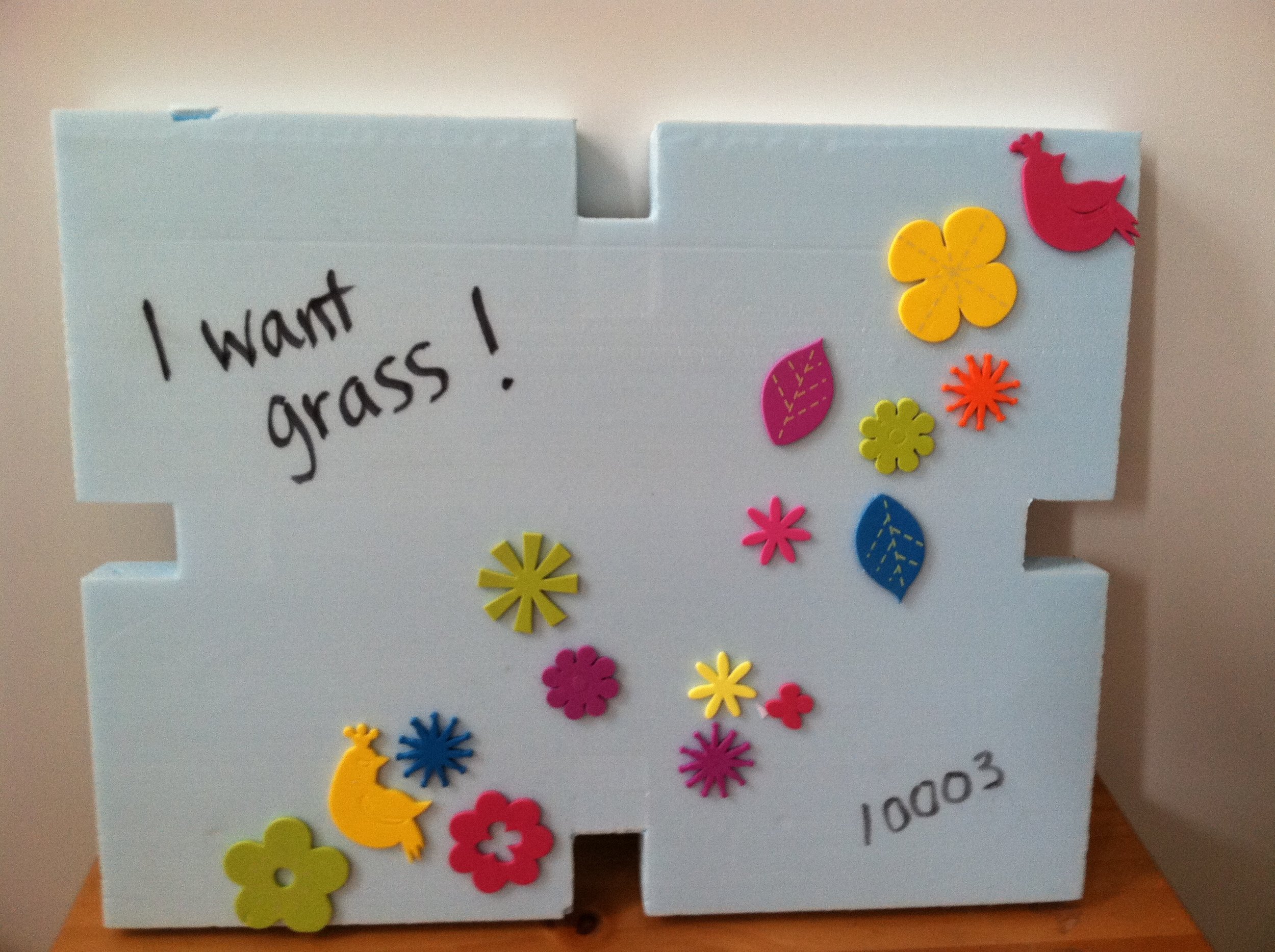
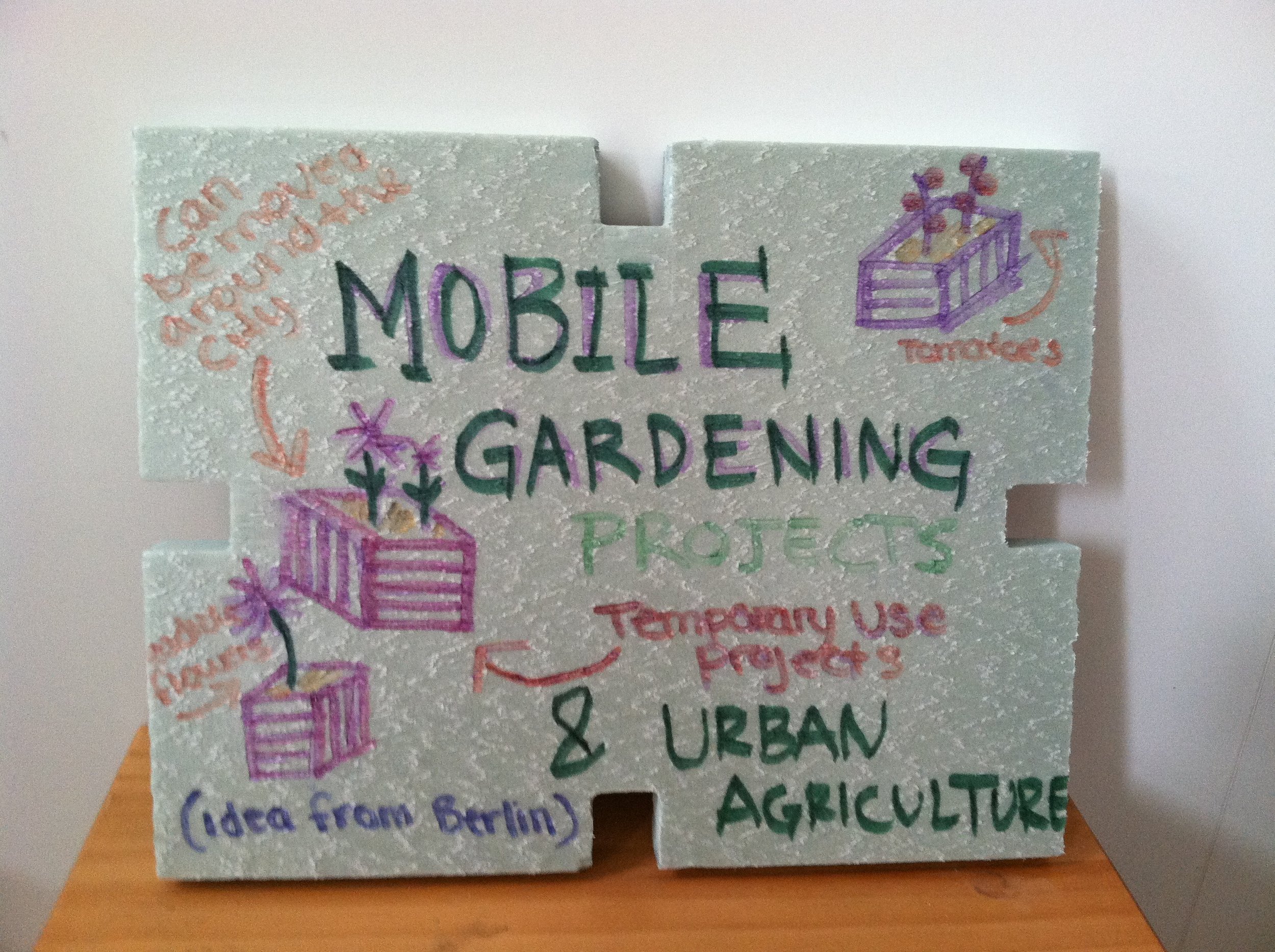
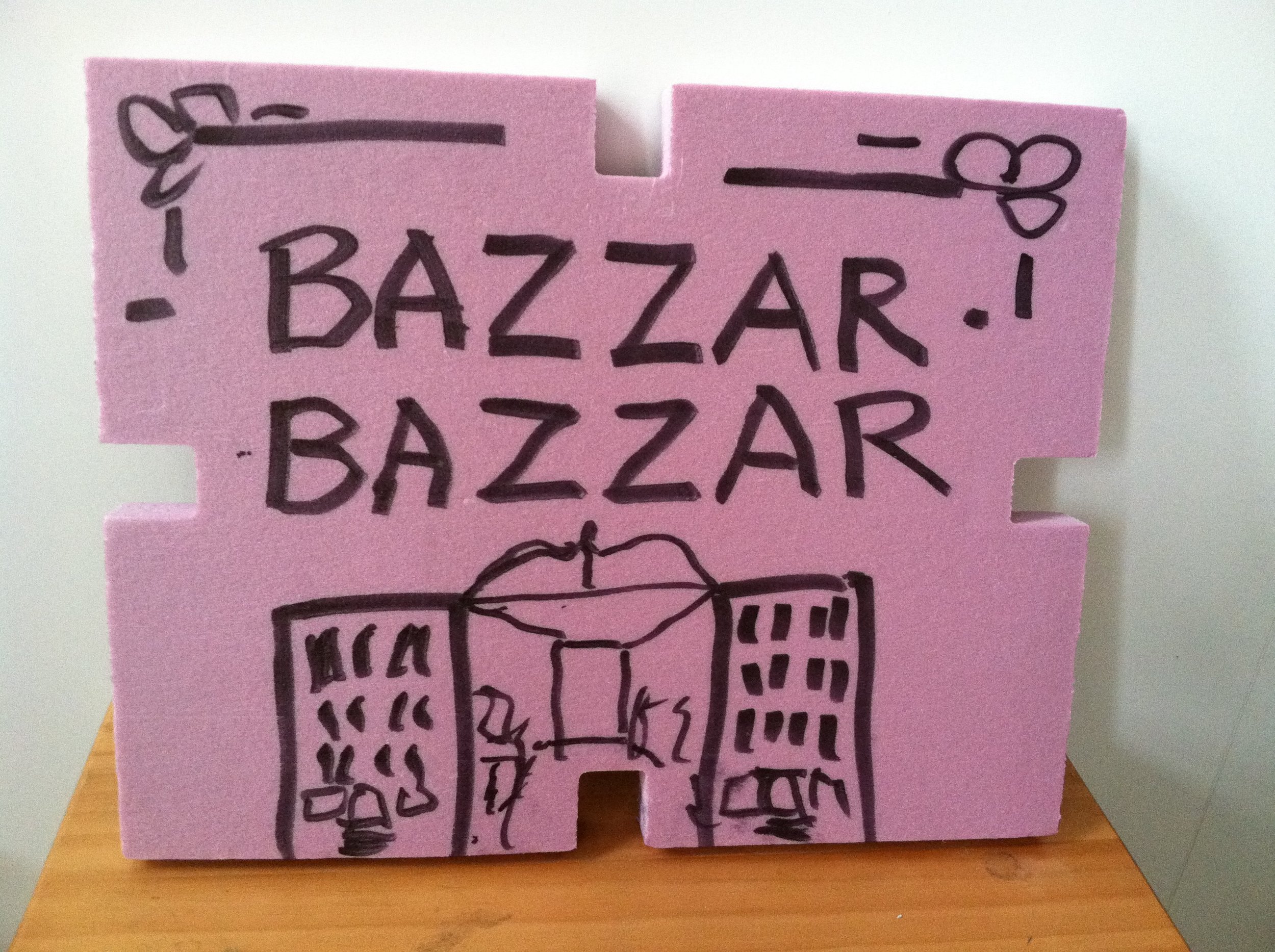
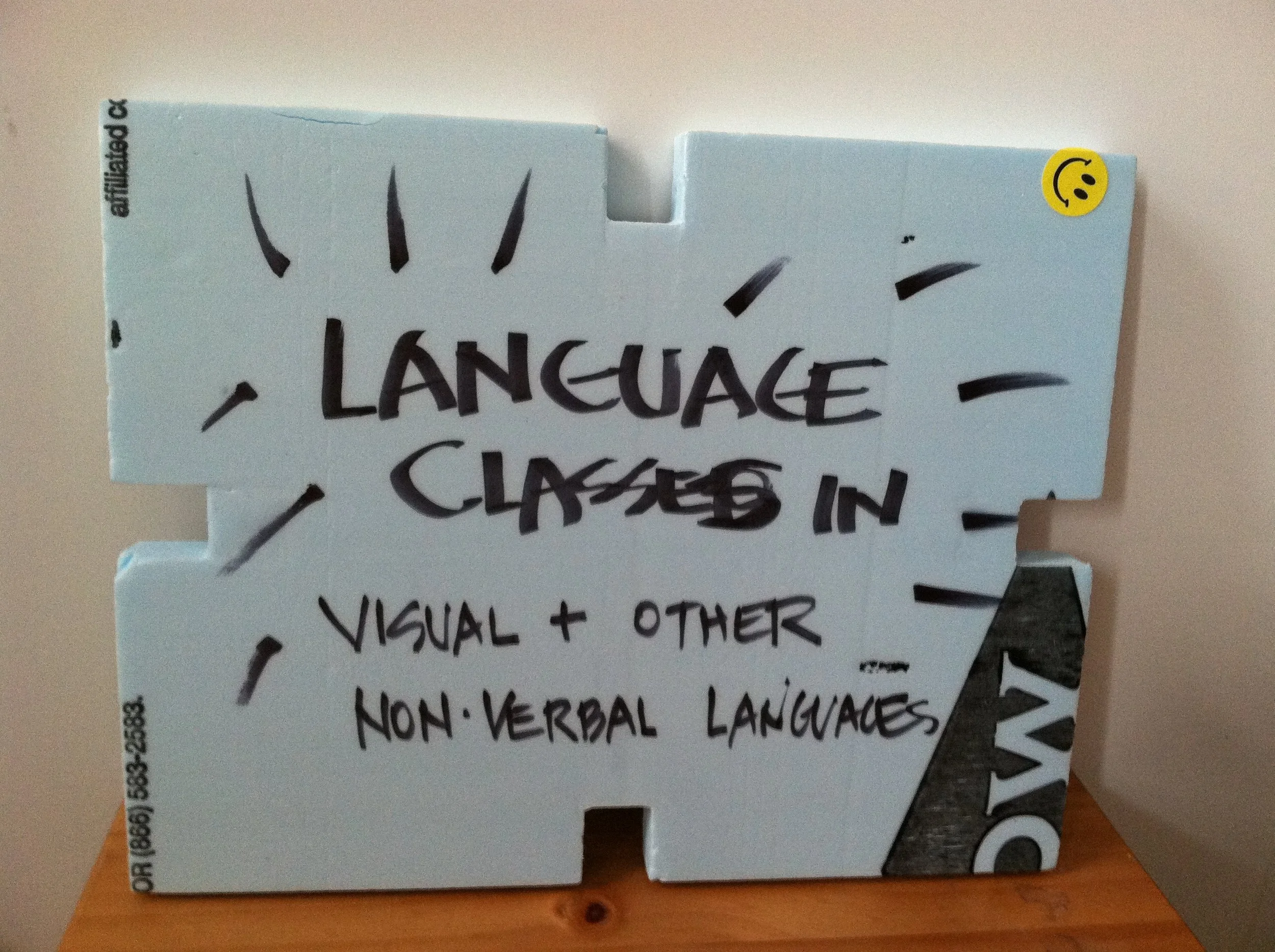
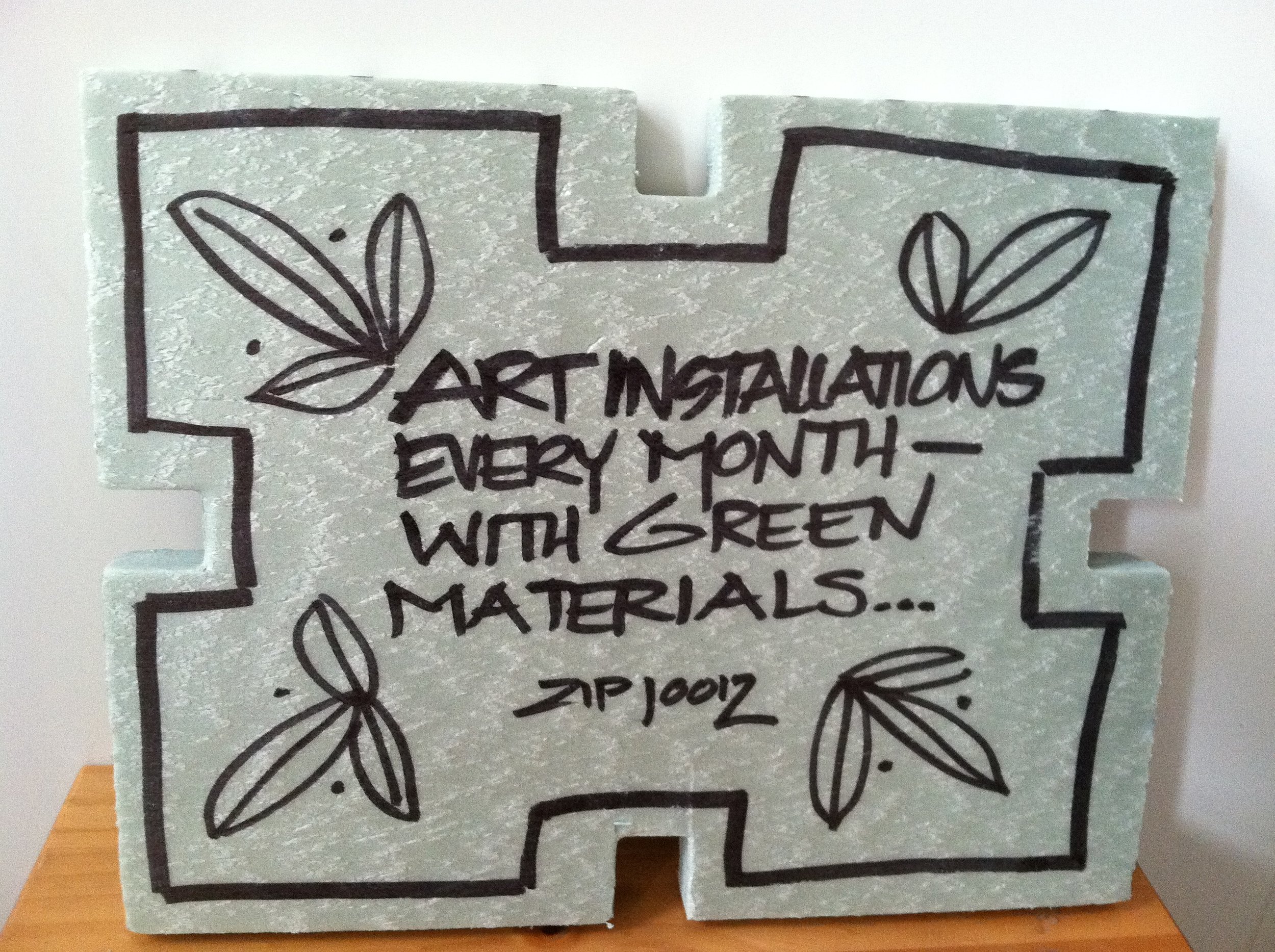

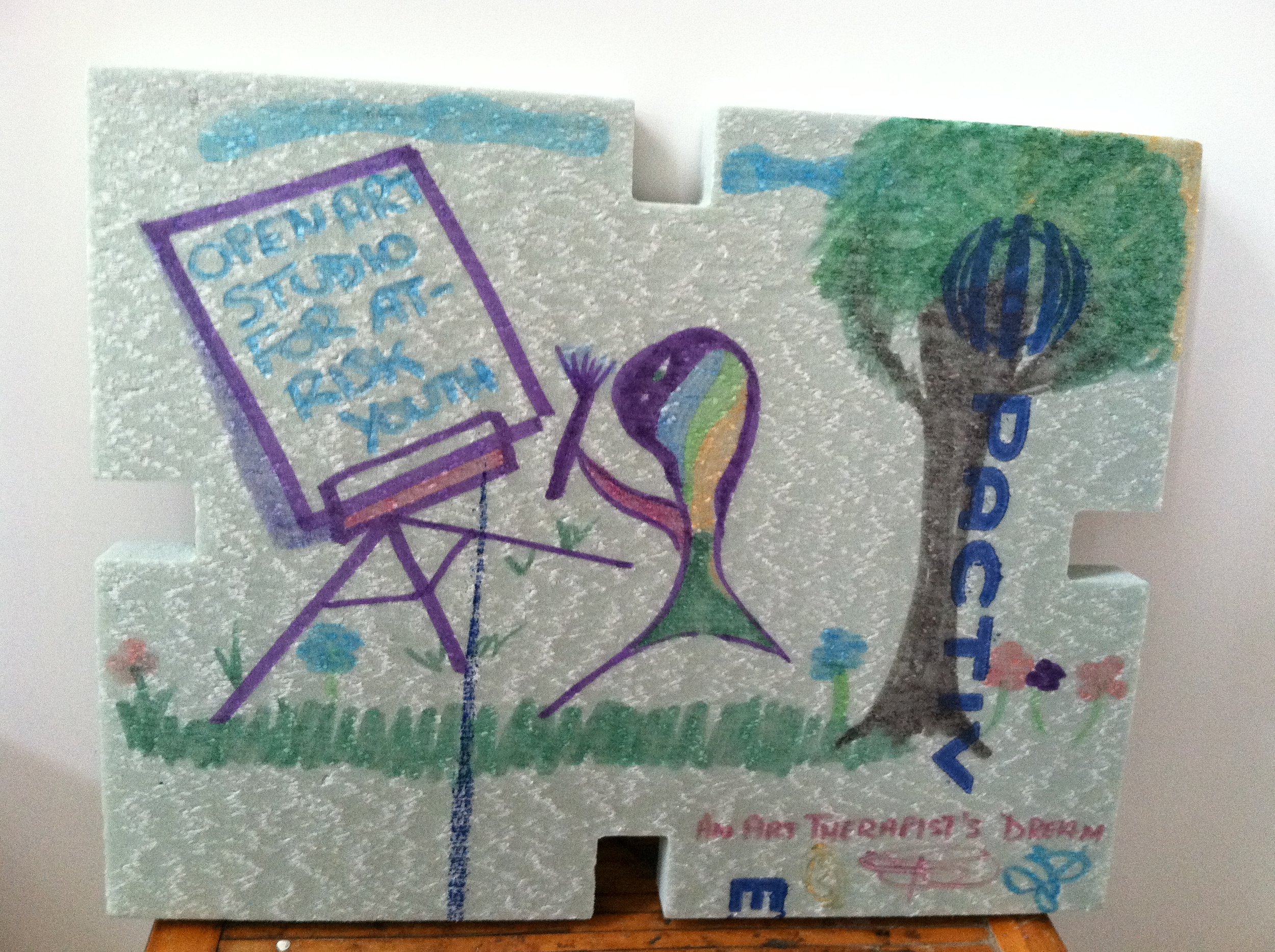
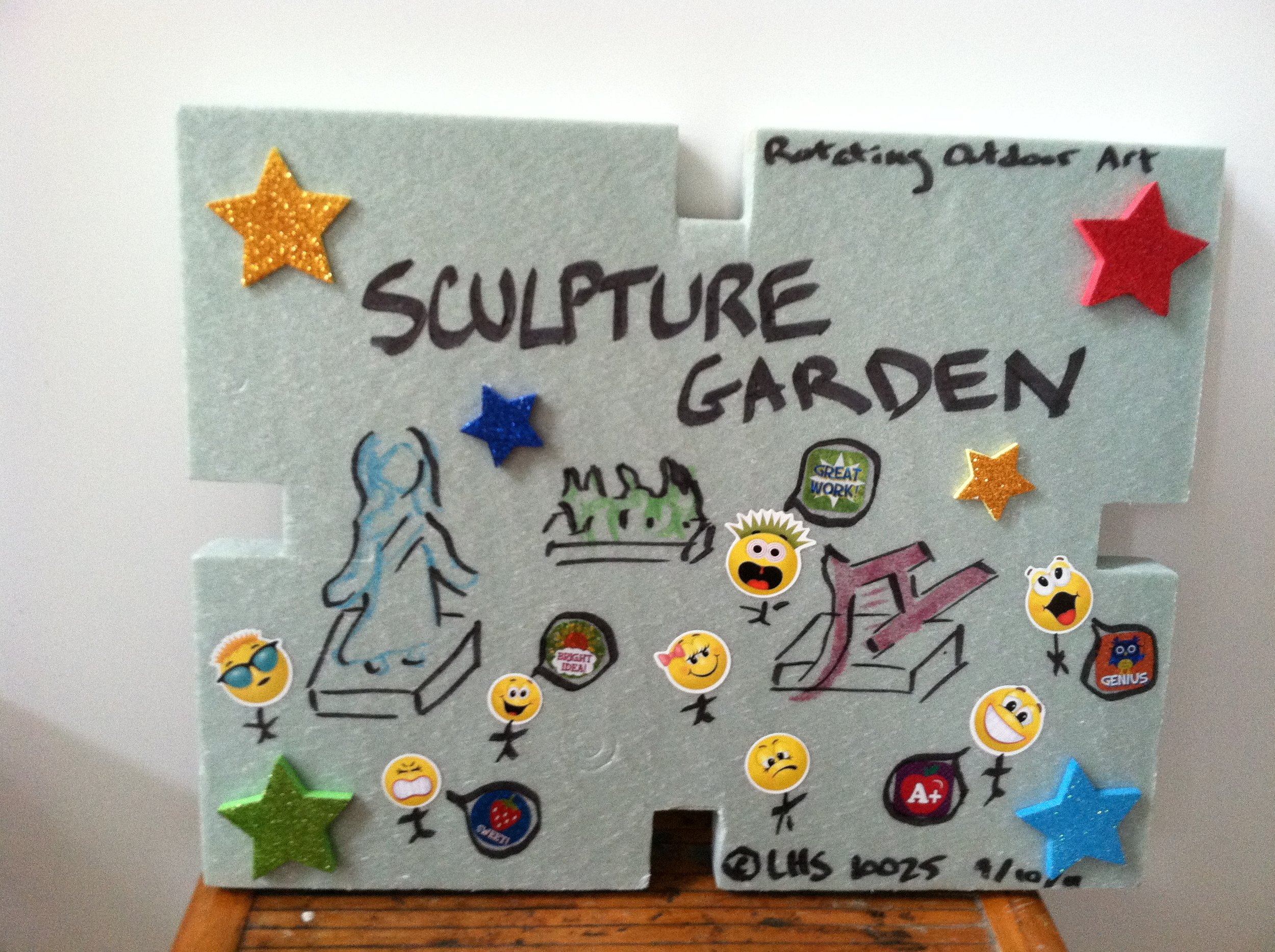
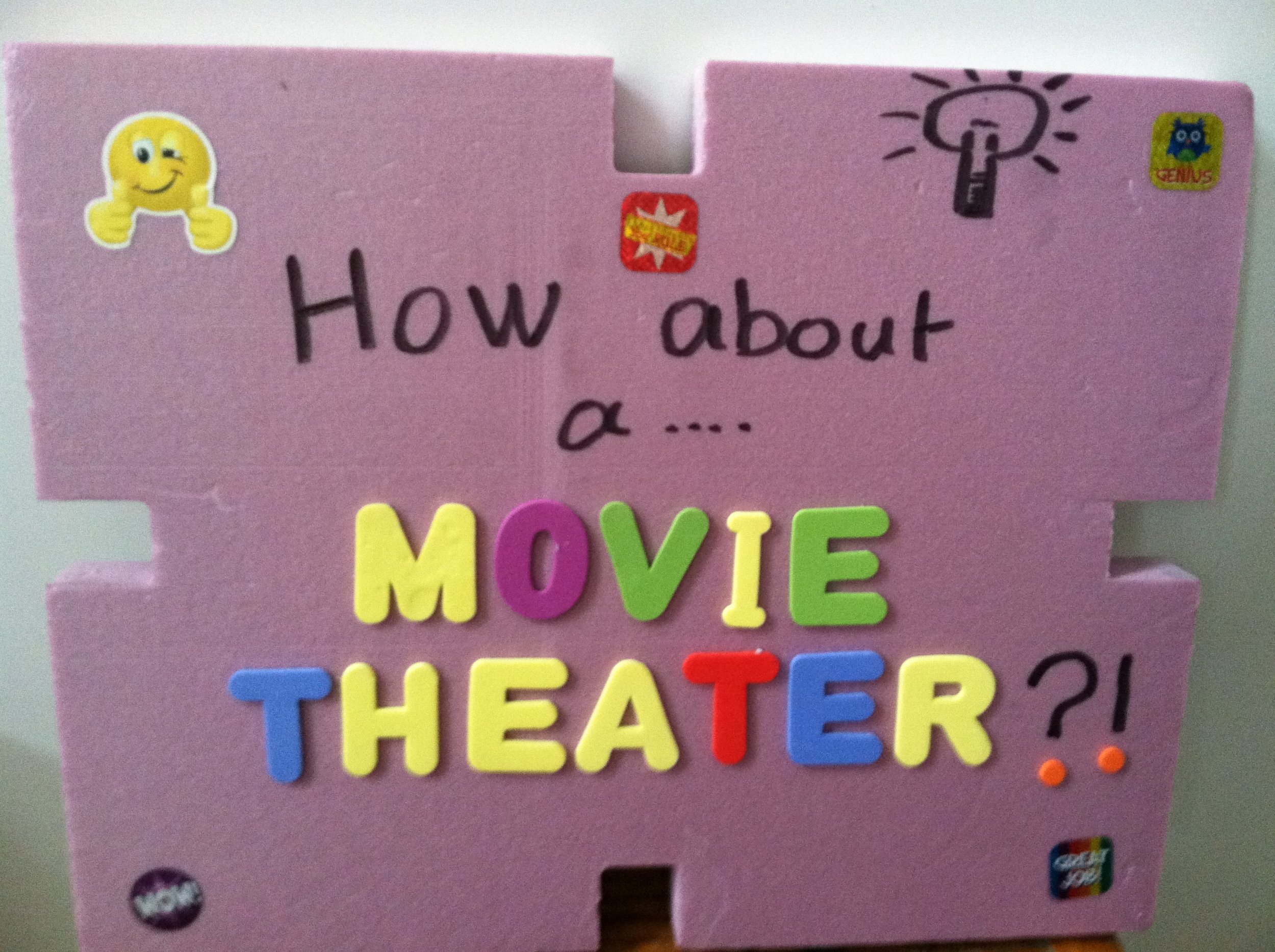



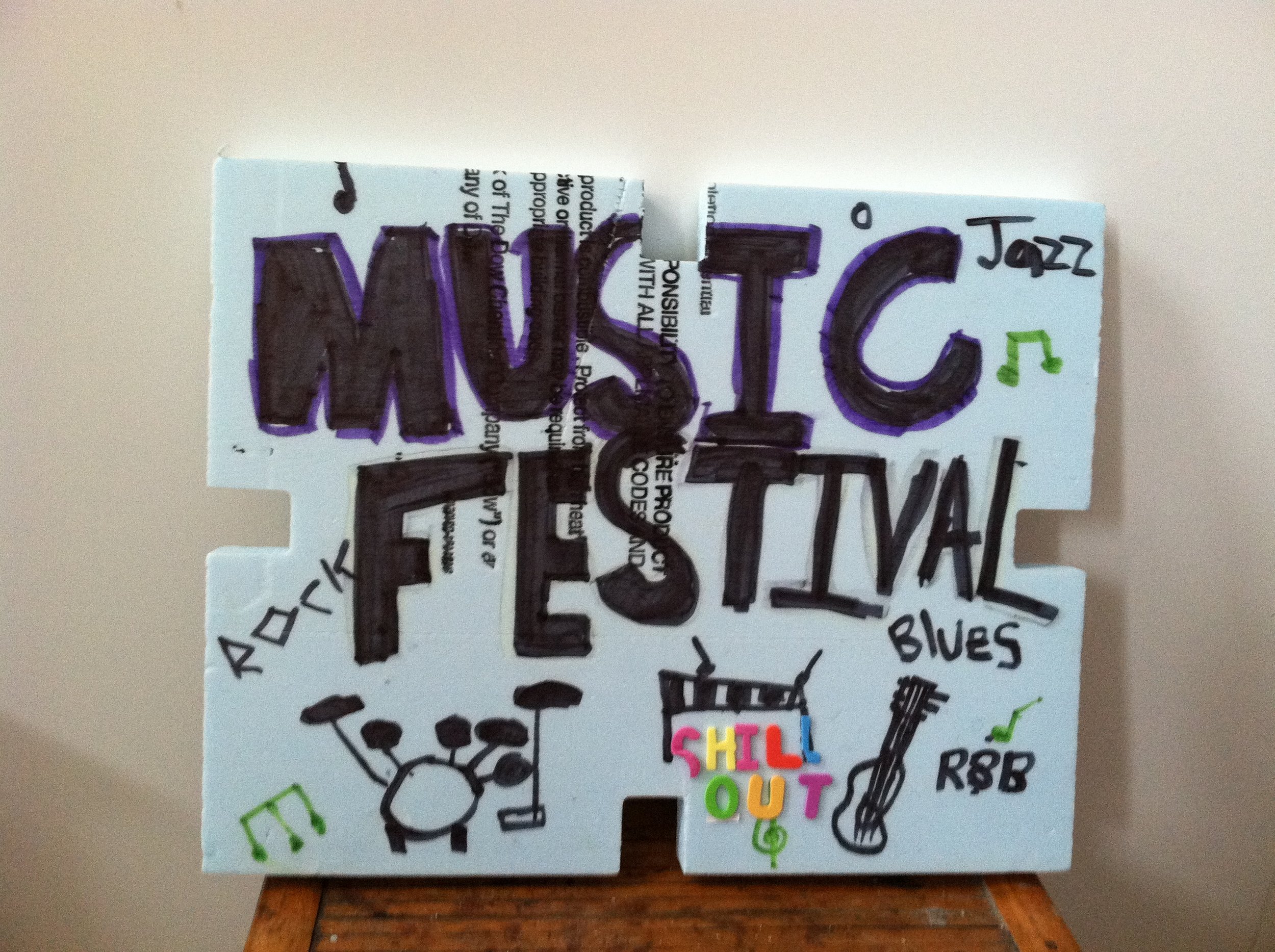
SELECTED ANNOUNCEMENTS
INSTALLATION - IDEAS CITY with ETH Zurich & THE NEW MUSEUM - 2015
ETH Zurich, revisits New York City bringing a cutting-edge artifact of the future to the East Village: A pavilion made of waste materials. Recasting "trash" as a valuable asset, the ETH Zurich Future Garden and Pavilion redefines the notion of waste by acknowledging its value as a resource. As a producing partner for the New Museum's IDEAS CITY Festival, ETH Zurich will curate a 3-day program of events from May 28 – 30th , 2015 in the First Street Green.
INSTALLATION - 12X12 with WORLD POLICY INSTITUTE & FABnyc - 2013
Fourth Arts Block (FABnyc) in partnership with World Policy Institute, First Street Green, NYC Parks, and New York City artists, will present WPI’s second installation of The 12x12 Project at First Park, 33 E. 1st Street, in Manhattan’s East Village. An opening event, cosponsored by First Street Green and FABnyc, will kick off the Manhattan installation on August 10 from 5-7PM. The installation will be open to the public Tuesdays through Sundays from 12:00pm to 7:00pm August 6 through September 1, 2013.
The 12x12 Project originated from a book by author and WPI Senior Fellow, William Powers. Powers chronicled his season living in a “tiny house” in the 2010 award-winning, national “green living” bestseller: Twelve by Twelve: A One Room Cabin, Off the Grid & Beyond the American Dream. Inspired by the book, artists Betsy Damon, Simon Draper, Erik Ajemian and Christy Rupp formed a creative team to engage the public in dialogue about how smarter consumption might change their lives—and the planet.
INSTALLATION - URBAN FOREST with SUPERFRONT - 2013
Urban Forest was designed by architects Jieun Yang and Ji Young Kim. Urban Forest is a threshold where fast-paced urban life and the slow meandering of a natural oasis are extended and integrated. As a facilitator of public exchange and movement, the pavilion reflects the intimacy of bodily interaction and accentuates urban and community context. Urban Forest is a network of flexible responses to the changing time, weather, and environment that subverts the fixed nature of the architectural form and embraces the agility of urban life.
SELECTED MURALS
SELECTED SCULPTURES
Artists featured below by order: Anthony Heinz, Rudy Shephard, Santhori, Sirin, Vedran Misic, Aaron Schraeter, Sestok, Henry Kielmanowicz, Stuart Ringholt.
SELECTED EVENTS
Our collaborators include Audio Visual Arts, Arts for Art, Bowery Babes, Ciotat Studio, Centrefuge, Cre8tive you THINK, Crosby Street Gallery, DesigNYC, Downtown Art
ETH Zurich, expoTENtial, First Street Block Association, Make Music New York, Movement Research, New Museum, Osmos, Soto Velez Clemente, Superfront, The Lower Eastside Girls Club, The Drawing Center, Thrivenyc, Time’s Up and many others.








